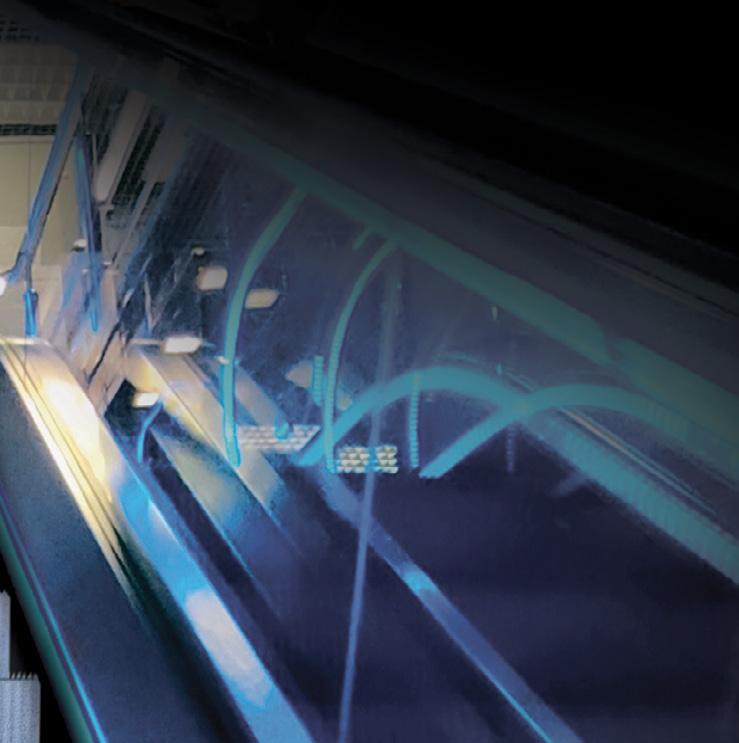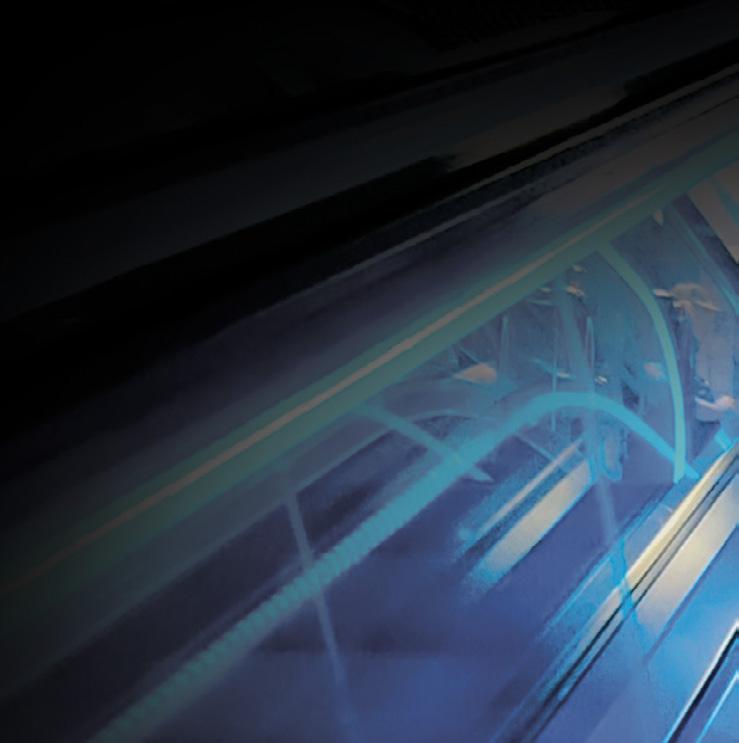






























































07

The brief











An insight into the news and trends shaping the region with perceptive commentary and analysis




We look at the emerging trends in transportation and logistics, including shared mobility solutions, hyperautomation and electification

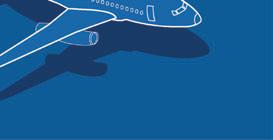
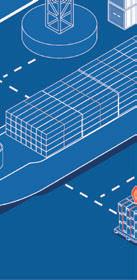

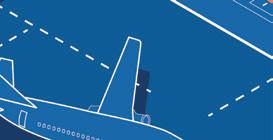


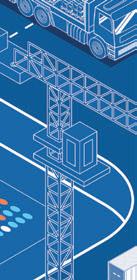



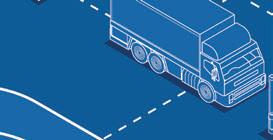


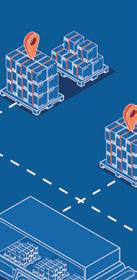





Group CEO Karim Awad shares how EFG Holding has created a cohesive ecosystem of businesses that o er complete financial solutions
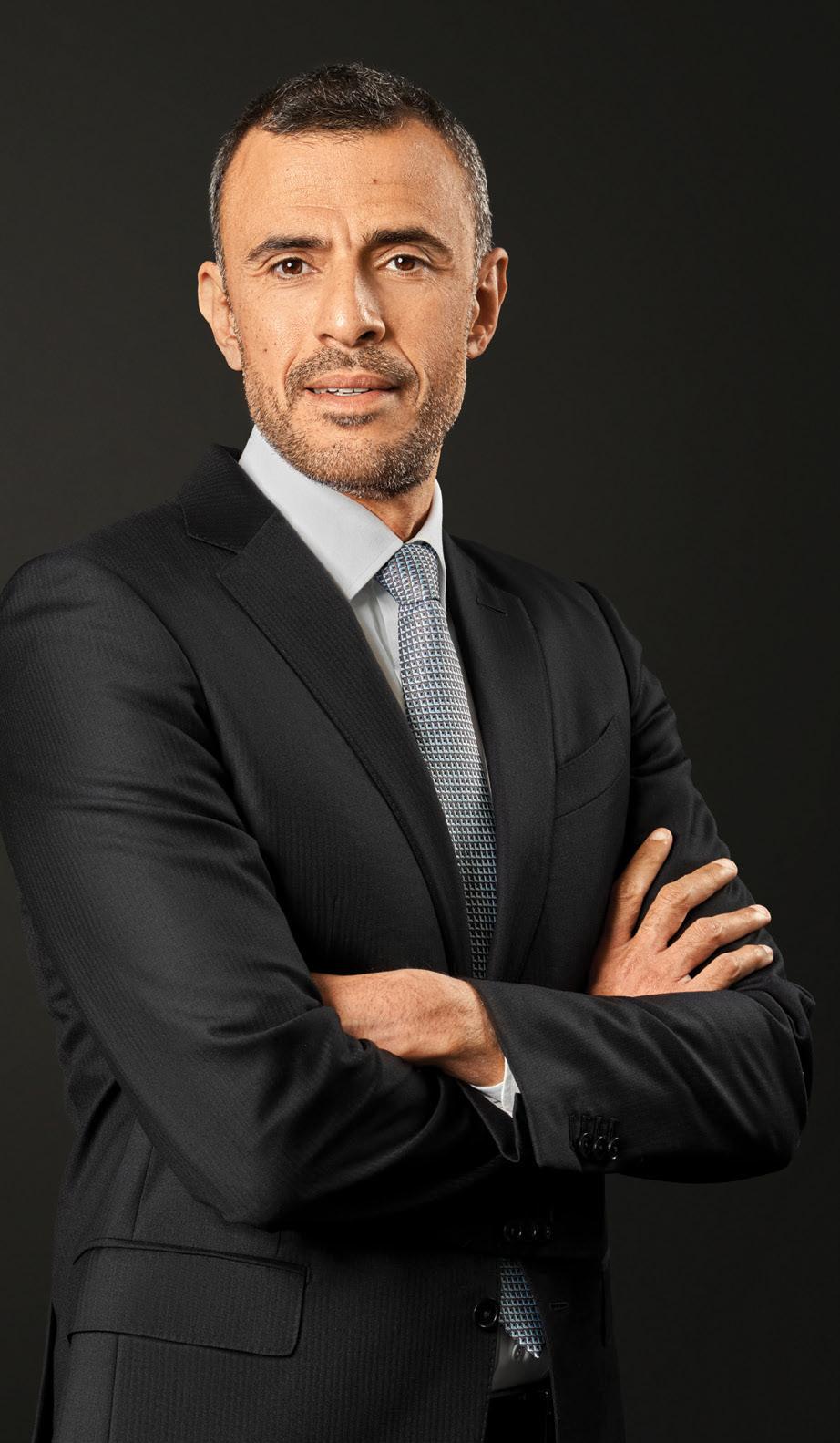










Whether you are looking to record, edit or manage your podcast, our fully equipped podcast and video recording studio has it all.

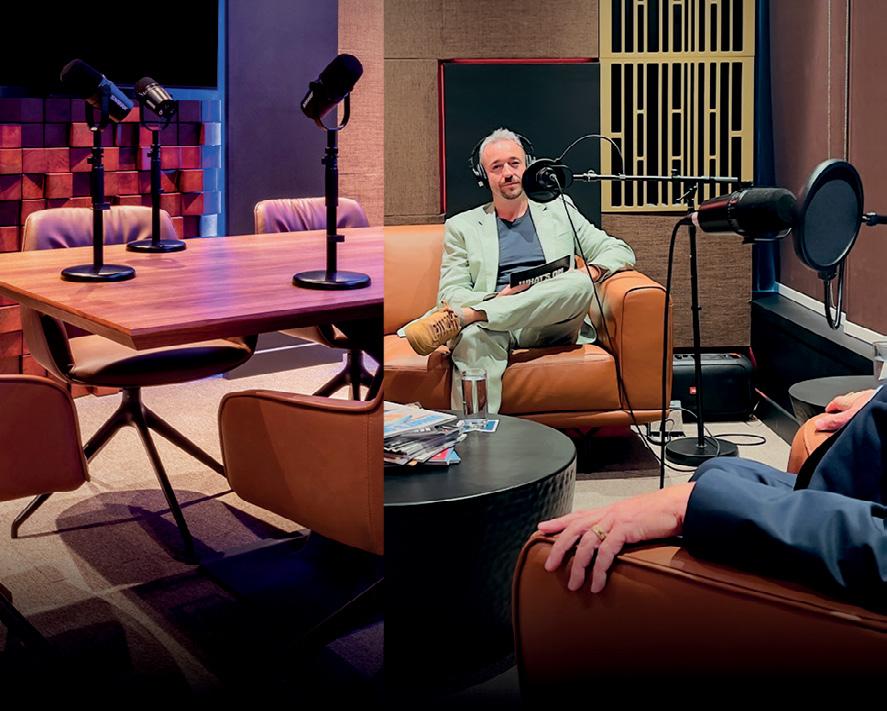
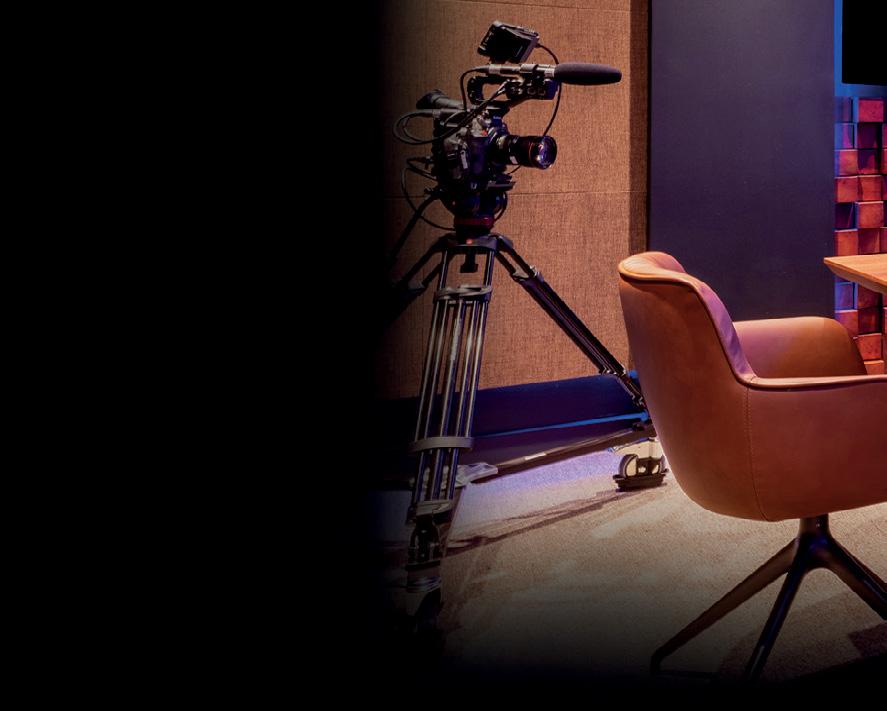

Editor-in-chief Obaid Humaid Al Tayer
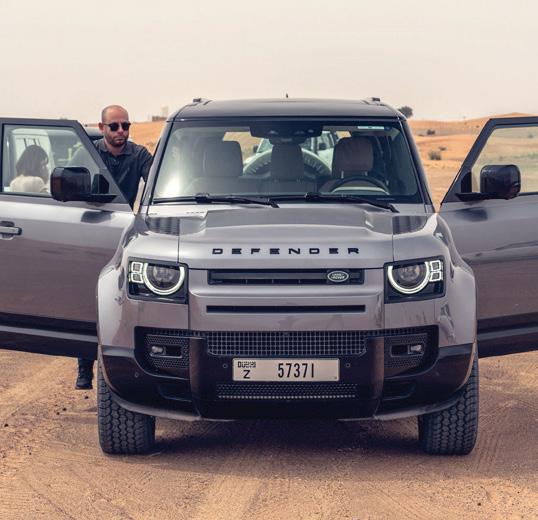
Managing partner and group editor Ian Fairservice
Chief commercial officer Anthony Milne anthony@motivate.ae
Publisher Manish Chopra manish.chopra@motivate.ae
Editor Neesha Salian neesha.salian@motivate.ae
Digital editor Marisha Singh marisha.singh@motivate.ae
Tech editor Divsha Bhat divsha.bhat@motivate.ae
Senior feature writer Kudakwashe Muzoriwa
Kudakwashe.Muzoriwa@motivate.ae
Senior art director Freddie N. Colinares freddie@motivate.ae
Senior art director Olga Petroff olga.petroff@motivate.ae
Interviews with entrepreneurs and insights from experts on how the regional SME ecosystem is evolving


General manager – production S Sunil Kumar
Production manager Binu Purandaran
Production supervisor Venita Pinto
Group sales manager Mansi Khatwani Mansi.Khatwani@motivate.ae
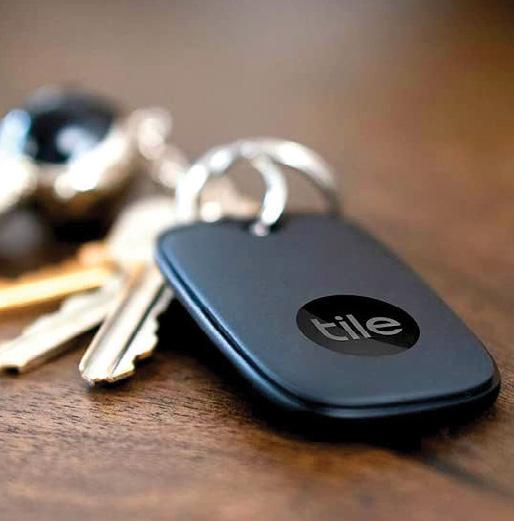
Senior sales manager Sangeetha J S Sangeetha.js@motivate.ae
Group marketing manager Joelle AlBeaino joelle.albeaino@motivate.ae
Cover: Freddie N Colinares
“The completion of the fifth phase [on June 18] of the Mohammed bin Rashid Al Maktoum Solar Park takes us another major step closer to realising our vision for an economy fully powered by clean energy.”
Sheikh Mohammed bin Rashid Al Maktoum, Vice President and Prime Minister of the UAE and Ruler of Dubai





































































































































































































































































Low-carbon solutions are products, services and technologies with a small carbon footprint that can serve as alternative energy sources or instruments for decarbonising operations and consumption. These o erings are divided into six categories: hydrogen and ammonia, carbon capture, utilisation, and storage (CCUS), bioenergy, green mobility and battery electric storage, decarbonisation technologies and renewable energy.
The possibility has not been overlooked by O&G businesses, which are developing LCS to diversify their operations and assure future revenue flow. Integrated energy companies (IECs), supermajors, international oil companies (IOCs), and national oil companies (NOCs) are all entering the game.











As the race to net zero accelerates, low-carbon solutions (LCS) are rapidly becoming the key new growth opportunity for oil and gas (O&G) production-focused enterprises. According to the International Energy Agency, achieving net zero emissions by 2050 will require annual clean energy investment worldwide to increase to around $4tn by 2030, triple the current amount of investments. Companies with the appropriate expertise stand to gain significantly.
As competition in the LCS sector intensifies, the most evolved players distinguish themselves economically and organisationally from their colleagues. Companies that prioritise enhancing the organisational capabilities of their LCS businesses will be well-positioned to capitalise on the potential. Those who do not, risk falling behind the pack.
Except for a temporary slowdown during the height of the Covid-19 pandemic in 2020 and 2021, O&G investments in LCS have increased rapidly over the past five years, and all signs indicate that the pace of investment will continue to accelerate.
For instance, news about one of the region’s NOCs building on the success of the region’s first CCUS facility, to increase its CO2 capture capacity by over 500 per cent, to approximately five million tonnes


per year by 2030. Another example of a NOC in the Middle East is the drive towards large-scale investments and building key domestic, regional, and international partnerships, to enable a stable and inclusive energy transition that meets the world’s need for energy with lower emissions.
Diving deeper, there are four distinct organisational models that companies have deployed in support of low-carbon pursuits:
Operating as centres of excellence, the LCS teams are limited to engaging in strategy and business development. Sta ed with 20 people at most, teams report to the COO or lower and have no P&L ownership. Companies that follow this model rely heavily on external stakeholders through partnerships or venturing because they have limited in-house capabilities. This is the least-mature organisational model.
The LCS teams are housed with the most relevant existing business entity. For example, CCUS is housed with the geosciences group and biofuels with retail. This approach leverages existing engineering, technology, and project execution capabilities. The LCS teams report at the COO or CFO level and have limited or no P&L ownership. Companies that adopt capability-aligned LCS entities usually don’t yet consider these activities as the core.
The LCS teams are hosted in standalone entities to ensure that their strategic agenda aligns with their markets and customers. The LCS entities have P&L ownership and o ten report directly to the CEO. In this structure, the LCS teams have primary responsibility for handling all core activities for the segment, but they may leverage other segments for some functions.
In this setup, the LCS teams operate as separate entities. They may operate under a di erent CEO and board of directors, and they are fully sta ed for operational and support functions. Companies use this model when their goal is to carve out LCS activities for divestment or to attract investors.
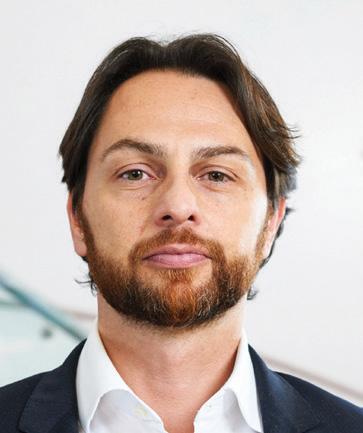
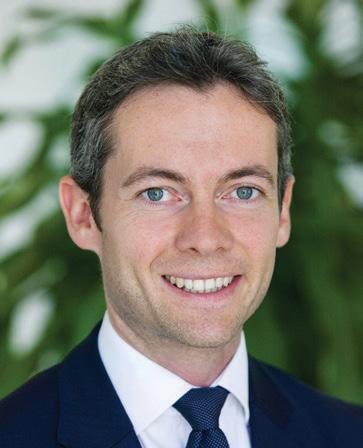
No matter how much progress their companies have made in the journey, CEOs and CSOs should consistently keep three priorities in mind over the next few years:
01IExplore new go-to-market strategies via new partnerships, ventures and potential inorganic acquisitions. Entering LCS markets impels companies to explore new types of partnerships across sectors. To be successful, players need to thoroughly define new partnerships and commercial models.
02 I Increase organisational flexibility to fit new low-carbon businesses. Scaling up requires companies to change their organisational structures, project development processes, and technology investment decision-making to better align with low-carbon businesses.
03IHire and upskill to scale up the business. Expanding current capabilities and skill sets to achieve commercial success in the low-carbon space entails developing existing resources and attracting new talent with deep technological, partnering, and regulatory expertise. The International Labor Organization predicts that greening the global economy will yield a net increase of 18 million jobs by 2030. Oil and gas companies must act quickly to ensure that their LCS teams have the necessary skill sets. LCS represents a brand-new frontier with tremendous development potential for O&G firms in the next years. Those who prioritise developing organisational maturity to accept such solutions will be in the best position to capitalise on this opportunity.
“EXPANDING CURRENT CAPABILITIES AND SKILL SETS TO ACHIEVE COMMERCIAL SUCCESS IN THE LOW-CARBON SPACE ENTAILS DEVELOPING EXISTING RESOURCES AND ATTRACTING NEW TALENT WITH DEEP TECHNOLOGICAL, PARTNERING AND REGULATORY EXPERTISE”Bjoern Ewers , managing director and senior partner, and Jean-Christophe Bernardini , managing director and partner, Boston Consulting Group
GREENING THE GLOBAL ECONOMY WILL YIELD A NET INCREASE OF 18 MILLION JOBS BY 2030
Sales of smartwatches, including Apple’s top selling version, have plateaued and are no longer a significant threat to the pricier end of the Swiss watch industry, according to Morgan Stanley.
That’s because the Swiss watch sector has significantly refocused on higher-end products over the past decade, boosting prices of the best timepieces to o set an overall decline in volumes, analysts led by Edouard Aubin, said in a report.
When the Apple Watch launched in 2015, it was viewed as an existential threat to an industry which
couldn’t compete with the range of health and wellness features that smartwatches can o er.

Smartwatches are still outselling the Swiss watch market by a wide margin, with Apple selling more during one quarter than the Swiss industry does in a year. Yet volumes are starting to decline for the first time since the launch of Apple Watch, with smartwatch unit sales down 17 per cent year-over-year in the fourth quarter of 2022 and Apple units falling 16 per cent.
“Overall, going forward we think the incremental negative impact of smartwatches on the Swiss watches industry will now be relatively immaterial, with the exception of some brands such as Tissot and Rado,” the Morgan Stanley analysts said.
Compound annual growth rate in the Swiss watch industry is likely to gradually converge toward
about 7 per cent in time, mirroring the personal luxury goods sector, they added.
The industry enjoyed its best year ever in 2022 by value, driven by a renaissance in demand for mechanical timepieces particularly in the US, with overall exports climbing by 11.8 per cent to CHF24.8bn ($28bn).

Morgan Stanley expects Swiss watch export volumes to rise by as many as one million units this year, though the majority of the increase will come from the Swatch Group’s MoonSwatch – the highly successful collaboration – between the Omega and Swatch brands. Morgan Stanley expects about 1.8 million MoonSwatches to be sold in 2023, up from one million in 2022.

Now priced at about CHF270, the MoonSwatch is breaking the cycle of declining volumes for cheaper, quartz-driven Swiss watches.
While the number of mechanical watches exported is down by 2.1 million units since 2014, the contraction of quartz watches is far more severe. There were 10.7 million fewer Swiss quartz watches exported in 2022 compared to 2014, Morgan Stanley estimates.
“OVERALL,
WE THINK THE INCREMENTAL NEGATIVE IMPACT OF SMARTWATCHES ON THE SWISS WATCHES INDUSTRY WILL NOW BE RELATIVELY IMMATERIAL, WITH THE EXCEPTION OF SOME BRANDS SUCH AS TISSOT AND RADO”



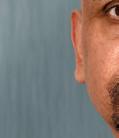


Globally, organisations have been making much noise on diversity, equity and inclusion (DEI) for some time, but how many of them have implemented these initiatives correctly and reaped real benefits of DEI? Enterprises that prioritise diversity and inclusion have a competitive advantage. These organisations recognise the value of a diverse workforce in driving innovation, fostering creativity and enhancing business outcomes. There is enough research evidence for this.
A McKinsey study found that companies with more diverse executive teams outperformed their industry peers in terms of profitability and financial performance. Research published by Harvard Business Review (HBR) also found a positive correlation between diversity and innovation, with diverse teams generating more innovative ideas and better business outcomes.


Diversity, equity and inclusion initiatives contribute to higher levels of employee engagement, satisfaction and retention. According to a Deloitte survey, employees who feel included and valued are more engaged and demonstrate a stronger commitment to their organisations. Another study by global non-profit think tank Coqual (formerly the Center for Talent Innovation) found that employees
in inclusive workplaces are more likely to stay with their current employer and be more productive.
Diverse teams lead to better decisionmaking. Research published in the HBR says that diverse and inclusive organisations are better positioned to understand and cater to diverse customer needs. Boston Consulting Group also found that companies with more diverse management teams had higher levels of innovation and captured a larger share of the market.
However, the specific outcomes of DEI initiatives vary depending on factors such as organisational context, implementation strategies, and ongoing commitment. Creating a truly inclusive workplace is not easy. It requires a commitment from top leadership, as well as a willingness to change the way that people think about and interact with each other.
There are a number of organisations that have done a good job of implementing DEI initiatives. Accenture has a long history of commitment to diversity and inclusion. In 2022, it was ranked number one on DiversityInc’s Top 50 Companies for Diversity. Johnson & Johnson, which is second on the list, has a strong commitment to diversity. The third place belongs to Kaiser Permanente, a healthcare company.


Leadership commitment is essential. Leadership plays a pivotal role in driving DEI. When leaders actively support and promote diversity initiatives, it sends a clear message throughout the organisation. These organisations establish policies and practices that remove biases, promote equal opportunities, and create a level playing field for all employees. This includes fair hiring processes, transparent performance evaluations, and equitable compensation structures.
Diversity and inclusion are not just about race and ethnicity. Diversity and inclusion encompasses a wide range of factors, including race, ethnicity, gender, age, disability and religion. Organisations need to be inclusive of all employees, regardless of their background.
DEI initiatives should be ongoing. DEI is not a one-time project. It is an ongoing process that requires continuous e ort. Organisations need to be committed to creating a culture of inclusion and to continuously evaluating these initiatives.
Data can be used to track progress and identify
According to research, companies with more diverse management teams had higher levels of performance and innovationILLUSTRATION: GETTY IMAGES/ANNASPOKA Dr M Muneer, co-founder of the nonprofit Medici Institute



areas for improvement. Organisations can use data to track their progress on DEI and identify areas where they can improve. This data can be used to set goals, measure progress, and identify areas for improvement.
DEI training can help to raise awareness of issues and promote inclusive behaviour. Organisations should provide such training to all employees and the training should cover topics such as unconscious bias, microaggressions, and inclusive communication.



Employee resource groups (ERGs) can play a valuable role in promoting DEI. ERGs are employeeled groups that provide support and networking opportunities for employees from underrepresented groups. These groups can play a valuable role in promoting DEI by raising awareness of issues, providing a safe space for employees to share their experiences, and advocating for change.
Pay equity is important for creating a fair and inclusive workplace. Organisations should ensure that all employees are paid fairly, regardless of their gender, race, ethnicity or other protected characteristics.
Work-life balance is essential for attracting and retaining employees from a variety of backgrounds. Organisations should o er flexible work arrangements and other benefits that help employees balance their work and personal lives.
Open communication is critical for creating a culture of inclusion. Organisations should create a culture of open communication where employees feel comfortable sharing their ideas and concerns. This can help to identify and address any potential barriers to diversity and inclusion.
In addition to the above, setting clear goals and metrics to measure progress are also important for proper implementation. By following these best practices, GCC companies can progress fast in their DEI journey. Here are some additional tips for them:
01 Partner with local organisations: There are a number of local organisations that can help GCC companies with their DEI e orts. These organisations can provide training, resources, and support.







02 Be transparent: Enterprises here should be transparent about their DEI e orts. This means publishing data on diversity and inclusion, as well as sharing stories about the impact of such initiatives.

03 Celebrate diversity: Business leaders in GCC should celebrate diversity in the workplace through hosting events, creating employee resource groups, and recognising employees for their contributions.







 Alan O’Neill Managing director of Kara, change consultant and speaker
Alan O’Neill Managing director of Kara, change consultant and speaker
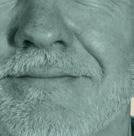


At a recent strategy refresh meeting, the team and I were exploring goals for the year ahead. Since the spike in online activity during Covid-19, we’ve been giving more airtime to digital. Based on his team’s experiences with online activities, the sales director had a lot to say about our IT platform, its functionality and challenges. The system wasn’t perfect and it was causing frustrations internally as well as among customers. However, the IT director reacted badly to the feedback. She became defensive and took the comments personally, exacerbating the conflict.
Cut to another scenario with a di erent client: I was aware that an important project was running behind schedule. The project owner was highly stressed about it and told me in advance what the obstacles were. Essential ingredients coming from the Far East were both late and more expensive than what was budgeted for. I expected him to raise this issue at a forthcoming meeting, but he didn’t. When I enquired later, he told me that he wasn’t comfortable being yelled at in front of people by the supply chain director, who he claimed was a bully. This is another example of conflict but avoided on this occasion.
I listened to a recent interview with Dr Deborah Birx, the White House Coronavirus Response Coordinator under President Donald Trump. She described the tension and misinformation that was touted during her time on the team and of course, her reaction to Trump’s ‘inject bleach’ suggestion is public knowledge. Because she told her truth to the nation, she faced the brunt of it. We also know how all of that panned out.
While my examples might be different, I’ve no doubt that these scenarios are real for many. Conflict is not just disagreement. Conflict arises when differences of opinion become protracted. When it arises, or when it is avoided or not handled effectively, it can lead to all sorts of missed deadlines. It also leads to poor morale, low engagement and unnecessary stress.
Conflict is a natural and normal part of our lives. After all, we can’t all possibly be compatible and agree on everything. We all have our own thinking styles, opinions, preferences, attitudes, perceptions and behavioural responses. I like Robert de Niro, you might prefer Tom Hanks. I like Germany, you might prefer France. I might prioritise investment in IT, you might believe that we should hire more salespeople. I might want to expand into a new territory and you might prefer to add more products to the portfolio instead. My understanding of the cause of a problem may well be different to yours.
Somehow, our organisation culture needs to reflect these differences, where healthy conflict is encouraged and enabled. Without effective conflict, groupthink can emerge. Groupthink happens when discussions in a group setting go unchallenged, leading to poor-quality decision-making.
The key to successful conflict resolution is always communication.
Manage your emotions. Control your tone and keep a level voice. Shouting will get you nowhere. Feelings of anger, hurt or sadness are sometimes unavoidable. While it’s okay to let the other party know how you feel, don’t expect them to react with sympathy. Using it as a tactic to win them over seldom works.
CHOOSE YOUR WORDS CAREFULLY IF YOU DON’T AGREE. ‘I DISAGREE WITH YOU’ OR ‘YOU’RE WRONG’ ARE MUCH MORE CONTENTIOUS THAN ‘I SEE IT DIFFERENTLY’
Listen to understand. Take time to understand the other party’s point of view. Ask questions and listen carefully without interruption. Ask even more questions for clarity, rather than to catch them out. Accept that it’s okay for others to have a different perspective from you.
Disagree kindly. Articulate your point of view clearly and concisely. Choose your words carefully if you don’t agree. ‘I disagree with you’ or ‘you’re wrong’ are much more contentious than ‘I see it differently’. With the latter, you’re owning it rather than being accusatory.
Agree to differ. Offer your point of view, but focus on practical issues, not abstract ones. ‘I think we should explore a new territory, because...’ is much more meaningful than ‘I think we should expand’. Find the areas of agreement and acknowledge them. If you still cannot agree after reasoning, then agree to differ, and let it go.
Apologise. If you are clearly wrong, then admit it. Don’t hesitate to accept your faults and be the first to apologise. Humility often goes a long way in rebuilding a relationship.
Think win-win. Have a mindset that leads to a win for both parties. What goes around often comes around. If one party feels they have unfairly lost the argument, they just may seek retribution at some other time.
For this article, I’ve concentrated on managing conflict between two peers, where hierarchy is not an issue. But of course, conflict might also occur between you and your boss. Now that can be difficult. We can only hope that your boss is a mature and confident person who is mature enough to be able to acknowledge differences, or even admit to being wrong. Otherwise, you need to be proactive and find the opportunity to deal with it. Use the organisation’s goals and values to support you. Company values determine how you should behave in given situations, so refresh them in advance. And if you link your point of view to a previously agreed business objective, that should also help.
“FEELINGS OF ANGER, HURT OR SADNESS ARE SOMETIMES UNAVOIDABLE. WHILE IT’S OKAY TO LET THE OTHER PARTY KNOW HOW YOU FEEL, DON’T EXPECT THEM TO REACT WITH SYMPATHY. USING IT AS A TACTIC TO WIN THEM OVER SELDOM WORKS”Rehan Khan, principal consultant for BT and a novelist
hasty and more demanding, seeking immediate gratification and abandoning information sources that do not deliver instantly.
Likewise, when we send a WhatsApp message and it’s not read or responded to immediately, we start to have dark thoughts about the other person – “Are they deliberately ignoring me?”, “Did I upset them?” Or when we comment on someone’s LinkedIn post and they don’t reply back immediately, we feel slighted: “Was my comment not smart enough for them?”.
Of course, the classic one is when the boss sends a group email, and after the first-person comments there is an expectation that you also need to jump in with your two-bits-worth. In other words, stop whatever you are doing, fracturing your thought process, so that you can make some trite comment and stay on the good side of your manager.
We seem to be hastier at work. Observe a random group of colleagues in the office and you’ll notice they have a habit of checking their phones every three to five minutes, irrespective of what else they might be doing at the time. Unfortunately, haste creates an attitude of impatience and immediacy.
One study collected server data from 23 million online video views. The results showed that on average viewers began to discard the video they were waiting for if it took longer than two seconds to buffer.
In addition, for every second of delay, 6 per cent more viewers clicked on something else. In other words, a ten-second delay would cause two-thirds of the viewers to abandon the video and forage for another information source.
Online retailers were always mindful of the “four second rule”, which was the time a typical online shopper was willing to wait for a website to download. This has now been compressed to a “half-second” rule, another example of how we have become
RULE’ WHICH WAS THE TIME A TYPICAL ONLINE SHOPPER WAS WILLING TO WAIT FOR A WEBSITE TO DOWNLOAD HAS NOW BEEN COMPRESSED TO THE ‘HALF-SECOND’ RULE
Unfortunately, this is the reign of quantity and not quality. Typically, it would take 10 minutes to read the context of the email and respond to it and then another 15-20 minutes to get back to the same level of depth you were at before you got distracted.
The problem with this level of expectation is that more and more work communications is shifting from the real to the virtual world, and so we will encounter an increase in levels of anxiety. We will continue to feel worse, the hastier we become.
Communications technology seems to present us with the immediacy we crave, it takes us away from where we are, and offers us wider connections. In one study the simple presence of a mobile phone and what it offers – disappearing into an online world of dopamine hits and making social connections – was a source of distraction leading to negative consequences in social and work settings. Another study carried out by the University of Essex concluded that, “the mere presence of mobile phones inhibited the development of interpersonal closeness and trust and reduced the extent to which individuals felt empathy and understanding from their partners.” The researchers also found that when the mobile phone was replaced by a paper notepad it improved these same feelings.
Of course, it’s difficult to move around without a mobile phone, but we can certainly remove it from our visual field when we are meeting someone or doing something important at work, otherwise we will constantly be drawn to it. In addition, we can either continue to demand speed, and so grow ever more hasty, or we can learn to slow down a little, reflect a bit more and make better quality decisions with how and where we spend our time.

While technology offers wider connections, the quantity of these associations leaves people feeling qualitatively emptyILLUSTRATION: GETTY IMAGES/MALTE MUELLER
As the world’s attention increasingly turns toward emerging economies, Africa stands at the centre, drawing significant interest as an investment landscape and continent for ambitious vision and action. It is the last remaining frontier market in terms of dynamics and growth and it’s also an increasingly essential one.
The UAE has emerged as an important player and driver of that investment growth. From a regional standpoint, between January 2016 and July 2021, UAE investment into sub-Saharan Africa represented 88 per cent of the GCC total during that period.
In the last three decades there has been a surge in foreign direct investment, and the UAE’s role in African development and its historic relationship with the continent – notably its investment flows – have positioned it favourably among global and regional peers.
Compared to other investors such as China and Europe, the UAE offers strong competitive advantages as an investor in the continent.
The proximity of sub-Saharan Africa to the GCC speaks to regional multilateralism; because of that proximity, they are and will continue to be a significant investment partner. There’s also no historical baggage that hinders or taints commercial activity on the continent.
Key sectors in Africa that GCC country investors are targetting include energy and infrastructure, logistics and transportation, and agriculture. The UAE’s involvement in those sectors has delivered wideranging benefits. By empowering local communities, promoting knowledge exchange and fostering entrepreneurship, the UAE has become an important catalyst for positive change.
The continent has shallow industrial capacity, and the absence of heavy industry is down to a shortage of sufficient power. Partnering with state-owned companies (SOCs) in various countries, including South Africa and Kenya, reflects the recent increasing interest for the private sector to participate. Energy,
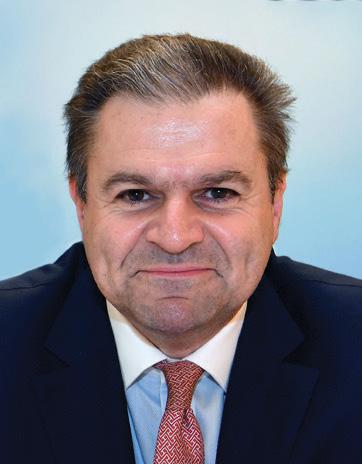
infrastructure and power are key factors. In some African countries including Kenya, Ethiopia, Ghana, Senegal and Rwanda, the current and proposed ways to provide access to modern energy services must outpace population growth.
One-in-two people added to the world population between now and 2040 are set to be African – but more than two-thirds of people without access to electricity in the world currently live in sub-Saharan Africa.
Africa’s growing energy and infrastructure requirements align with the goals of GCC investors, as well as overall visions and governmental plans for GCC countries.
The UAE’s sovereign wealth funds and other institutional investors have substantial financial resources and the capacity to undertake large-scale investments. This growing requirement presents attractive investment opportunities for energy, banking, telecommunications, manufacturing, affordable housing, and agriculture.
The ongoing commitment to enhancing food and water security in Africa has also proven instrumental in ensuring sustainable development and addressing growing challenges.
The Gulf imports 85 per cent of its basic food requirements; with a focus on food security, the UAE’s investments in African agriculture will drive mutual economic growth and create trade opportunities in the region in addition to accelerating the advancement of local food production methods and technologies across the continent, East Africa being to date the region in which the UAE has invested the most through buying and/or leasing land from private businesses and foreign government
OF
IT
$25bn
contracts. As an example, a recent survey by the Dubai Chamber of Commerce saw 61 per cent of respondents say agriculture represented the most lucrative area for investment in sub-Saharan Africa. Empowering African communities and providing opportunities for thousands of individuals has resulted in the transfer of technology and skills contributing to a boost in local capabilities, driven innovation, and facilitated knowledge sharing. The long-term hand-up-not-a-hand-out approach goes as far as to include initiatives such as offering scholarships to African students, enabling them to pursue higher education at UAE-based universities.
However, no investment comes without its challenges (including regulatory), but the good news is that they are being addressed in country by policymakers. Overcoming these challenges will continue to require strong partnerships, mutual understanding, trust, and innovative approaches to address specific market dynamics; collaboration with people and institutions on the ground is essential.
Globally, one could almost say that we have evolved from the Western to the Asian Century. To that effect, UAE-Africa relations are growing stronger as more partnerships are formed and the outlook for the UAE’s economic ties with African countries evolves, it is estimated that the UAE’s total non-oil trade with Africa is now worth $25bn per annum.
With a focus on sustainable development and inclusive growth, the UAE’s impact on African economies will continue to contribute positively to economic prosperity and global integration, fostering a mutually beneficial relationship between the UAE, wider GCC and African nations, in a strong win-win dynamic.
“AFRICA’S GROWING ENERGY AND INFRASTRUCTURE REQUIREMENTS ALIGN WITH THE GOALS OF GCC INVESTORS, AS WELL AS OVERALL VISIONS AND GOVERNMENTAL PLANS FOR GCC COUNTRIES. THE UAE’S SOVEREIGN WEALTH FUNDS AND OTHER INSTITUTIONAL INVESTORS HAVE SUBSTANTIAL FINANCIAL RESOURCES AND THE CAPACITY TO UNDERTAKE LARGE-SCALE INVESTMENTS”
IS ESTIMATED THAT THE UAE’S TOTAL NON-OIL TRADE WITH AFRICA IS NOW WORTH
ITS BASIC FOOD REQUIREMENTS FROM AFRICA; WITH A FOCUS ON FOOD SECURITY
per annum
THE GULF IMPORTS 85%

Banks are unusual businesses. They hold a lot of sensitive financial information about clients that they do not sell on. Firms such as big retailers, on the other hand, which collect a lot of customer data through schemes like loyalty cards, routinely market the data. It’s very valuable. Banks, though, keep customer data strictly private – between the customer and their bank – or at least they did until now.
Now regulators around the world, including those in the Middle East and Africa (MENA) region are accelerating the introduction of so-called ‘open banking’. Open banking requires banks to set up application programming interfaces (APIs) that allow customers to share their personal account data with third-party service providers if they choose to do so. As things stand, banks are not remunerated for setting up and running the APIs, though so-called premium APIs may be introduced over time.
The idea behind open banking is that third-party financial firms – both banks and fintechs – will be able to mine the shared data to offer customers cheap, personalised and innovative services. Examples include account to account payments that have no need for card intermediaries. Regulators expect open banking
How open banking can give regional banks in MENA the opportunity to expand their ecosystems, reach and balance sheets
to lead, over time, to a new ecosystem of exciting and cost-effective financial products – especially when open banking is extended to include data from other financial services firms, such as insurers, in so-called ‘open finance’. Not all open banking regulations in the MENA region are at the same stage. Qatar, for example, plans to implement its open banking framework by 2026 while the local pioneer, Bahrain, launched its open banking regulations in October 2020 and is already moving toward open finance. Bahrain is also a leader in building a fintech ecosystem. It has set up a digital sandbox – a ‘safe space’ – in which providers can try out new ideas to ensure that they’re both good for consumers, and compliant with regulations, before they go live. Saudi Arabia is another frontrunner with the Open Banking Lab, which is part of the Financial Sector Development Program (FSDP) under Saudi Vision 2030.
THE UAE BANKS FEDERATION RECENTLY ANNOUNCED THAT IT HAS SEEN A
Alex Fraser, chief executive, The London Institute of Banking & FinanceAt first glance, allowing third party service providers to enter the retail financial services market looks potentially damaging for banks – especially banks in regional areas with limited corporate business. And if it’s not good for banks, could open banking be a threat to growth and financial stability? After all, it is banks that carry out maturity transformation – the essential service that turns short-term deposits into long-term investment.
But the contradiction is only apparent. The aim of the regulators is to have open banking increase the overall economic pie, which would clearly benefit banks. And banks won’t just be giving other firms access to data – they will also get access to data they would otherwise not have had, which they can use to improve their own performance. For example, banks could use data from other financial firms to improve credit risk assessments – both for lending to consumers and to SMEs.
There is a further important strand to open banking that should help regional financial institutions: financial education. Open banking is, fundamentally, about breaking up data silos to let innovation blossom. Innovators can use the data to develop new services and new approaches to finance that enhance the essential services that only banks provide. Indeed, the Saudi Central Bank says that the “most prominent” objective of open banking is “educating individuals and inspiring them to develop their knowledge and skills in the fintech field”.
Those new services will also be available to everyone – including those SMEs and consumers who may not currently feel that they need, or can afford, banking services. Again, that has the potential to boost regional banks.
There are several reasons why open banking is a game-changer for banks as well as fintechs. First, digital channels are cheaper for banks to support than physical branches. Second, a bigger range of fintech apps can help banks offer new services that support the financially excluded, such as educational and budgeting apps. Third, once people become part of the formal financial system, they can start to save, and to borrow from banks to invest, in a way that creates a positive economic cycle.
And there is plenty of inclusion work for banks to do. For example, the MENA region overall has a relatively high proportion of unbanked adults – just shy of 50 per cent, according to the World Bank. There is also a relatively low use of digital payments at around 40 per cent. Clearly, those statistics vary greatly from country to country. The UAE Banks
“THE IDEA BEHIND OPEN BANKING IS THAT THIRD-PARTY FINANCIAL FIRMS – BOTH BANKS AND FINTECHS – WILL BE ABLE TO MINE THE SHARED DATA TO OFFER CUSTOMERS CHEAP, PERSONALISED AND INNOVATIVE SERVICES. EXAMPLES INCLUDE ACCOUNT TO ACCOUNT PAYMENTS THAT HAVE NO NEED FOR CARD INTERMEDIARIES”
DOUBLING IN THE USE OF DIGITAL CHANNELS
OPEN BANKING –AND INNOVATIVE FINTECH – CAN HELP BANKS SUPPORT AND INCLUDE EVERYONE
Federation, for example, recently announced that it has seen a doubling in the use of digital channels. The essential point, though, is that open banking –and innovative fintech – can help banks support and include everyone.
Regulators in the region have already given the green light to new fintechs that promise to expand the formal financial system and increase financial capability. One example is Tamam, a Shariah-compliant digital microfinance firm in Saudi Arabia, which is a subsidiary of the telecom company Zain, and which came out of the central bank’s regulatory sandbox. Another is Hakbah, a Saudi-based fintech savings club – which has just raised its first round of institutional capital – and aims to digitise the rotating savings and credit association market in Saudi Arabia and in the wider region. Hakbah, too, is a sandbox alumnus.
As consumers and SMEs see the benefits of such apps, the amount of financial data available online will only grow – further boosting the benefits of open banking. Yes, regional banks will be sharing data that, previously, only they could use. But open banking can increase financial inclusion, financial knowledge and financial innovation – all of which will mean more demand for bank services – and increased economic growth.

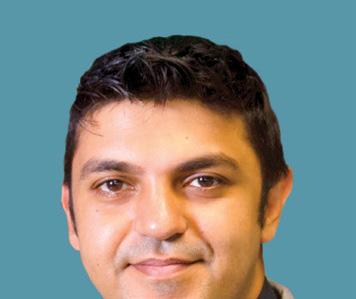

As the year progresses, emerging economies led by India are expected to grow at 3.9 per cent, with the Middle East, Central Asia and Sub Saharan Africa expected to grow at an average of 3.3 per cent
The year 2023 has brought in a whole lot of surprises for the markets. It started with heightened anxiety about further market price action and the inflation trajectory. As the year has progressed, we’ve seen market complacency dominate the overall high inflation rhetoric.
The recent so tening in US inflation numbers has supported the expectations of the peak in inflation and the corresponding prime lending rates. Although some might still argue about the over-optimistic frontrunning of the interest rate expectations, the recent data points to a probable so tening in the overall global economic activity.
With the disappointment of the much-anticipated China reopening of trade, markets have come to their senses regarding the limits of the hypergrowth fuelled narrative.
“REGULATORS IN THE REGION HAVE ALREADY GIVEN THE GREEN LIGHT TO NEW FINTECHS THAT PROMISE TO EXPAND THE FORMAL FINANCIAL SYSTEM AND INCREASE FINANCIAL CAPABILITY”
The service sector remains bright in the otherwise faltering economic growth outlook. As seen from the chart above, there is a growing disconnect between the two sectors.
While manufacturers across the globe have pointed out persistent price pressures on account of past inflation, service sector firms are somewhat at ease and looking beyond the current high inflation prints.
Factually, wage increases in major developed economies, including US, Germany and Japan, have helped defend against the onslaught of high inflation. The global economy, however, runs a high risk of another round of spike in goods inflation.
The US core inflation numbers are still near the 5 per cent mark and seem stickier. Similar is the case for the EU as well as the UK. The goods inflation spike will further complicate the ongoing market narrative. If history is any guide, goods inflation has typically been closely linked to energy commodity prices.
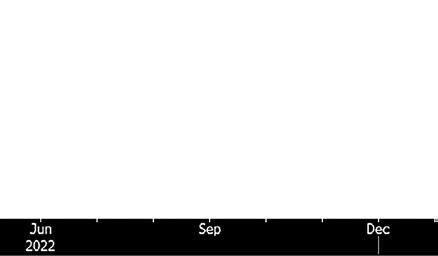

This is a sign of caution as the current profile of energy prices suggests we are not yet out of the woods to counter the overall inflation threat.
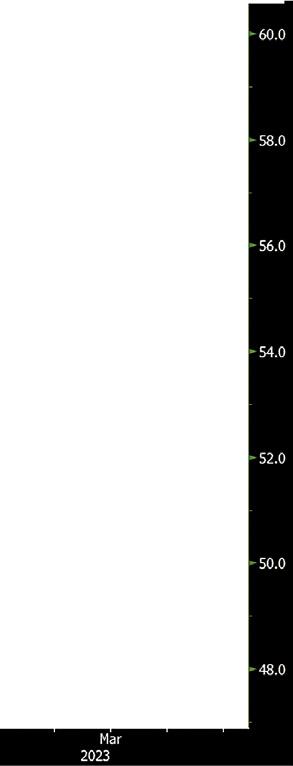



The one central narrative currently in play is the vast disconnect between the prospective economic conditions and the equity market’s performance. Based on leading economic indicators, we are at the onset of a slowdown. Ironically, markets seem more focused on the anticipated rate cuts amidst a probable slowdown/recessionary cycle. The artificial intelligence (AI)-fuelled rally in US tech stocks is enjoying its momentum trade for now. This has generally propped up the overall equity markets investment sentiment.
The latest Germany and Eurozone GDP data saw both economies slipping into technical recession territory. Whether or not the global economies slip into recession, some moderation in overall growth is expected. In its latest forecasts, IMF now sees the global GDP slipping to the 2.8 per cent range for this year, below the 2022 advance estimates of 3.4 per cent.
Interestingly, advanced economies are likely to lead the overall decline, with the GDP dropping to 1.3 per cent this year, below the 2022 number of 2.7 per cent. Emerging economies led by India are expected
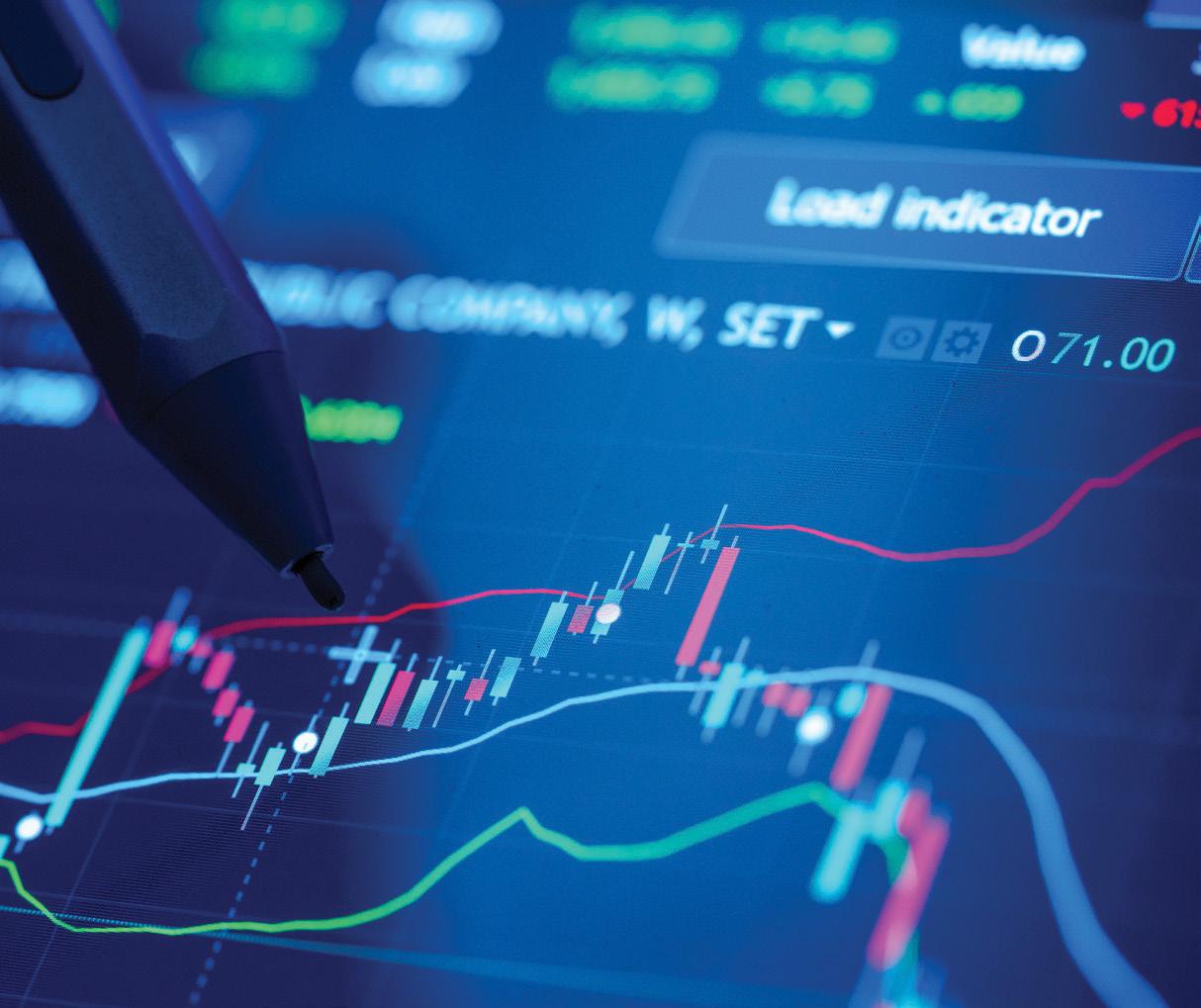
to grow at 3.9 per cent. Middle East, Central Asia and Sub Sahara Africa are expected to grow an average of 3.3 per cent for 2023 (see table above).
Amongst GCC nations, the UAE is expected to be the bright spot over the next 18 months. The nation’s diversification plans and rational changes in the core business and social laws are boosting the nation’s growth prospects to much extent.
Eurozone, too late to start with the interest rate hike cycle, is now eyeing year-end terminal rates at 4 per cent. The UK is the worst a ected by the ongoing inflation spike as the central bank is expected to fight a big battle against inflation. For the UK, markets are eyeing 125 basis points plus rate hikes by the year end.
Interest rate trajectory: The latest statements from US Fed Chair Jerome Powell suggest an even higher rise in the US interest rate. This comes even as markets expect the Federal Open Market Committee to hold the current rate longer.
While the Fed has been the most aggressive in raising interest rates, the inflation gauges being tracked by it are still 2x of the current inflation target of 2 per cent.
Major emerging market economies India and China are sitting in a comfortable position with the overall downtrend in inflationary trends. China, in fact, just announced a cut to its base prime lending rates in June.
US tech likely to hold onto the momentum led by AI boom: Investors have already frontloaded the rise
Dubai equity markets: Gains to continue for the year Stellar gains in banking and utility names have supported the rise in Dubai’s benchmark equity index. The emirate is enjoying tailwinds from its vivid and robust economic model that has served to equally cater to all classes and masses. Dubai equities are expected to continue their momentum gains for the remainder of the year.
of AI and the peak in US interest and inflation rates. This has come in the form of sky-high valuations in the top mega-cap names. We could see some profit booking in these names with the valuations so high. However, the price correction, should it happen, could be short-lived.
The hunt for excess returns post-Covid era has become a new norm. Legacy names in this category, including cryptos and tech, will garner much of the market attention.
US and EU long-term bond futures could ride the wave of dovish hold: The short-term interest rates in the US and EU remain elevated, thereby pressuring the long end of the curve.
With inversion now the new norm, watch out for a complete dovish hold by US and EU. Should this event coincide with a US recession, demand for longduration bonds could likely increase.
Gold and energy: Gold rates have undergone a correction from its triple-top resistance zone of $2,050 - $2,100. The ongoing bearish consolidation pattern in the precious metal suggests a further downside play. Much of the euphoria surrounding the previous gold rally has evaporated. Two major tailwind factors, including physical central bank buying and upside consolidation in the euro, have lost much of their impact on gold prices.












Manchester City’s midfielder Ilkay Gundogan (C) lifts the trophy, as they celebrate after winning the UEFA Champions League final against Inter Milan at the Ataturk Olympic Stadium in Istanbul on June 10. Manchester City FC rounded off a spectacular season by winning the UEFA Champions League. The football club beat Inter Milan to lift the trophy for the first time. The 2022-23 season was the club’s most successful, as it swept the Premier League.





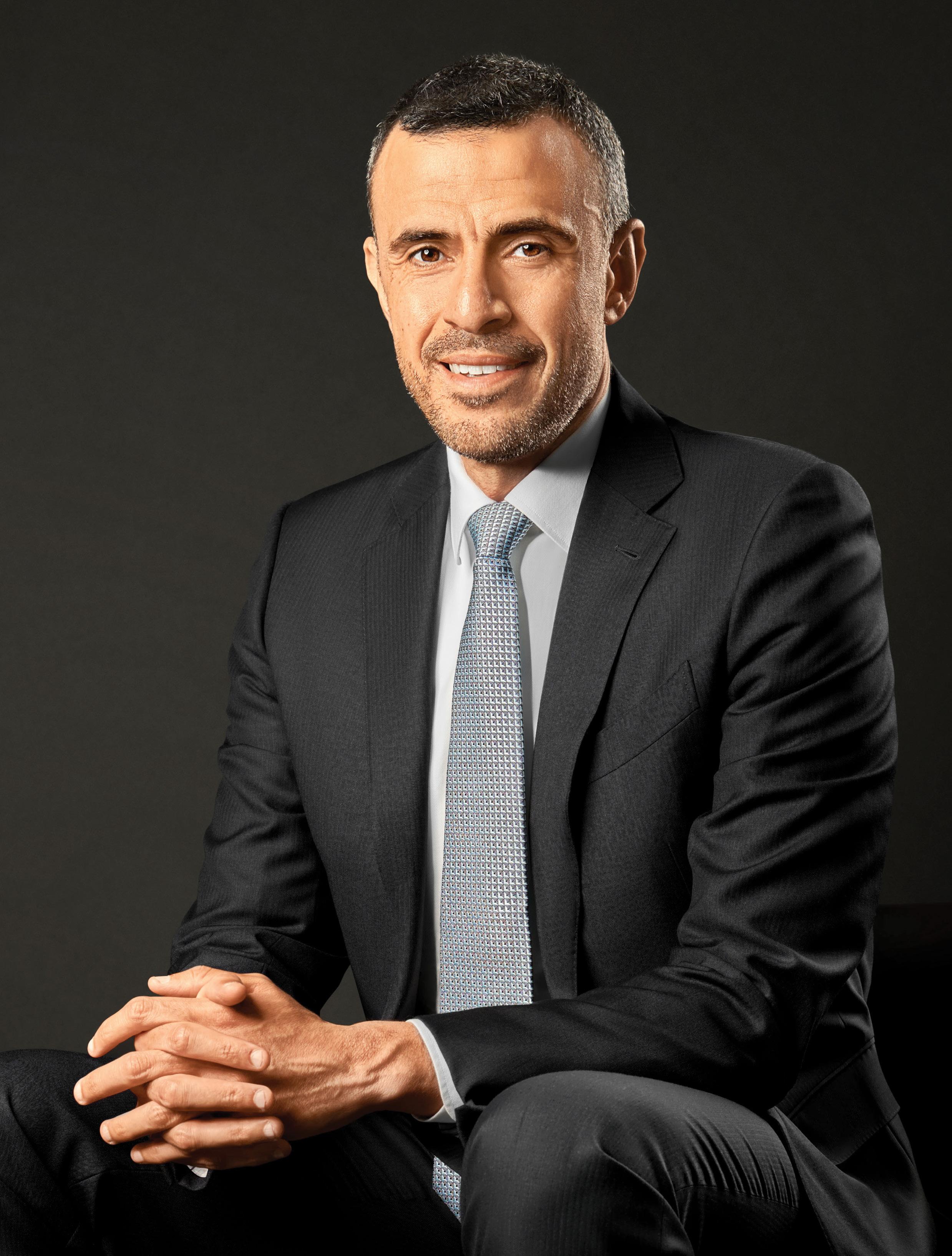
EFG HOLDING’S NEW SLOGAN ‘REALIZE MORE’ REFLECTS THE COMPANY’S GROWTH STRATEGY INTO A FUTUREFORWARD FINANCIAL INSTITUTION THAT SERVES PEOPLE OF ALL INCOME LEVELS AND COMPANIES OF ALL SIZES THROUGH THE EXPERTISE OF ITS MORE THAN 7,100 EMPLOYEES AND DIVERSE OFFERINGS
FG Holding has earned a coveted spot among global fi nancial heavyweights, having participated in 10 initial public o erings (IPOs) worth a whopping $12.7bn in 2022. More recently, the group took another significant step, successfully unveiling a new brand identity from EFG Hermes to EFG Holding.
The transformation is another strategic move to cement its influence across frontier and emerging markets (FEM). Today, the company has established three verticals: EFG Hermes, the investment bank; EFG Finance, the non-bank financial institutions (NBFI) platform and aiBANK, the commercial bank.
“It’s the optimal time to transform our brand to capture the breadth and magnitude of our product and service universe as well as reflect the resilience of our growth strategy,” Karim Awad, group CEO of EFG Holding, said at the time of rebranding in May.
Awad is the man setting the tone for the company’s transformation journey. Since taking the helm in 2013, EFG Holding has evolved into a trailblazing financial institution with a universal bank in Egypt and the leading investment bank franchise in FEM.
The company has grown substantially across four decades, driven by organic growth, innovation, mergers and acquisitions, and market dominance.
With a footprint spanning 12 countries across four continents and capital base of $0.8bn (EGP25.1bn), Awad’s vision for the group is to be the preferred financial services partner for its clients, consistently o ering them the best-in-class, end-to-end financial services.
“This is something that we will hopefully start within our core market and then expand to the other markets we are currently present in,” Awad reveals.
Though the group has faced its fair share of challenges in its core market over the years, Awad is highly bullish about Egypt’s medium-to-long-term prospects, whether in capital markets or non-bank financial services.
“We invested EGP2.55bn of our capital in a commercial bank in Egypt in 2021 because we believed in the country’s future prospects even in challenging times a ter Covid-19.”
EFG Holding has grown from strength to strength under Awad’s stewardship, having started as a pure-play investment bank, providing corporate advisory services, securities brokerage, research, asset management and private equity in Egypt, and then moved into other markets while expanding its product and service o ering to include nonbanking financial services and a commercial bank.
The group stepped up the gears nearly two years a ter Awad assumed the reins. It launched its NBFI platform in 2015 and acquired its microfinance player, Tanmeyah, a year later.
“The group started taking a slightly di erent strategy in 2015
when we established our NBFI platform and then towards the end of 2021 when we partially acquired the commercial bank,” says Awad. “So, with the massive changes the group has gone through, we have outgrown beyond an investment bank model.”
To spearhead its transformation and re-direct resources towards this goal, EFG Holding decided to exit non-core assets, including divesting its majority stake in the Lebanese bank, Crédit Libanais, in 2016 – a move that marked a significant pivot in its business and operations.
In December 2017, the group founded valU, which started as a buy now, pay later (BNPL) fintech platform and grew over the years to become a holistic lifestyleenabling solution, the Middle East region’s first platform of its kind, o ering convenient payment options to a wide network of retail, e-commerce and small-to-medium enterprises across a diverse array of categories, including home appliances, electronics, healthcare and education.
Furthermore, the group acquired a 51 per cent stake in aiBANK in November 2021, marking a strategic entry into Egypt’s dynamic commercial banking sector and transforming into a universal bank with a FEM-focused investment bank, commercial bank and successful NBFI platform. Owning a commercial bank in its home market
EFG HOLDING HAS A CURRENT FOOTPRINT SPANNING 12 COUNTRIES ACROSS FOUR CONTINENTS AND CAPITAL BASE OF

$0.8BN (EGP25.1BN)
Awad’s vision for the group is to be the preferred financial services partner for its clients, consistently o ering them the best-in-class, end-toend financial services
means EFG Holding has created a business model that can provide its Egyptian clients with a comprehensive platform for financial services and withstand the volatility in the capital markets EFG Holding operates in.
While headquartered in Egypt, EFG Holding’s new slogan, ‘Realize More’ reflects the company’s growth strategy into a future-forward financial institution that serves people of all income levels and companies of all sizes through the expertise of its more than 7,100 employees and diverse o erings.
“The investment bank will continue to be core to our operations and will take a lot of our focus and bandwidth going forward,” reveals Awad. “But we also felt that our other businesses and their additions, and the synergies they have created for the company need to be showcased more clearly to the market,” he says, explaining the rationale behind the rebranding and new slogan.
True to his word, EFG Holding’s business model has significantly evolved over the years and the goal is to o er a full suite of financial services across the group’s diversified client base while creating value for the shareholders. At home, the group is driving financial inclusion and digital transformation strategy. It o ers its clients lifestyle-enabling fintech solution (valU), microfinance (Tanmeyah), leasing and factoring (EFG Corp-Solutions), insurance (Kaf Insurance), e-payments (PayTabs Egypt) and mortgage finance (Bedaya).
“To give you an idea of our portfolio in Egypt, we provide investment banking, asset management, private equity, research securities brokerage services and clients can trade through our online trading platform, EFG Hermes One. You can get a mortgage with Bedaya, access insurance services through Kaf Insurance, make purchases and pay for them later over time, save, invest,
get instant cash redemptions with valU and utilise commercial banking services of aiBANK,” says Awad.
As he continues full steam ahead with his expansion plans, Awad says the group will be on the constant lookout for new value-added products and services to diversify its o erings. “SME lending in Egypt is an interesting field for us, and we are currently studying other interesting securities brokerage products,” he reveals.
There is a structured products desk that the group added several years ago, and it is currently o ering the group’s client base new products to invest in, in addition to pure equities, he adds.
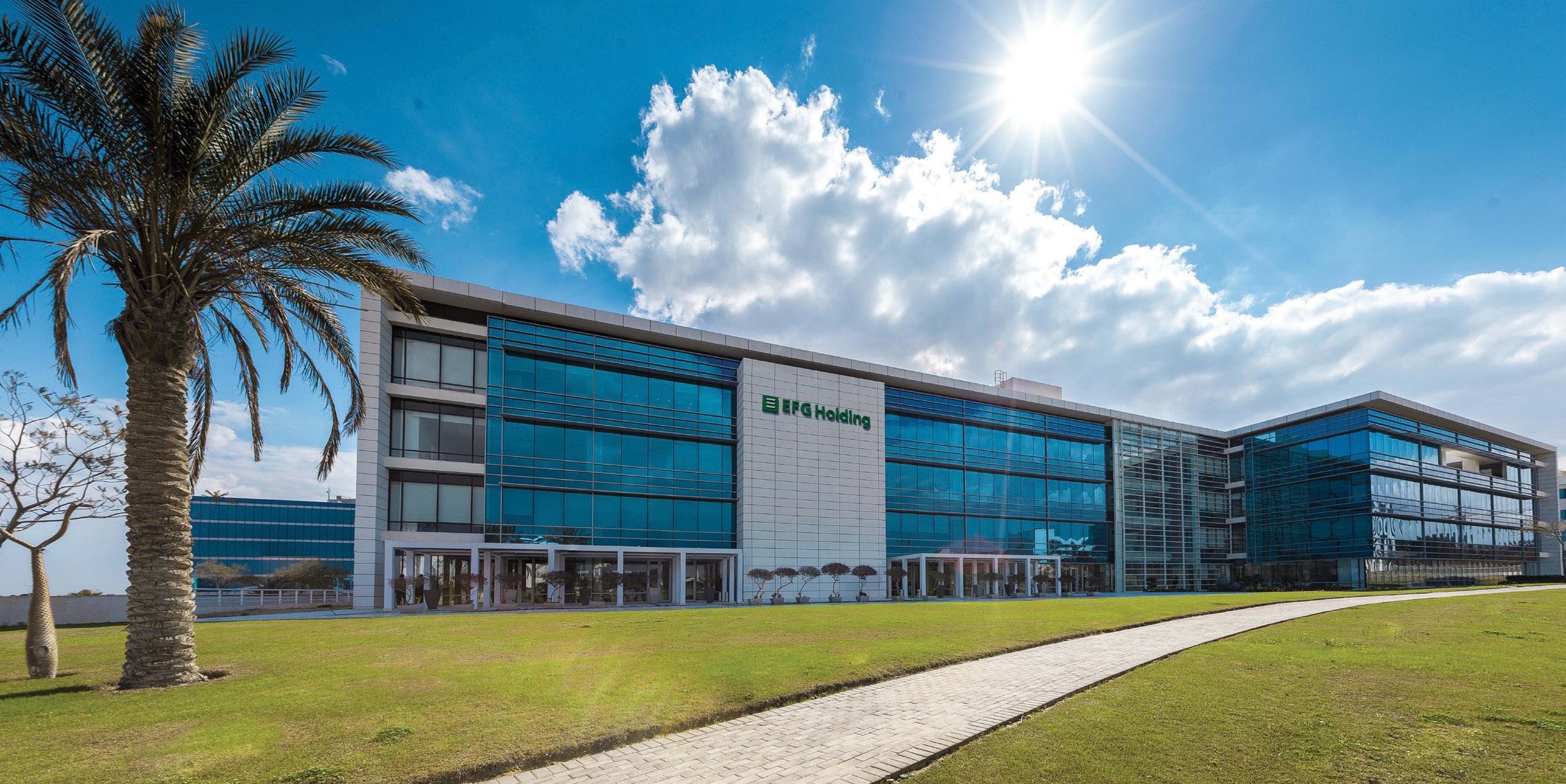

We provide investment banking, asset management, private equity, research securities brokerage services and clients can trade through our online trading platform, EFG Hermes One. You can get a mortgage with Bedaya, access insurance services through Kaf Insurance, make purchases and pay for them later over time, save, invest, get instant cash redemptions with valU and utilise commercial banking services of aiBANK”
THE GROUP ACQUIRED A 51 PER CENT STAKE IN AIBANK IN NOVEMBER 2021
Geographically, Awad says: “EFG Hermes is looking to boost its operations and presence in the UAE and Saudi Arabia, which are markets that continue to be of extreme focus for us going forward.”
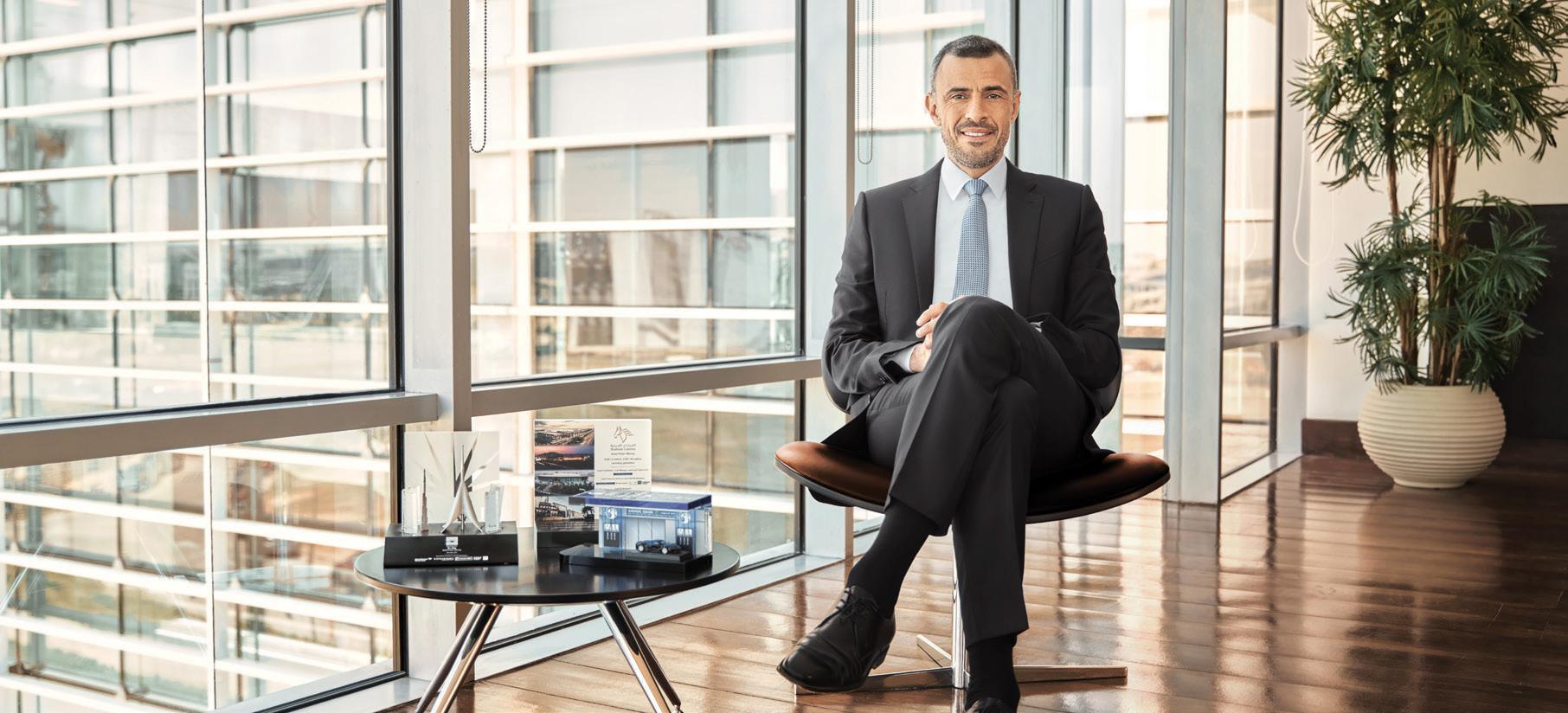
“Saudi Arabia is a market we intend to double down on, whether in terms of further investments or moving more human resources over there,” he adds. Awad believes in the long-term prospects of the Saudi market and he feels that EFG Hermes is well-positioned to leverage the country’s economic transformation under Vision 2030.
Awad adds: “The UAE has performed super well over the years and we believe that the country’s leadership continues to provide opportunities for capital markets to grow, whether in Abu Dhabi or Dubai.”
EFG Hermes is one of the first foreign-licensed banks to participate in the Emirates’ capital markets, having set up operations in Dubai in 2002. It was licensed by the Dubai Financial Services Authority as an authorised firm in the Dubai International Financial Centre in 2005.
Over the years, EFG Holding has made the headlines
for all good reasons, as Awad is ushering the group on a transformational journey like no other. The group’s investment bank (EFG Hermes) entered 2023 on a stronger footing, having closed four historical IPOs, including the $2.5bn IPO of ADNOC Gas, the $244m public o ering of Oman’s Abraj Energy services on Muscat Stock Exchange, Al Ansari Exchange’s $210.5m o ering on the Dubai Financial Market and the $769m listing of ADNOC L&S last month.
“We pride ourselves on being our clients’ preferred partner; when we perform business for a client, they usually come back to us again on future deals,” Awad notes while stressing that this is evident in a variety of transactions that EFG Hermes has closed in the region involving recurring clients.
The year 2023 continues to have a promising IPO pipeline, thanks to several capital markets initiatives implemented across the region and the group CEO believes the best is yet to come.
“Whether it is on IPOs, mergers and acquisitions or debt capital markets, the idea is we stay very close to our core clients going forward,” he pledges.
On the other side of the business, EFG Hermes concluded advisory on Premium International for Credit Services’ EGP193.7m securitised bond o ering in March and Hermes Securities Brokerage’s EGP250m senior unsecured short-term note in April.

The company defied growing inflationary pressures and currency devaluation in Egypt, more than doubling its bottom line in Q1 2023. Its revenues surged by 129 per cent year-on-year (YoY) amounting to EGP4.5bn, driven by the investment bank and commercial bank verticals as well as growth in treasury operations.
EFG Holding’s net profit a ter tax and minority interest soared 157 per cent YoY amounting to EGP885m during the same period under review while net operating profit rose by 99 per cent to reach EGP 1.5bn.
Despite an impressive first quarter, Awad says EFG Holding continues to be bullish about business prospects
The UAE has performed super well over the years and we believe that the country’s leadership continues to provide opportunities for capital markets to grow, whether in Abu Dhabi or Dubai"
• IN DECEMBER 2017, THE GROUP FOUNDED VALU, WHICH STARTED AS A BNPL FINTECH PLATFORM AND HAS EVOLVED INTO A HOLISTIC LIFESTYLEENABLING SOLUTION
• VALU OFFERS CONVENIENT AND CUSTOMISABLE FINANCING SOLUTIONS FOR UP TO 60 MONTHS, VIA 5,000 POINTS OF SALE AND OVER 700 WEBSITES AND APPS.
• MORE ONE MILLION TRANSACTIONS WERE COMPLETED THROUGH THE APP DURING FY2022
In today’s digital-first world, institutions should be remodelling their approaches to succeed. EFG Holding has allocated substantial capital expenditures towards innovating its digital o erings to quickly bring new products to the market.
“We are continuously focusing on improving our tech capabilities across our entire portfolio and o ering intuitive and seamless products and services to our clients,” Awad reveals.
EGP4.5BN

• EFG HOLDING'S REVENUES SURGED BY 129 PER CENT YOY DRIVEN BY THE INVESTMENT BANK, COMMERCIAL BANK VERTICALS AND GROWTH IN TREASURY OPERATIONS
and its profitability to boost shareholder value. The group seeks to position itself among the top five players in the markets it operates in and the products and services universe it o ers.
Awad says the group plans to expand into other markets to grow the business’s profit responsibly, “which is our core belief and something that we take very seriously". Hence, EFG Hermes is the first Egyptian financial services corporation that signed the United Nations Principles for Responsible Investment.
EFG Holding is significantly investing in valU, a leading lifestyle-enabling fintech platform, while incorporating more value-added services into its microfinance business. The company’s BNPL platform o ers convenient and customisable financing solutions for up to 60 months, via 5,000 points of sale and over 700 websites and apps, and has financed 568,000 customers and completed over one million transactions through the app during FY2022. “valU is one of the brands that EFG Holding created over the past few years and we are pleased with its development, having started as a small idea in 2017,” observes Awad.
The platform has forged a series of partnerships with prominent players including Amazon, Samsung, IKEA Majid Al Futtaim, Carrefour, Azadea, Noon, and Jumia, as well as multi-brand automotive dealer ELTarek Automotive as well as.
In January, valU also unveiled its direct selling and delivery service through WhatsApp to enhance the customer experience and simplify the customers’ digital journey by providing seamless access to all information at their fingertips.
The lifestyle-enabling fintech platform has done exceptionally well in Egypt, paving the way for other fintech startups that were founded a ter its launch.
Awad believes that valU is ready to expand into other markets. However, the timing is something that will be considered.
“Today, valU has grown exponentially as a lifestyle-enabling fintech powerhouse with access to industry-leading retailers in the Egyptian market. The platform has expanded its products and services portfolio to o er investment products, an instant cash redemption program, and savings solutions through the AZ valU fund, Sha2labaz, and Akeed, respectively,” says Awad.
On the brokerage front, EFG Hermes has partnered with Microso t to launch its Direct Market Access platform on Azure. The platform enables clients to capitalize on compelling trading prospects swi tly and seamlessly by streamlining the process of taking bids.
Powered with the new transformation strategy, EFG Holding seeks to ‘Realize More’ of its goal to build an ecosystem of businesses that work seamlessly together to provide clients with end-to-end financial solutions while positively impacting societies, economies, and the environment.
IN JANUARY, VALU UNVEILED ITS DIRECT SELLING AND DELIVERY SERVICE THROUGH WHATSAPP TO ENHANCE CUSTOMER EXPERIENCE AND SIMPLIFY THE CUSTOMERS’ DIGITAL JOURNEY BY PROVIDING SEAMLESS ACCESS TO INFORMATION AT THEIR FINGERTIPS
We pride ourselves on being our clients’ preferred partner; when we perform business for a client, they usually come back to us again on future deals"

Talal Moafaq Al Gaddah, senior executive vice chairman of MAG, shines the spotlight on the group’s new and exclusive development, Keturah Reserve, and shares the positive impact that bio living can have on the physical, mental and emotional health of residents
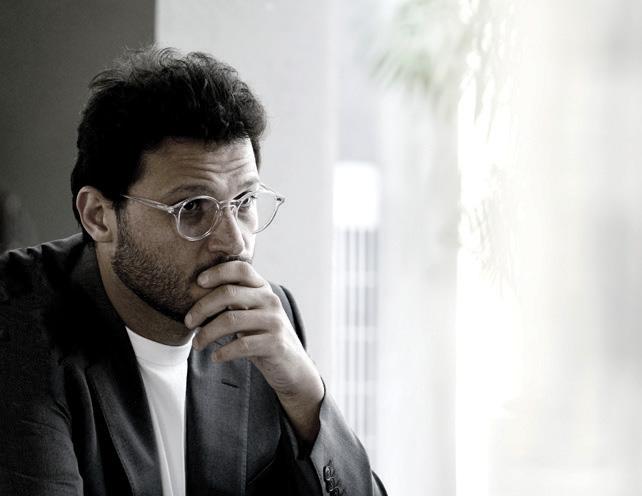
Sustainability-themed trends are transforming the real estate sector, driven by evolving investor preferences, technological advancements, shifting demographics and the growing imperative to respond to climate change.
Dubai is seeing an increase in sustainable and eco-friendly developments, catalysed by initiatives such as the Dubai Land Department’s efforts to enhance transparency, visa reforms and robust economic growth. The climate-focused COP28 conference, which is taking place in the emirate later this year, is further accelerating this momentum.
In today’s market, consumers are more inclined towards developers who adhere to global sustainability standards and integrate eco-friendly features in their projects. This trend necessitates that we, as responsible developers, demonstrate our commitment to sustainable
practices. This entails the creation of lowcarbon, resilient buildings that leverage sustainable elements such as solar panels and energy-efficient appliances.
Building upon these narratives, at MAG, we have cultivated an understanding that we must lead and embrace change with the ongoing evolution of sustainability trends in the real estate sector. This enabled us to redefine the future of real estate in Dubai: it is not just about creating physical spaces but about providing unique, transformational living experiences.
In response, we introduced ‘Keturah,’ an innovative concept that harmoniously blends luxury, wellbeing, real estate and hospitality to revolutionise living standards in Dubai’s real estate sector.
Keturah Reserve is more than a concept; it is a meticulously designed ecosystem promoting healthier living and inspiring lifestyle transformations. Keturah embodies the perfect fusion of sustainability and luxury living through energy-efficient
designs, sustainable building materials, comprehensive wellness amenities and superior hospitality services.
This commitment to innovative and sustainable living solutions reinforces our position as an industry leader in tune with the evolving needs and aspirations of contemporary real estate investors and well-learned residents. As sustainability plays a pivotal force in the real estate market, we foresee our projects becoming benchmarks, setting a new precedent for sustainable, healthy and inspiring living spaces across the UAE and beyond.
Dubai’s real estate sector has shown a deep commitment to sustainability, incorporating it as a core element in its decision-making processes. The foundation for this strategic shift was laid with the introduction of the ‘Green Building Regulations and Specifications’ in 2011. This embrace of sustainability also extends
to the emirate’s long-term strategic goals. For example, Dubai Vision 2021 outlined certain KPIs toward transforming itself into a sustainable urban environment, with ambitious targets like sourcing 75 per cent of its total power output from clean energy by 2050, which underscores Dubai’s intent to embed sustainability in its infrastructure and real estate developments, signifying a tangible shift towards eco-conscious decision-making.
Alongside sustainability, technological innovation has also been at the forefront of Dubai’s real estate sector evolution. The sector has quickly adopted new technologies to enhance transparency, efficiency, and customer experience. A prime example is the real estate self-transaction platform (REST) by the Dubai Land Department.
The REST platform facilitates secure and efficient property transactions. This broadens investor participation in Dubai’s real estate market by providing an additional, flexible payment option, which exemplifies digital transformation. This has led us to forge a strategic partnership with CoinMENA to accept cryptocurrency transactions through
its state-of-the-art platform, which is a strategic step for us to address current market dynamics and meet the increasing demands of our valued investors, who aim to convert their profitable gains into tangible assets using digital currency.
Tell us about Keturah Reserve’s ‘bio living’ offering. How does it enhance the living experience for residents?
As a pragmatic real estate developer, our strategic decision to develop the bioliving concept responds to the growing consumer demand for healthier, more sustainable living spaces. The concept provides a distinct selling proposition, setting us apart in this competitive market. This strategy ensures we are in sync with the broader global trend towards sustainable living and green development. Our adoption of the bioliving concept also marks a significant milestone in the real estate industry’s transition towards sustainability.
As these trends redefine the future of the real estate landscape, we foresee properties integrating such concepts gaining stronger appeal, thereby bolstering our market prominence and steering the industry forward.
Bio living is rooted in ‘biophilic’ design, architecture and interior design conceived to incorporate nature into the built environment to improve its occupants’ physical, mental and emotional health. Bio living at Keturah Reserve creates the perfect synergy between the interior design, architecture and landscape, completely respecting the surrounding ecosystem.
It is the first residential development in the Middle East to immerse

residents in nature through ‘bio living’ to improve its occupants’ physical, mental and emotional wellbeing.
Both the interiors and architecture are crafted from the same raw materials and colours to subtly merge the architecture with the surrounding desert landscape. Travertine, wood and bronze link the inside with the outside. The restrained colour palette of bleached bone, champagne and bronze further introduces the natural landscape inside the home. Lush growing nature is visible from every vista, including olive trees, palm trees, green walls, balcony planters and rooftop gardens.

Lastly, our adoption of the bio living concept marks a significant milestone in the real estate industry’s transition towards sustainability. It encourages the wider industry to adopt sustainable practices, raising the bar for future developments across Dubai.
What sets Keturah Reserve apart from other residential developments in the region?
An exclusive and innovative Dhs3bn residential development, Keturah Reserve is located in Meydan, one of Dubai’s most sought-after and exclusive residential areas.
It will feature 93 townhouses, 90 villas, 540 units across six apartment block buildings, and eight penthouse apartments. The project is the first residential development in the Middle East to immerse residents in nature through bio living to improve its occupants’ physical, mental and emotional wellbeing.
Keturah Reserve’s homes are angled to capture and maximise natural daylight, gently diffusing it throughout the interior without heat or glare; double-volume interior spaces increase the flow of naturally cooled air, reducing the need for air conditioning. The open-plan spaces are also designed without corridors or hallways, with custom-designed furniture and fixtures produced for each space to optimise the flow of the passage.
It is also the only residential development in Dubai with a direct nine-minute link to Downtown, with four separate exits onto the city’s main roads: Sheikh Zayed Road, Al Khail Road, Dubai Al Ain Road and Al Meydan Road.
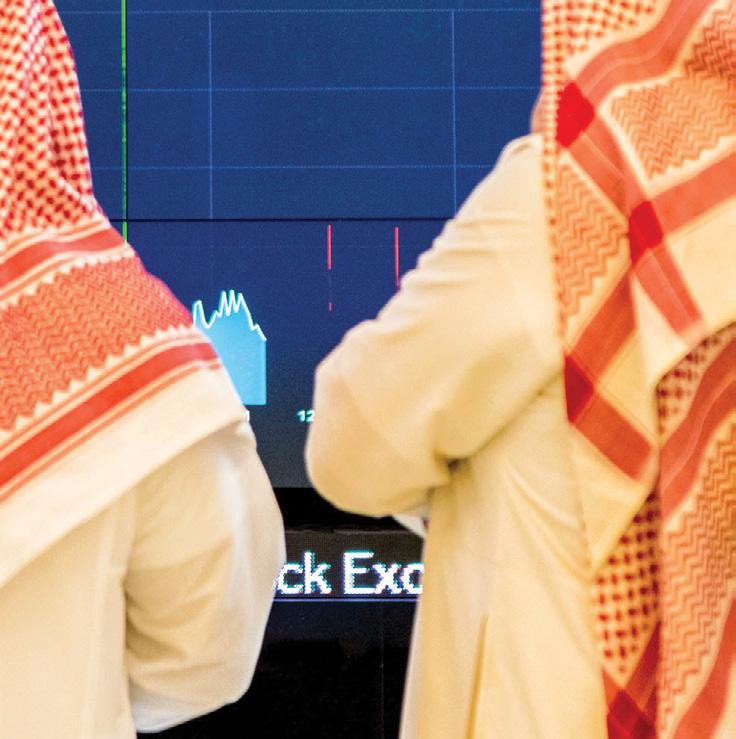
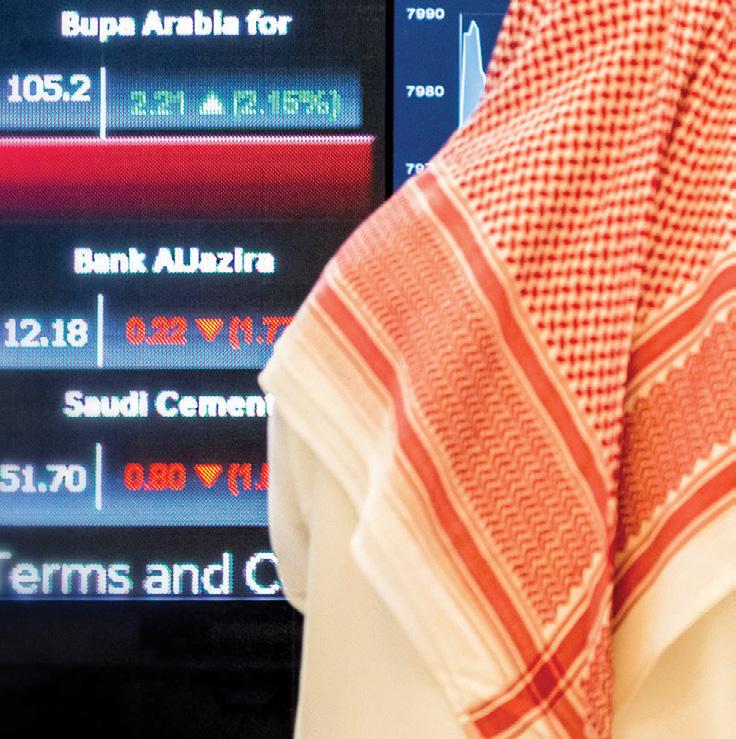
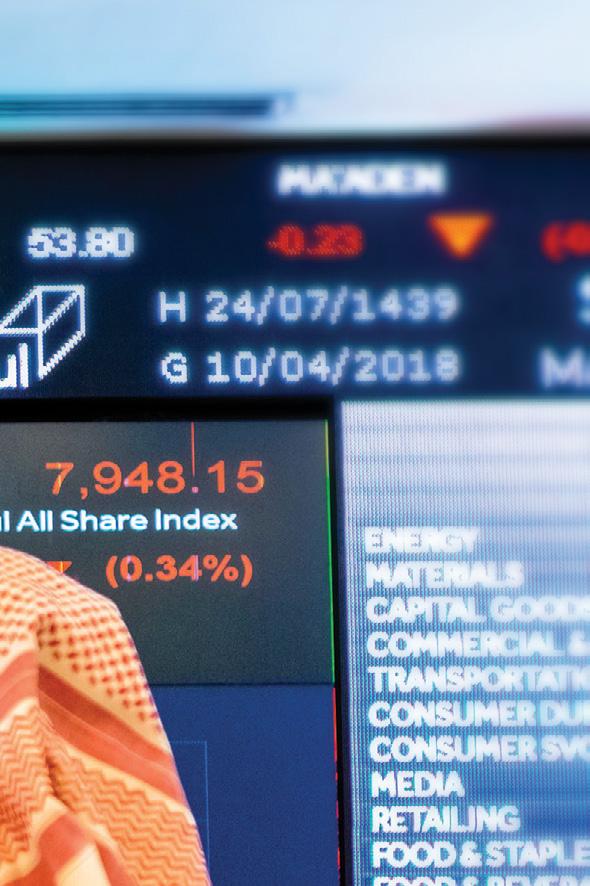
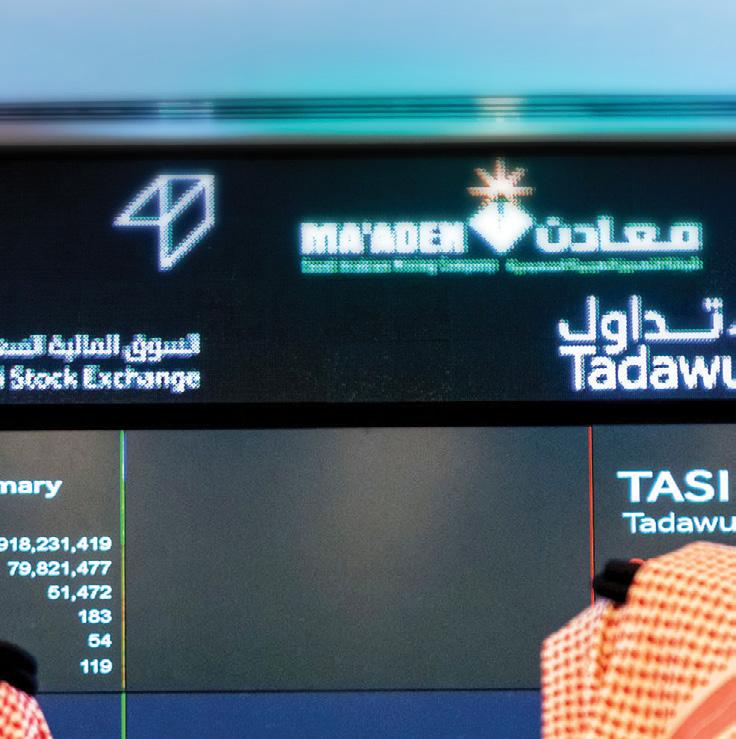

AFTER A STRONG PERFORMANCE LAST YEAR, THE GCC REGION IS SET TO SEE MORE ACTIVITY IN ITS CAPITAL MARKETS IN THE MEDIUM TERM
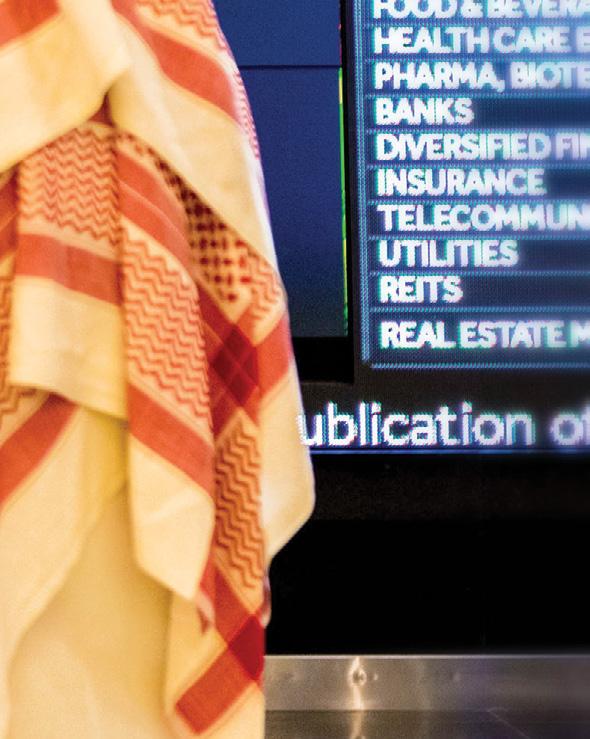
The GCC finished 2022 as one of the few bright spots in global initial public o ering (IPO) markets. This trend has continued so far this year with companies in the region raising $3.4bn from 10 o erings in Q1 2023, according to the latest data from EY. According to Kamco Invest’s projections in January, the pipeline for announced and rumoured public o erings could range between 27 and 39 companies throughout 2023. “Q1 2022 and Q1 2023 are by far the best performing quarters by IPO proceeds which the GCC has ever experienced up until now,” says Muhammad Hassan, capital markets leader at PwC Middle East.
There are a host of reasons why IPO markets in the region outperformed other geographies such as the relative resilience and immunity to global geopolitical events that drove passive index flows and index compiler weightings in favour of GCC stock exchanges.
Zahir Sabur, senior associate, Global Corporate at Reed Smith says the reforms being implemented in the UAE have had the desired e ect of increasing not only the number of listings on both the Dubai Financial Markets (DFM) and Abu Dhabi Securities Exchange (ADX), but have also raised the markets’ international profile.
“The net result is that not only has liquidity improved and domestic institutions actively pursued IPOs, but a number of our international clients are now becoming increasingly interested in a dual-listing of their securities on a UAE exchange to complement their main listing on the New York Stock Exchange, London Stock Exchange or other international markets,” says Sabur.
The GCC’s weight in the MSCI Emerging Markets Index has also increased from 1.6 per cent in 2016 to 7.7 per cent in 2022, driven by several capital markets reforms such as IPOs, privatisation and increasing foreign ownership limits.
“There are many positives in the region that will continue to support investor confidence – Saudi Arabia is a key driving force with so much investment taking place, but we are also seeing encouraging signs of additional capital markets activity in other parts of the region,” says Gregory Hughes, EY MENA IPO and Transaction Diligence leader.
Overall, there are signs of growing optimism in the second half of the year and the number of companies that plan to list in 2023 reflects investor confidence in GCC stock markets. GCC economies continue to be resilient to elevated macroeconomic risks as high oil prices, investor inflows and strong demand for share sales have resulted in an IPO boom. “While we expect the trajectory of
interest rate hikes, geopolitical tensions and secondary stock market volatility and oil price volatility to continue to remain risks in 2023, it is worth noting that the prevalence of these factors did not stop strong IPO activity in 2022,” Kamco Invest stated in a report.
The GCC’s stock markets have carried on strongly thus far with a significant amount of IPO activity against a background of diminishing activities in global capital markets to generate the secondhighest H1 proceeds since 2015.
Industry experts say investors in the region consider shares of well-known companies, especially state-backed, as an excellent way to diversify their investments from real estate – a sector that is hugely subject to swings in demand and supply, and bank deposits that yield low returns.
ADNOC Group’s maritime logistics unit soared more than 50 per cent on its trading debut in Abu Dhabi earlier in June a ter its $769m IPO drew overwhelming investor demand, with $125bn in overall orders.
Sabur says certain listings on GCC markets appear to have been undervalued by the bookrunners and o ten IPOs
have been oversubscribed, all of which point to real confidence in the markets.
ADNOC L&S listing is the latest in a string of IPOs that ADNOC has carried out over the years as state-backed entities are stepping up e orts to boost domestic equity markets while helping governments to diversify their economies away from reliance on oil revenues.
The energy group raised $2.5bn from the listing of its gas business, ADNOC Gas, in March. The deal stood out for the region with the highest proceeds globally for the first quarter of the year. Abu Dhabi is set to welcome eight more listings this year a ter ADNOC pulled o the world’s biggest listing so far in 2023.
Similarly, Al Ansari Financial Services’ o ering on the DFM, the emirate’s first in 2023, demonstrated the continued appetite for GCC IPOs at a time when recession concerns, inflation and high interest rates have damped investor sentiment in the global market. Al Ansari sold 750 million shares in the o ering, equivalent to 10 per cent of the company’s paid-up capital, to raise $210m.
PwC also noted that the UAE market has been particularly active, accounting for over 90 per cent of the GCC IPO proceeds ($3bn) from two IPOs in the first quarter while Saudi Arabia dominated in terms of volume.
Saudi Arabia’s generic drugmaker Jamjoom Pharma raised $336m in May ahead of its trading debut in Riyadh in what is set to be the kingdom’s biggest IPO for the year. Another Saudi company, First Milling Company’s $266m IPO received bids worth SAR68.8bn from investors, about 69 times more than was available to them amid a boom in the kingdom’s share o erings. Saudi Arabia’s Morabaha Financing Company also plans to raise $83.4m from the sale of a 30 per cent stake or 21.4 million shares via IPO. Meanwhile, the $244m
A NUMBER OF OUR INTERNATIONAL CLIENTS ARE NOW BECOMING INCREASINGLY INTERESTED IN A DUAL-LISTING OF THEIR SECURITIES ON A UAE EXCHANGE TO COMPLEMENT THEIR MAIN LISTING ON THE NEW YORK STOCK EXCHANGE, LONDON STOCK EXCHANGE OR OTHER INTERNATIONAL MARKETS”
IPO of Abraj Energy Services is the largest listing on the Muscat Stock Exchange (MSX) since 2010. PwC said the listing of Abraj Energy is a manifestation of the Oman Investment Authority’s initiatives that are aimed at encouraging IPO activities on the local exchange by privatising government investments.
“Whilst historically there may have been a view that the Gulf region was not a mature economic jurisdiction, the past few years of positive growth and returns on regionally-listed securities has led to more institutional money finding its way to the GCC,” adds Sabur.
The GCC will continue to generate interest for its strong, distinctive businesses and family o ce listings from international investors, given their competitive positioning and established reach in the market.
The Gulf region is experiencing a favourable climate for IPO issuances, and indications point to this trend continuing in the medium term, as the implementation of capital markets reforms stimulate listing activity are starting to yield results.
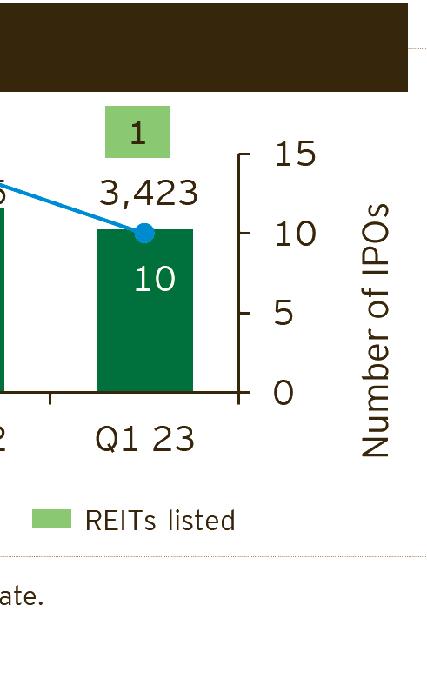
“The outlook remains positive for IPOs in the MENA region,” Hughes says, adding that there are multiple transactions that will likely convert in the next 12 to 24 months with listings in various geographies across sectors and of varying shapes and sizes.
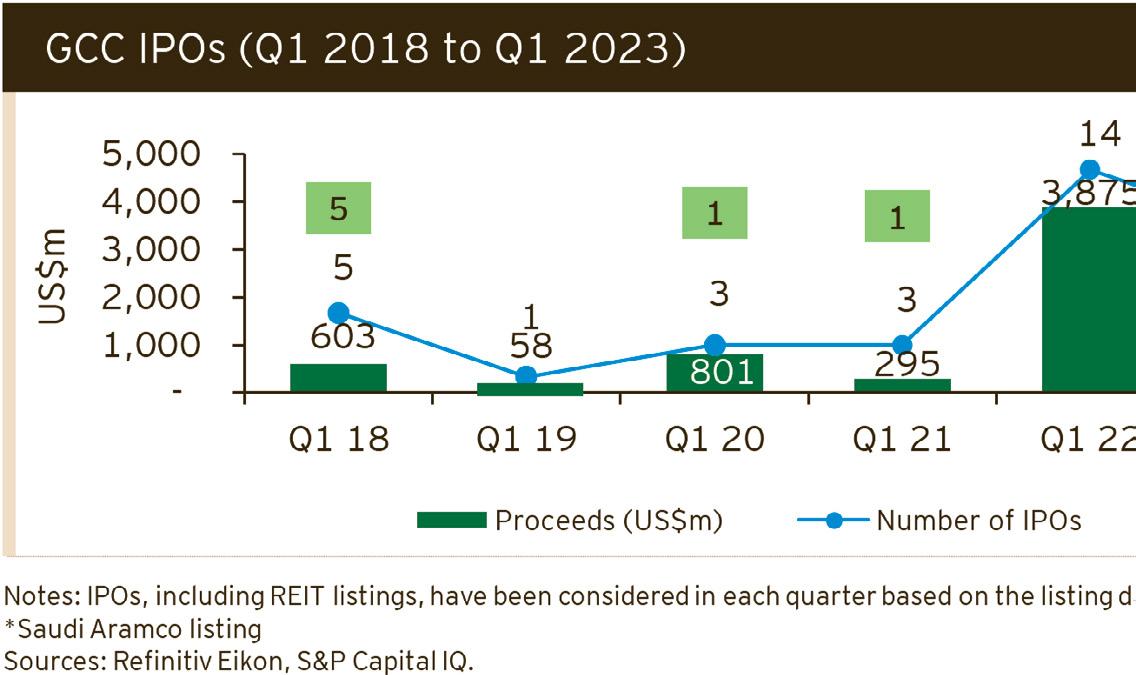
Qatar’s $275m market-maker programme is the latest in a string of initiatives that are being implemented
across the Gulf region to support private and state-owned entities on their path to IPO. Qatar’s initiative will run over the next five years and the country’s wealth fund said it o ers an economic incentive by way of a rebate to lower trading costs for established market makers.
Qatar Stock Exchange is working to increase listings and introduce more exchange-traded funds and derivatives as the stock market is preparing to welcome its first public o ering in almost three years. The exchange missed out on a listing frenzy that made the GCC an IPO oasis in a desert of dried-up deals.
Saudi Exchange, ADX and DFM have unveiled an array of initiatives including flexibility on the minimum stake size required for share sales and promised to reduce or wave o listing fees in a bid to encourage more domestic listings.
“Generally, we have seen more appetite internationally for secondary listings to take place on either ADX or DFM, as opposed to markets in the rest of the
GCC,” Sabur says, adding that with Saudi Arabia’s ambition for the Tadawul to be amongst the top exchanges in the world, they would anticipate further government-led promotion of the Saudi Exchange.
Abu Dhabi launched a $1.4bn IPO fund in October 2021 to incentivise private companies to list on the ADX. The IPO fund will be reportedly overseen by the Supreme Council for Financial and Economic Affairs, managed by the Abu Dhabi Department of Economic Development and it will invest in five to ten private companies per year. The exchange also reduced trading commissions by 50 per cent and extended trading hours by one hour to enhance market liquidity and attract foreign investors. The Abu Dhabi exchange is expanding partnerships with other exchanges and increasing its institutional investor base through Tabadul Hub, a platform that currently counts Bahrain Bourse, Astana International Exchange and MSX among its members.
Dubai approved the establishment of a $545m market-maker fund in November 2021. The emirate also launched a Dhs1bn fund to encourage tech companies to list on DFM. The Dubai government listed five of the 10 committed government and state-owned companies in 2022. PwC said Dubai’s D33 Economic Agenda will likely lead to additional capital raising activities.
“We expect the privatisation of stateowned assets to continue – for instance, six of Dubai’s planned state-owned listings as announced in November 2021 are yet to take place,” adds Hassan.
Hassan also expects the recent IPOs of private businesses in the UAE and Saudi Arabia to accelerate the listing of non-state-owned entities and family businesses, driven by the recent highprofile events in the region, such as the Expo 2020 and the FIFA World Cup, which helped bring global investors’ attention to the region. For the time being, the GCC pipeline looks positive with several companies announcing their intention to go public. Governments and private companies are also keen to sell equity while there is strong interest in the region.
WE EXPECT THE PRIVATISATION OF STATE-OWNED ASSETS TO CONTINUE – FOR INSTANCE, SIX OF DUBAI’S PLANNED STATE-OWNED LISTINGS AS ANNOUNCED IN NOVEMBER 2021 ARE YET TO TAKE PLACE”
WE EXPLORE HOW THE MIDDLE EAST REGION IS EMBRACING ESPORTS AND GAMING AS A SIGNIFICANT CULTURAL AND ECONOMIC FORCE
WORDS DIVSHA BHAT

OVER THE PAST DECADE, the Middle East has witnessed a remarkable surge in the growth of esports and gaming, transforming the region into a thriving hub. This burgeoning industry has captivated the region’s youth, attracting both players and spectators, and has garnered significant attention from investors, sponsors and organisations alike.

One of the key factors contributing to the rise of esports in the Middle East is the increasing availability of high-speed internet and advanced gaming infrastructure. Countries such as the UAE, Saudi Arabia and Qatar have made substantial investments in technology and connectivity, providing gamers with a seamless online
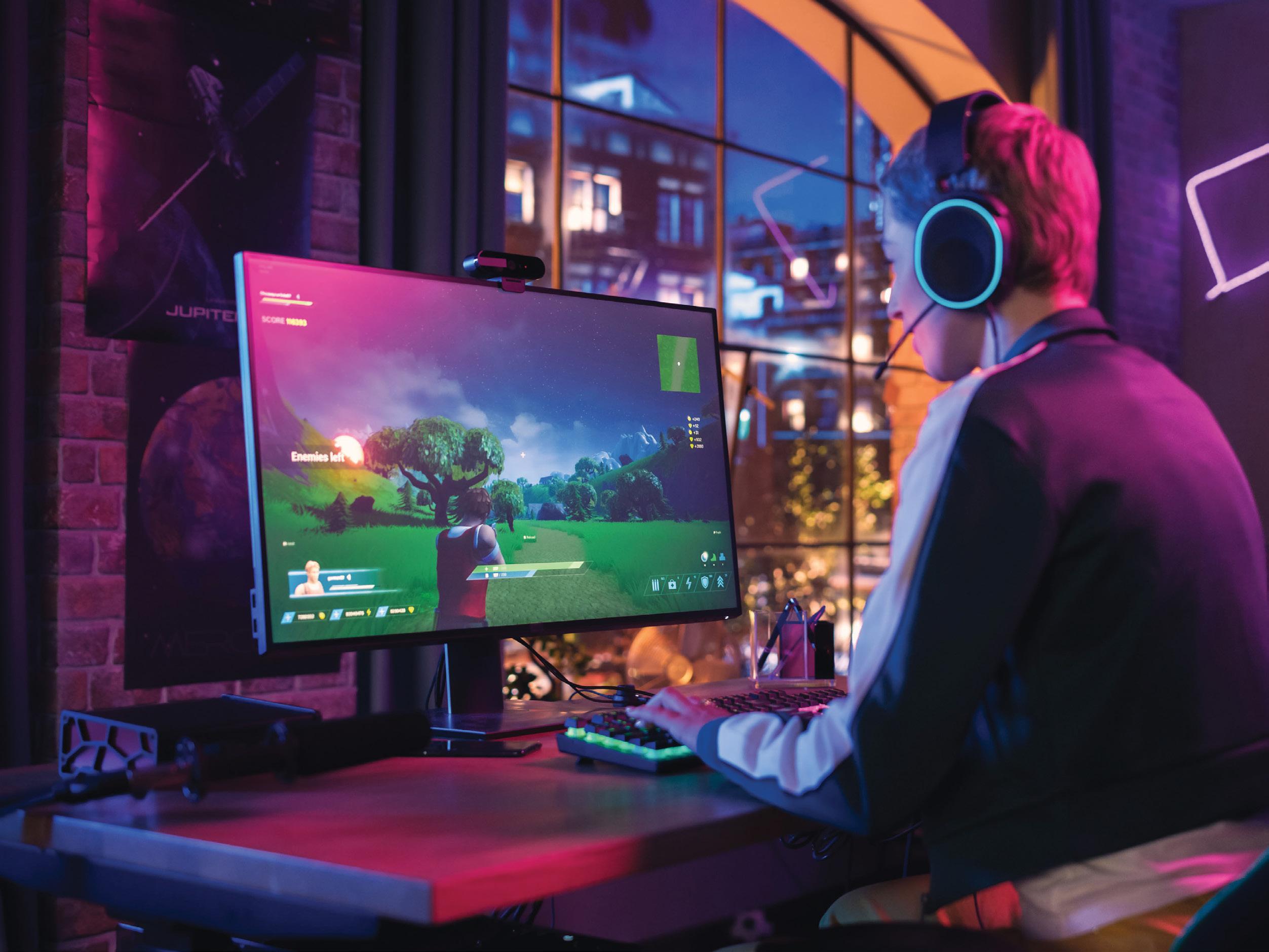
gaming experience and enabling them to compete globally. This has led to a surge in the number of Middle Eastern gamers participating in international tournaments and establishing a strong presence on the global esports stage.
Moreover, the Middle East has seen a rise in dedicated gaming arenas and esports facilities. These venues provide gamers with state-of-the-art equipment, professional coaching and a social space to connect with fellow gaming enthusiasts. They also serve as a hub for hosting esports tournaments and community events, boosting the visibility of gaming in the region.
BCG’s latest gaming report titled ‘Game Changer: Accelerating the Media Industry’s Most Dynamic Sector’, highlights that more than 60 per cent of the population in

the Middle East are gaming enthusiasts, resulting in one of the highest shares of gaming mobile app downloads.
Dr Alexander Schudey, managing director and partner at BCG, states: “The Middle East is a key player in the global gaming industry, with an impressive penetration rate and a strong commitment from governments to invest in the sector. The region’s focus on gaming and the establishment of dedicated gaming hubs makes it an attractive destination for global gaming companies.
The young and digitally savvy population, particularly in Saudi Arabia, where 70 per cent of the population is below the age of 30, combined with higher disposable incomes and a preference for indoor activities due to the hot weather, further contribute to the region’s thriving gaming ecosystem.”


Khaldoun Mahmoud, head of Government Relations of BIGO for the MENA region, also attributes the region’s emergence as a consumer and creator hub to its young and digitally savvy population, extensive digital connectivity, and strong government support. “Within the region, Saudi Arabia, Egypt and the UAE stand at the forefront of this revolution, leveraging technological advancements and attracting diverse and inclusive audiences,” he says.

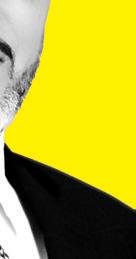
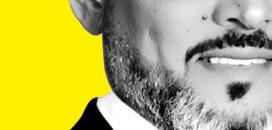
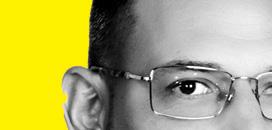


The Middle East has witnessed the UAE emerge as a prominent destination for esports and gaming. Capitalising on its advanced technological infrastructure and thriving gaming community, the country has successfully hosted major tournaments and attracted international players. By investing significantly in the development of dedicated gaming arenas and stateof-the-art facilities, the UAE o ers gamers access to top-notch equipment and a vibrant gaming ecosystem. Furthermore, the UAE government’s supportive policies and initiatives have played a pivotal role in nurturing the growth of esports and gaming, establishing the nation as a hub for both professional players and enthusiasts.
One notable example of the UAE’s commitment to fostering the gaming industry is the DMCC Gaming Centre, launched by Dubai Multi Commodities Centre (DMCC), the UAE’s free trade zone, last year. The centre provides a platform for gaming industry professionals to connect, collaborate and explore new opportunities. With over 50 gaming companies currently located in the DMCC, including developers, producers, esports teams and tournament organisers, the facility o ers a fully digital setup process and infrastructure to support companies looking to expand globally and engage with diverse audiences.
In another pioneering initiative, Aldar Education and Lenovo unveiled the first esports hub at a K-12 school in Abu Dhabi earlier this year. Situated in Aldar Education’s West Yas Academy, the facility grants students access to gaming equipment and so tware, enabling them to explore the world of esports. The esports zone at the academy features PCs and monitors, ensuring an immersive gaming experience for students.
Furthermore, My.Games, the Amsterdam-headquartered video game developer recently announced Abu Dhabi as its regional hub for the MENA market. “The Middle East countries heavily invest in the development of young people so that they can start a career in gaming.
COUNTRIES SUCH AS THE UAE, SAUDI ARABIA AND QATAR HAVE MADE SUBSTANTIAL INVESTMENTS IN TECHNOLOGY AND CONNECTIVITY, PROVIDING GAMERS WITH A SEAMLESS ONLINE GAMING EXPERIENCE AND ENABLING THEM TO COMPETE GLOBALLY”
At My.Games we plan to work with AD Gaming and universities to create various opportunities for talented students as we strongly believe that helping the local gaming community to grow will only enrich the gaming industry,” says Vladimir Nikolsky, CEO of My.Games.
Moreover, Abu Dhabi’s AD Gaming forged a partnership with SAWA Group, a game publishing and esports company. SAWA Group specialises in localising global video games, particularly those developed in China, and aims to make its vast game library more accessible to Arabic speakers across the MENA region. Through this collaboration, Chinese gaming and esports companies will be facilitated in their international expansion via Abu Dhabi, while the local industry gains access to new audiences.
Moving to Saudi Arabia, in 2022, the kingdom introduced its National Gaming and Esports Strategy, with the objective of positioning the country as a global centre for the gaming industry by 2030. The strategy encompasses three key goals: enhancing players’ experiences to improve their quality of life, o ering new entertainment opportunities, and generating a significant economic impact by contributing approximately SAR50bn to the GDP, both directly and indirectly. By 2030, the strategy aims to create around 39,000 direct and indirect job openings.






Additionally, Saudi Arabia’s Public Investment Fund (PIF) emerged as the largest external shareholder of Nintendo this year, owning 8.3 per cent of the Kyotobased company. The investment marked PIF’s third venture into Japanese gaming companies, having previously acquired shares in Nexon and Capcom, the creators of Street Fighter.


Recently, Savvy Gaming Group, a subsidiary of PIF, made headlines by acquiring mobile games studio Scopely for a staggering $4.9bn. Scopely is known for its popular mobile games such as YahtzeeWithBuddies, Star TrekFleetCommand, MarvelStrikeForce, StumbleGuys and Scrabble Go. Savvy Gaming Group plans to operate Scopely as an independent entity under its umbrella, which also includes esports companies ESL and Faceit, as well as the Swedish gaming firm Embracer.
Furthermore, earlier this year, the Saudi National Bank announced a strategic partnership agreement with Mastercard and the Saudi Esports Federation (SEF) to accelerate the digital transformation of Saudi Arabia and enhance its gaming and esports infrastructure. Leveraging Mastercard’s existing relationship with SEF, this collaboration aims to promote the kingdom’s gaming industry. The three entities will collaborate to create novel experiences powered by Web3 technology, providing gamers with exclusive benefits and immersive experiences in both the physical and digital realms.






In a similar vein, Doha-based Quest Esports unveiled its ‘Gaming District’ in Qatar’s capital as part of its partnership with the Qatar Esports Federation to advance the esports scene in the country. The Gaming District project was launched in 2022, with the aim of fostering the growth and development of esports in Qatar.

In the Middle East, one of the most popular esports titles is undoubtedly Counter-Strike: Global O ensive (CS:GO). The competitive scene for CS:GO has gained significant traction, with numerous tournaments and leagues attracting top teams from the region. Another highly popular esports title is League of Legends, which has a dedicated fan base and competitive circuit. The

WITHIN THE REGION, SAUDI ARABIA, EGYPT AND THE UAE STAND AT THE FOREFRONT OF THIS REVOLUTION , LEVERAGING TECHNOLOGICAL ADVANCEMENTS AND ATTRACTING DIVERSE AND INCLUSIVE AUDIENCES”
IN THE EMIRATES, APPROXIMATELY 64 PER CENT OF ADULT MALES ONLINE AND 58 PER CENT OF FEMALES ONLINE ARE INVOLVED IN DIGITAL GAMING




Females
Males
MORE THAN 60 PER CENT OF THE POPULATION IN THE MIDDLE EAST ARE GAMING ENTHUSIASTS, RESULTING IN ONE OF THE HIGHEST SHARES OF GAMING MOBILE APP DOWNLOADS

60+
Gaming enthusiasts
SAUDI ARABIA’S PUBLIC INVESTMENT FUND (PIF) EMERGED AS THE LARGEST EXTERNAL SHAREHOLDER OF NINTENDO THIS YEAR, OWNING



8.3 % OF THE KYOTO-BASED COMPANY





BY 2030, SAUDI’S NATIONAL GAMING AND ESPORTS STRATEGY AIMS TO CREATE AROUND



39,000






DIRECT AND INDIRECT JOB OPENINGS


DOHA-BASED QUEST ESPORTS UNVEILED ITS ‘GAMING DISTRICT’ IN QATAR’S CAPITAL AS PART OF ITS PARTNERSHIP
WITH THE QATAR ESPORTS FEDERATION TO ADVANCE THE ESPORTS SCENE IN THE COUNTRY
Middle East is also witnessing a rise in mobile gaming, particularly games like PUBG Mobile and Free Fire. These titles have captured the attention of the gaming community, with regional tournaments and events drawing large audiences.
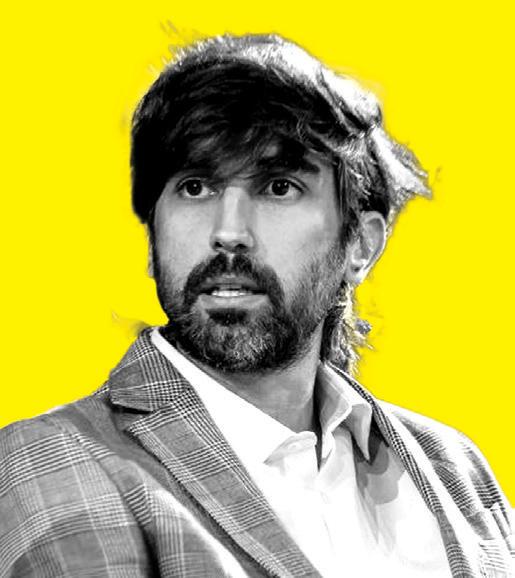
MENATech CEO Mario Pérez highlights that within the university ecosystem, Amazon University Esports stands out as one of the most known esports tournaments across Europe, the Middle East, and Latin America. MENATech (a company of GGTech Entertainment) organises these competitions, and Pérez emphasises their popularity and significance. “The previous season of the Amazon University Esports competition attracted representatives from around 220 universities and had more than 10,000 participants from across the region. Players compete in their respective national competitions. The winners have the chance to participate in Amazon University Esports Masters, the international competition in which they aim to become MENA University Champions. With the abundance of talent emerging from the region, many publishers are localising their games in Arabic and organising competitions that showcase the region’s capabilities on the international stage,” he states. Meanwhile, the free live streaming platform, Bigo Live has actively forged partnerships with various game publishers. It has become a key platform for the live streaming coverage of major esports events in the region. Notably, it has successfully hosted all seasons of Mobile Legends: Bang Bang, Mobile Premier League and the M4 World Championship since 2022, o ering comprehensive coverage of both online and o ine matches. Additionally, the brand has collaborated with PUBG Mobile, organising events such as the PUBG Challenger Tournament in the region.
“We have also embraced the spirit of PUBG Mobile by hosting numerous themed events for our region, celebrating occasions like the summer season, Ramadan, and the creativity of PUBG Mobile creators, notes Mahmoud.
Diversity in esports and gaming is gaining momentum in the Middle East, representing a significant shi t in the region’s gaming landscape. As more players, content creators and professionals from diverse backgrounds emerge, the community becomes more inclusive and representative. The Middle East is witnessing a surge in esports tournaments, organisations, and initiatives that embrace diversity, fostering a space where individuals of di erent genders, races, ethnicities and cultural backgrounds can thrive. This wave of inclusivity is challenging stereotypes and promoting unity, breaking down barriers and o ering opportunities for talent to shine. For instance, last year, G2 Esports, announced the addition of the first GCC-based, female gamer, Maryam “Mary” Maher, to the G2 Gozen roster. Making her Tier 1 debut at just 16, Bahrain’s Maher has been showcasing her skills in online video games such as Fortnite since 2017.
“Gender diversity and inclusivity are actively being addressed in the esports sector, with many talented women showcasing their skills and professionalism in this field. In fact, there has been a notable increase in the number of female players, sometimes even surpassing their male counterparts, as well as an increase in the participation of individuals from the Gen X age group (between 41 and 56 years),” explains Pérez.
“Reports indicate that in the Emirates, approximately 64 per cent of adult males online and 58 per cent of females online are involved in digital gaming. Similarly, in Saudi, there are 68 per cent of online male gamers and 69 per cent of online female gamers. These statistics demonstrate the growing engagement of women in gaming and esports, reflecting the e orts made to promote gender diversity and inclusivity in the sector.”
The Middle East has experienced a remarkable expansion in esports and gaming, fuelled by technological advancements, the hosting of major tournaments, increased investment, and the establishment of dedicated gaming facilities.
As the industry continues to thrive, the Middle East is poised to become a prominent player in the global esports landscape, showcasing the region’s talent and passion for competitive gaming to the world.
THE PREVIOUS SEASON OF THE AMAZON UNIVERSITY ESPORTS COMPETITION ATTRACTED REPRESENTATIVES FROM AROUND 220 UNIVERSITIES AND HAD MORE THAN 10,000 PARTICIPANTS FROM ACROSS THE REGION”Mario Pérez

TECHNOLOGY AND SUSTAINABILITY TRENDS ARE TRANSFORMING THESE SECTORS AT A RAPID RATE













 Illustration: Getty Images/tarras79
Illustration: Getty Images/tarras79
SHARED MOBILITY, MICROMOBILITY AND AUTONOMOUS VEHICLES ARE SET TO BECOME MAINSTREAM IN THE COMING YEARS, AS CONNECTIVITY BECOMES A MAJOR PASSION POINT FOR THE YOUNGER CUSTOMER BASE, SAY EXPERTS

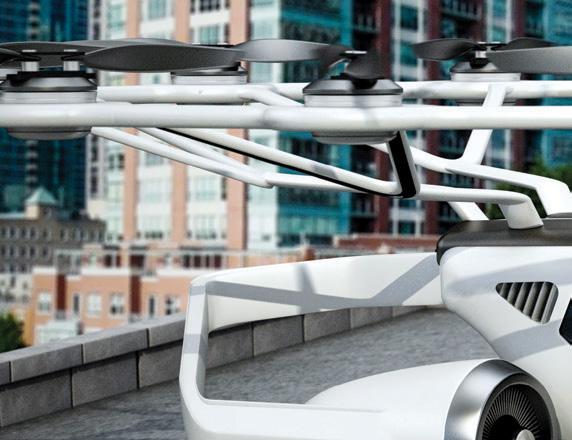 BY KUDAKWASHE MUZORIWA
BY KUDAKWASHE MUZORIWA
The discovery of the internal combustion engine in the 1800s was a flashpoint for technological, economic and social innovation, truly a game changer that revolutionised people’s lives for the better.
However, it’s time to buckle up tight as we enter the mobility sector’s second major revolution. The coming years will see levels of disruption expected to exceed those of the previous decades.
The global mobility sector is undergoing an unprecedented transformation as new business models are opening up additional revenue streams at upstream, midstream and downstream levels

driven by emerging technologies and changing customer preferences and expectations.


The World Economic Forum said that cuttingedge technologies such as self-driving cars and mobility-as-a-service are transforming mobility by enabling innovative business models and services to meet customers’ demands.
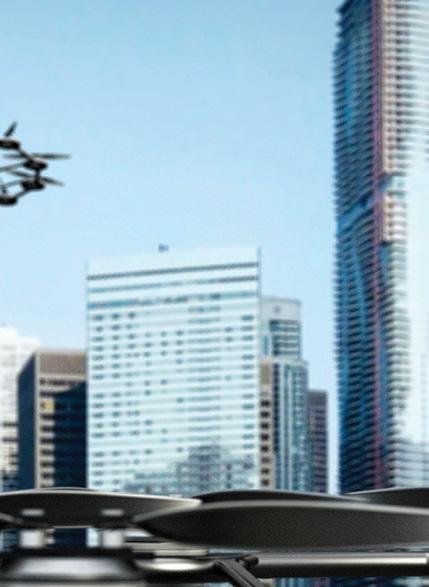

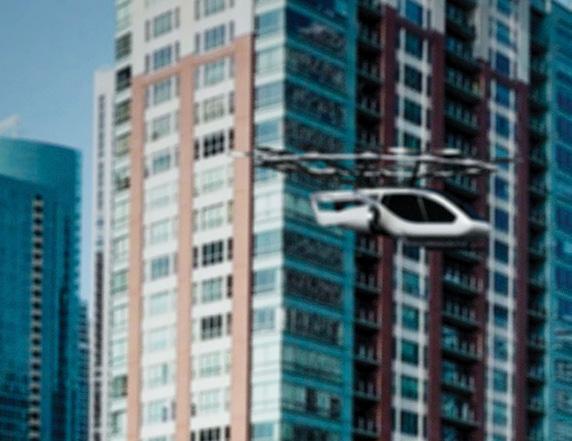
“The future of mobility is about more than just cars,” says Irfan Tansel, CEO of Al Masaood Automobiles. “It’s about new ways of getting around that are more sustainable, efficient and convenient.”
Tansel expects an increase in shared mobility, micromobility and autonomous vehicles in the

coming years as connectivity becomes a major passion point for the younger customer base.
Technological innovations are fuelling the growth of autonomous driving, connectivity, electrification and micromobility to meet rising demand from urban populations. The mobility sector is grappling with a wave of new technologies and customer expectations that are driving innovations such as advanced air mobility.

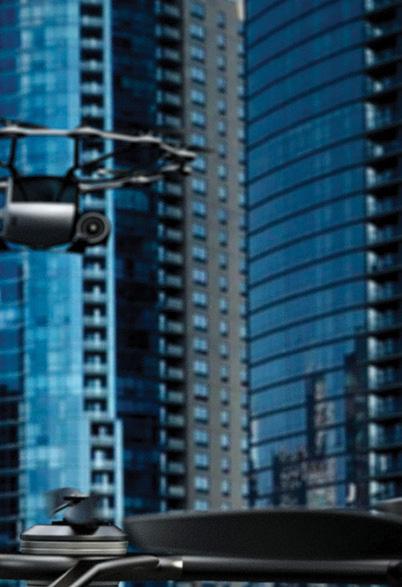

The dazzling array of innovations in the mobility sector is steering the future of mobility along a safe and sustainable path. “Cities that tackle future mobility challenges, particularly as it relates to public transit, will be better prepared for future disruptions with resilient and sustainable economies,” according to a study from Oliver Wyman and the University of California Berkeley.
The accelerated shi t to sustainable mobility is being driven by policies that are being implemented by governments worldwide. The International Energy Agency said that public spending on subsidies and incentives for electric vehicles (EVs) nearly doubled in 2021 to nearly $30bn globally.

The same is true for the UAE, where the electric car market has grown exponentially over the years, thanks to government-led initiatives that are advancing infrastructure and installing electric charging stations.
The electric car market in the UAE is projected to grow at an annual rate of 27.2 per cent between 2023 and 2027, Naser Al Bahri, director of the Electric Vehicle Innovation Summit (EVIS) said at the second edition of EVIS in Abu Dhabi in May.

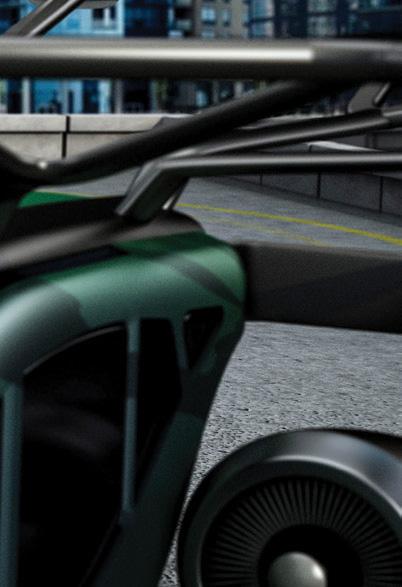
Dubai’s Roads and Transport Authority (RTA) recently partnered with Al-Futtaim Automotive to deploy 360 vehicles including electric and hybrid variants.
The transport authority plans to convert its fleet – both buses and taxis – to electric and hydrogen-powered by 2050 and 2040, respectively. On the infrastructure front, Abu Dhabi’s TAQA and ADNOC Distribution established E2GO, a mobility venture to build and operate electric vehicle infrastructure in Abu Dhabi and the wider UAE.
The UAE launched the Smart Mobility Think Tank in February, a new venture that is set to position the country as a global centre of excellence and innovation for smart mobility.
The Smart Mobility Think Tank will provide a platform to enhance partnerships between the public and private sectors. It will also enable cross-emirates collaboration to enhance the economy and attract global talents in the smart mobility sector and to find and implement innovative and optimum smart mobility solutions.
Speaking at the launch of the platform, Suhail bin Mohammed Al Mazrouei, UAE Minister of
DUBAI’S ROADS AND TRANSPORT AUTHORITY (RTA) RECENTLY PARTNERED WITH AL-FUTTAIM AUTOMOTIVE TO DEPLOY 360 VEHICLES INCLUDING ELECTRIC AND HYBRID VARIANTS
The future of mobility is about more than just cars. It’s about new ways of getting around that are more sustainable, efficient, and convenient”
Energy and Infrastructure, said the new venture will support the country’s e orts to achieve its goals on sustainable development and climate action by reducing carbon emissions produced by the transport sector.
The transportation sector is one of the largest contributors to climate change, accounting for a quarter of all energy-related greenhouse gas emissions, according to McKinsey. However, smart mobility initiatives will form the backbone of mobility in the future.
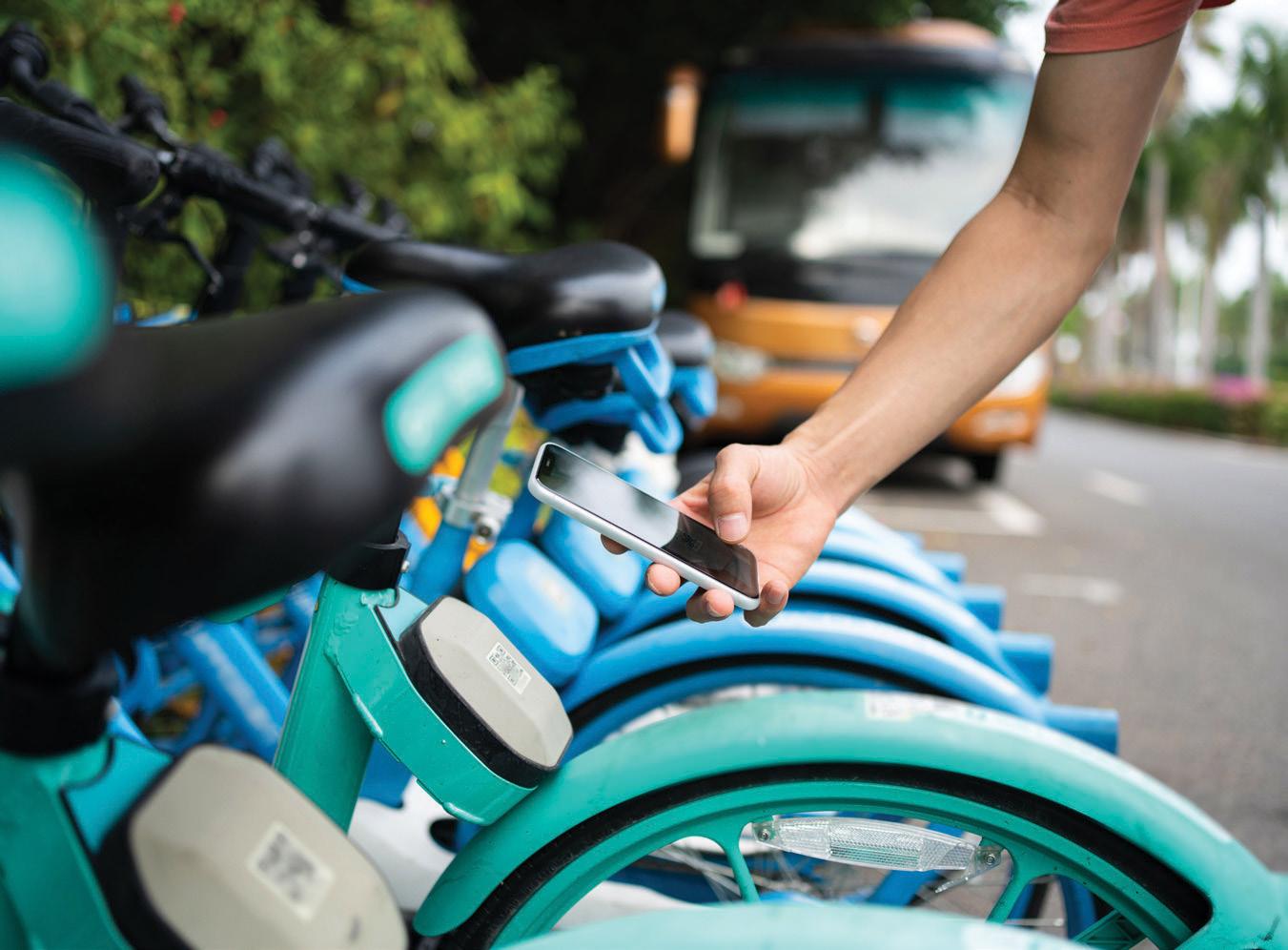
Antoine Barthes, vice president of Al-Futtaim Automotive, says: “Green mobility is a nonnegotiable business reality, with both Dubai and the UAE making firm commitments to achieving net zero by 2050, and as one of the leading mobility companies in the country, we know we have a big role to play.”
Al-Futtaim is one of the UAE’s automotive groups with a dedicated green mobility-focused company, the Al-Futtaim Electric Mobility Company. The company’s electric mobility unit has partnered with several automakers such as BYD and Polestar to provide a spectrum of green mobility products and solutions. It also launched its charging infrastructure company Charge2Moov in partnership with Siemens.
Electrification is key to the transformation of the mobility sector and presents major opportunities in all vehicle segments ranging from e-scooters to passengers to buses.
With 68 per cent of the world population expected to be urbanised by 2030, population
growth is creating a significant need for innovative mobility options as ground infrastructure is becoming heavily congested.
Technological advancement in electric propulsion and enhanced battery capacity is fuelling the growth of urban air mobility. The concept envisions a safe and ecient transportation system that will use highly automated aircra t that will operate and transport passengers or cargo at lower altitudes within urban and suburban areas.
In February, Sheikh Mohammed bin Rashid Al Maktoum, Vice President and Prime Minister of the UAE and Ruler of Dubai approved models of aerial taxi vertiports that are being developed as the futuristic city is planning for the takeo of flying taxis by 2026. Similarly, VPorts applied for certification for its vertiports in the Mohammed bin Rashid Aerospace Hub (MBRAH) in Dubai South in June. The advanced air mobility infrastructure construction and operation firm also plans to build Ras Al-Khaimah’s first vertiport.
In 2021, Chinese electronic carmaker Xpeng completed the first public test flight of its twoseater flying car in Dubai, joining dozens of electric vertical takeoff and landing (eVTOL) aircra t under development globally. Other well-established aircra t and car manufacturers including Boeing, Airbus, Toyota and Hyundai are investing in the nascent advanced air mobility industry.
Though eVTOLs are not yet part of our daily lives, the technology is advancing, regulators are developing certification pathways and the public is intrigued.

Green mobility is a non-negotiable business reality, with both Dubai and the UAE making firm commitments to achieving ‘net zero’ by 2050, and as one of the leading mobility companies in the country, we know we have a big role to play”
MODELS OF AERIAL TAXI VERTIPORTS ARE BEING DEVELOPED AS THE FUTURISTIC CITY IS PLANNING FOR THE TAKEOFF OF FLYING TAXIS BY 2026
Smart cities are being confronted with the consequences of urbanisation as the growing urban population is presenting authorities with urgent challenges around air quality, congestion and resource allocation.
The responses from the world’s leading smart cities such as Singapore, Dubai and Abu Dhabi make it clear that MaaS has the potential to solve traffic congestion and pollution through cleaner vehicle fleets and fewer journeys.
Mobility-as-a-service aims to address the question of smart mobility by upending the need for private ownership (car, motorcycle or other modes of mobility) and instead provide users with access to the most optimal mode of mobility on a trip-by-trip basis. It is the ideal response to modern-day urban transport trends where multiple modalities such as train, rideshare and bicycle hire are often routinely combined by users to complete a single trip.
For investors and enthusiasts alike, autonomous technology and self-driving cars have long been among the most interesting areas in the mobility sector. The capabilities that they are bringing to the market have grabbed the attention of regulators and the acceptance of customers globally.
S&P Global projected that by 2030, one in three vehicles sold globally will feature autonomous driving capabilities. There are five different levels of autonomous driving and each stage describes the extent to which a vehicle takes over tasks and responsibilities from its driver as well as how the car and driver interact.
The race to bring the first fully autonomous driving vehicle to the market has intensified with mainstream car makers and software suppliers, including Tesla, Cruise, Toyota, Wymo and Baidu vying for the top spot.
Abu Dhabi’s Integrated Transport Centre recently carried out a smart mobility study, which comprised a fleet of three automatic rapid transit
vehicles, eight autonomous robo taxi vehicles, and six robo minibuses, in Yas and Saadiyat Islands. Driverless taxis could become a regular fixture on Dubai’s roads soon. Cruise, the self-driving car startup majority-owned by General Motors, plans to debut in Dubai in 2023 – making the city the first to operate a self-driving taxi outside the US.
Dubai’s RTA and Cruise have been mapping out the roads in parts of the city using a fleet of five electric cars to test the vehicles’ technology and gather data on traffic signals, signage and driver behaviour.
The emirate recently issued a new law that regulates the use of self-driving cars to accelerate the city’s smart mobility ambitions, attract investments and provide a regulatory environment that facilitates the use of AI in the transport industry.
There has been a massive increase in micromobility usage, micromobility ownership and in micromobility that is shared since the outbreak of Covid-19 three years ago.
While still in an initial phase, increasing regulation covering electric mopeds, e-scooters and bikes in the UAE indicates that smart cities are embracing the trend.
Dubai and Abu Dhabi have been investing heavily to bring micromobility infrastructure – bike lanes and parking solutions – to global standards.
“The rise – and further development – of these innovations will have a major impact on the way we work, live and move, and they will address the imperative for a more sustainable and emissionsfree mobile future,” says Tansel.
TAXIS COULD BECOME A REGULAR FIXTURE ON DUBAI’S ROADS SOON. CRUISE, THE SELF-DRIVING CAR STARTUP MAJORITYOWNED BY GENERAL MOTORS, PLANS TO DEBUT IN DUBAI IN 2023
When managed sustainably and integrated efficiently within the existing transport ecosystem, e-scooters and e-mopeds can help decarbonise the transport sector while improving the quality of urban life. Micromobility is popular in extreme weather conditions and could provide a quick, effective and cheap solution to beating the heat in the UAE.
Over the years, the UAE has made considerable investments in mobility to reduce traffic congestion, accidents and air pollution. A sustainable transportation sector is part of the UAE’s broader strategy to achieve net zero emissions by 2050, with the country positioning itself as the hub for automated vehicles and smart mobility research and development.
In 2020, SenseAware monitoring technology was used in the delivery of Covid-19 vaccines.

How is the company leveraging innovation to boost express distribution in the region?
We are continuously embracing digital innovations while keeping customers at the core of everything we do. For example, during the pandemic and the surge in e-commerce shopping, consumers’ delivery expectations grew increasingly specific, demanding ease, simplicity, and convenience. This is where our e-commerce delivery solutions helped recipients customise their package delivery to fit around their busy schedules, enhancing the lastmile delivery experience.
In the UAE, FedEx also integrated WhatsApp into our delivery solution, providing consumers with peace of mind through the traceability of their package on their mobile devices. In addition, o ering online shoppers picture proof of delivery gives them assurance that their package has been delivered to their door.
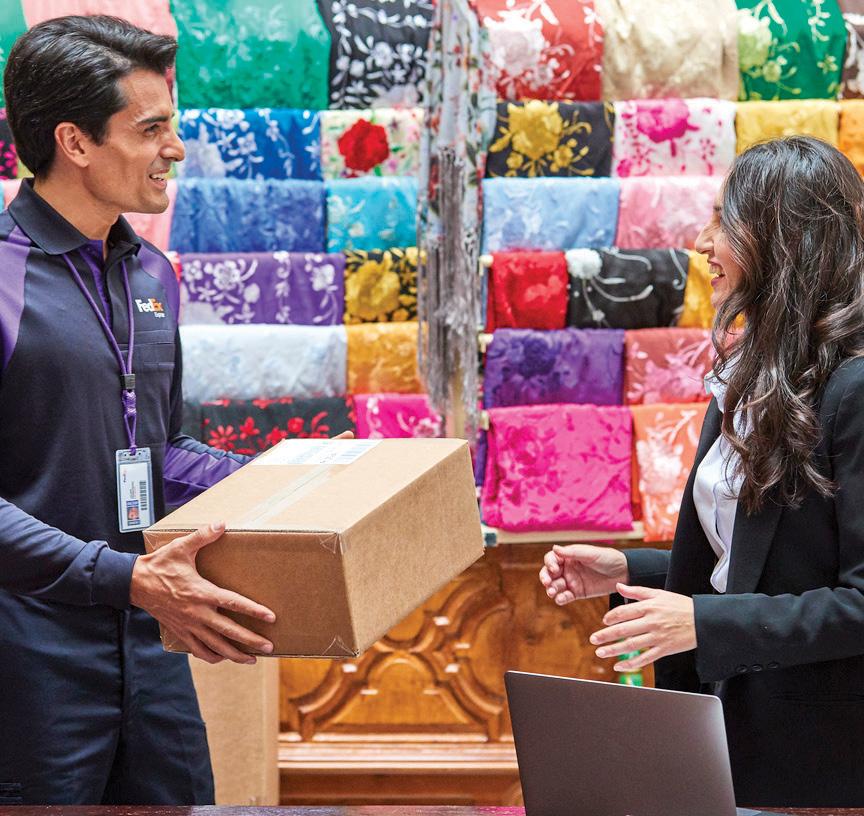
Tell us how the company is harnessing mobility, automation and sustainability.
BY NEESHA SALIANWhat are some of the key milestones that FedEx is celebrating with its global operations hitting the 50th-year mark?
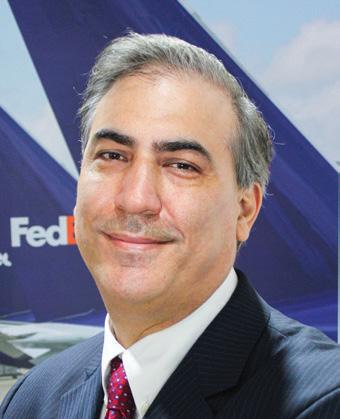
One of our most outstanding achievements was establishing the tracking number in 1979, which was game-changing for FedEx and has since become a standard in the logistics and shipping industry. In 1994, we launched fedex.com, making it the first transportation website to o er online package status tracking.
Twenty years later, FedEx launched SenseAware in the UAE, making it the first country in the Middle East to implement an innovative solution for businesses shipping time-sensitive and high-value products. The device can monitor the current location, precise temperature, humidity, barometric pressure, light exposure and shock events. The near real-time updates make it possible for customers to stay connected to their high-value shipment throughout its journey, providing them peace of mind.
Many technologies – from internet of things, artificial intelligence (AI) and autonomous tech to advanced robotics – are already integrated into our daily lives. Technology and innovation are ingrained in our DNA, driving us to transform and adapt to this digitally changing world.
For instance, we are teaming up with Microso t and putting data to work through our digital and physical networks. Our data-driven transformation provides advanced visibility and control over worldwide goods movement, enabling faster and more e cient deliveries.
We are also taking advantage of AI and automation in our facilities. The upcoming FedEx Express regional air and ground hub near Al Maktoum International Airport (DWC) at Dubai South’s Logistics District, will incorporate advanced technologies, including an automated and advanced sorting system, hi-speed security screening equipment, cold-chain services and capabilities to manage dangerous goods.
Like any other industry, we are leaning on advanced technologies to support sustainability
TAAREK HINEDI, VICE PRESIDENT OF FEDEX EXPRESS MIDDLE EAST AND AFRICA OPERATIONS, SHOWCASES WHY THE COMPANY IS A PIONEER IN EXPRESS TRANSPORTATION
and operational efficiency. For example, we recently concluded the electric vehicle (EV) trials in the UAE. Once these EVs are deployed as part of our fleet, they will contribute to reducing our carbon emissions.
From rising electrification of transport to sustainable aviation fuels (SAF) and biofuels – how are they transforming the logistics industry?
The logistics industry is undergoing a major transformation as businesses look to reduce their environmental impact. Our journey to greener transport is one we have been on for some time. In 2003, we set a record for being the first delivery company in the world to use hybrid vehicles for pickup and delivery. And way back in 1994, we even operated our first EV – a lead-acid batterypowered vehicle in California.
Fast forward to today, and we are on our way to achieving carbon-neutral operations by 2040. Across the Asia Pacific, Middle East and Africa region, we are bringing more EVs into the network. The EV trials in the UAE have concluded, with more planned in the coming year in other markets. To help advance emissions reduction goals, the company has deployed EVs in a number of countries, including India and South Africa, with the region’s largest EV fleet in China.
We are also working to replace 30 per cent of our jet fuel with alternative fuels. We are investing in aircraft modernisation and advocating for the scale-up of the SAF market, which can reduce CO2 emissions by up to 80 per cent.
We have also invested $100m in 2021 to help establish the Yale Center for Natural Carbon Capture and support research for developing methods to capture and store carbon from the air using natural systems.
These new technologies offer several benefits, including reduced emissions, improved fuel efficiency, and increased sustainability, and will continue to play an increasingly important role in the logistics industry.
Tell us about the key trends you are seeing in the supply chain and logistics business. The supply chain and logistics industry is experiencing significant trends driven by digitalisation. One key trend we are seeing is the adoption of connected logistics, which enables efficient and timely shipment management.
Our teams are using machine learning, AI, and other advanced analytical methods to improve complex processes, prevent problems or make decision recommendations in real-time. Using technology and ever greater amounts of connected, continuous, and contextual data, we are transforming the way we operate. Most importantly, it helps us deliver more intelligent supply chains for our customers.
The logistics industry is currently grappling with several challenges. These include labour shortages due to changing demographics, supply chain delays stemming from unprecedented global demand and disruptions, and evolving regulatory frameworks that affect cross-border operations. Additionally, increasing customer expectations for faster, more transparent deliveries put pressure on operational efficiency.
In logistics, technologies such as AI are opening new possibilities for process efficiency and customer convenience. At the current rate of AI development, the industry will soon see customers placing shipment orders with simple verbal instructions via digital personal assistants.
We are responding to changing consumer lifestyles and needs, too. We have solutions that empower the end customer to manage their packages from their mobiles, scheduling deliveries and choosing from several delivery options at their convenience.
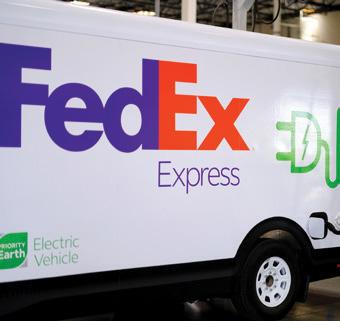
The ease of returns is now one of the most important factors in customer satisfaction for e-commerce businesses, after price. FedEx Returns Technology closes the gap between digital and physical, giving merchants full visibility into returns, enabling them to track shipments easily, manage inventory, analyse returns trends, and make more informed decisions based on shoppers’ returns behaviour.

WE HAVE INVESTED $100M IN 2021 TO HELP ESTABLISH THE YALE CENTER FOR NATURAL CARBON CAPTUREFEDEX IS ON ITS WAY TO ACHIEVING CARBON-NEUTRAL OPERATIONS BY 2040. THE COMPANY IS BRINGING MORE EVS INTO THE NETWORK ACROSS THE ASIA PACIFIC, MIDDLE EAST AND AFRICA REGION

QUSAI KANKAZAR, CHIEF OPERATIONS OFFICER, LOGISTICS CLUSTER, AD PORTS GROUP, TELLS GULF BUSINESS HOW THE GROUP IS GROWING ITS GLOBAL PRESENCE WHILE BOLSTERING ITS REGIONAL OPERATIONS
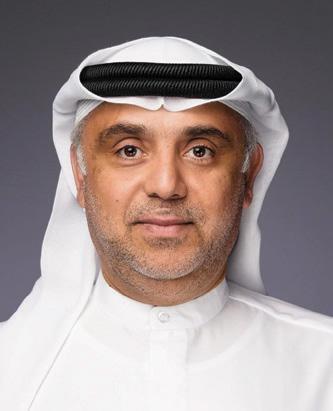
The previous year was significant for AD Ports Group’s Logistics Cluster. Tell us about the cluster’s significant achievements during this period.

I am pleased to say that the cluster has experienced remarkable growth and expansion during 2022 and over the first two quarters of this year. Our primary mission has been to establish ourselves among the top ten global logistics providers, o ering integrated end-to-end solutions that drive competitive value for our clients.
To accomplish our mission, we are actively pursuing growth opportunities and expanding our presence in major global markets through organic growth, acquisitions, joint ventures, and partnerships. We have made significant strides in this regard, especially in expanding our international presence, enhancing our capabilities and assets, and broadening our portfolio of services.

Regarding the international aspect of our expansion, the most important development has been the AD Ports Group’s acquisition of Noatum, a renowned logistics player with a strong foothold in key global markets across Europe, Asia, North and South America, and Africa. By bringing Noatum into our group family, we will expand our presence across 26 new countries, 16 new port terminals, and 143 international o ces –a remarkable development that will provide us with high growth potential and capacity to scale.
Furthermore, as you are aware, 2022 saw the group’s Logistics and Economic Cities & Free Zones Clusters launch KEZAD Logistics Park 21 (KLP21), the advanced food warehousing complex. The addition, consisting of four warehouses with mroe than 80,000 square metres of space and 100,000 pallets capacity, is one of the region’s largest and most advanced temperature-controlled logistics centres designed to support KEZAD’s upcoming 3.3-kilometre Abu Dhabi Food Hub. We are very excited to bring to market KLP21’s significant capabilities to serve the hub’s clients and partners and help achieve our government’s vision of positioning Abu Dhabi as a major regional and global centre for the production and wholesale of food across all major categories.
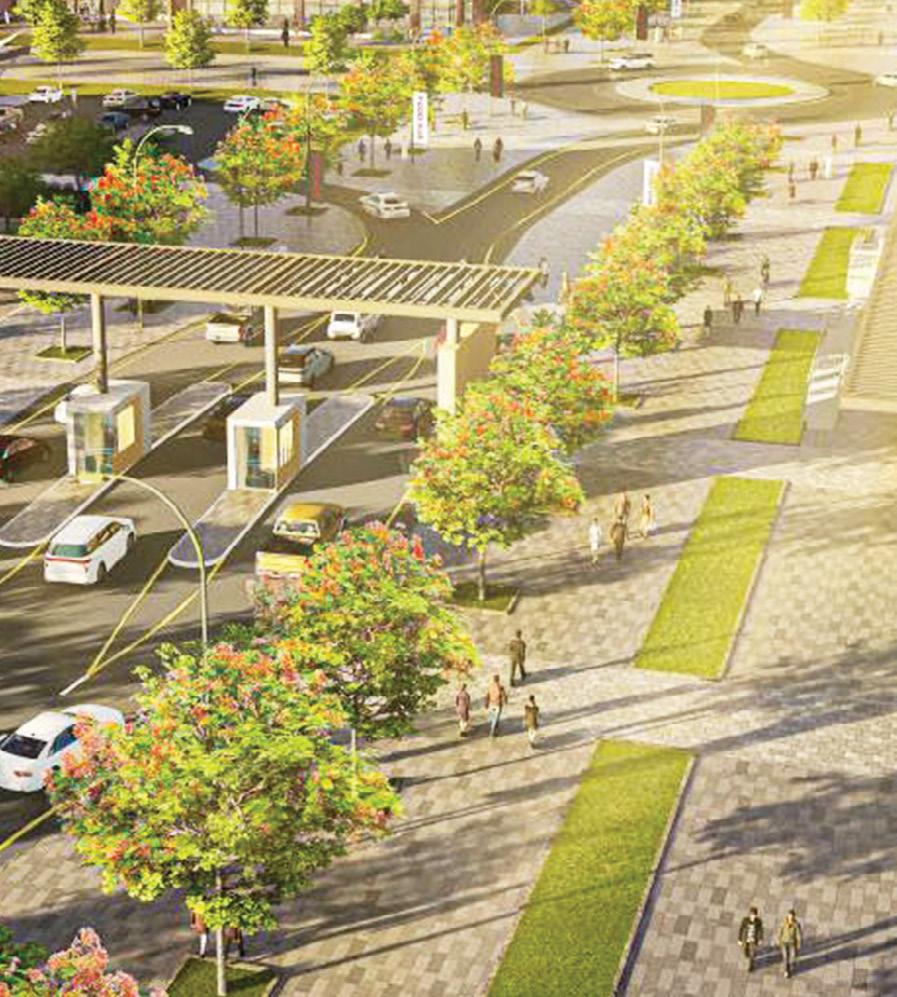
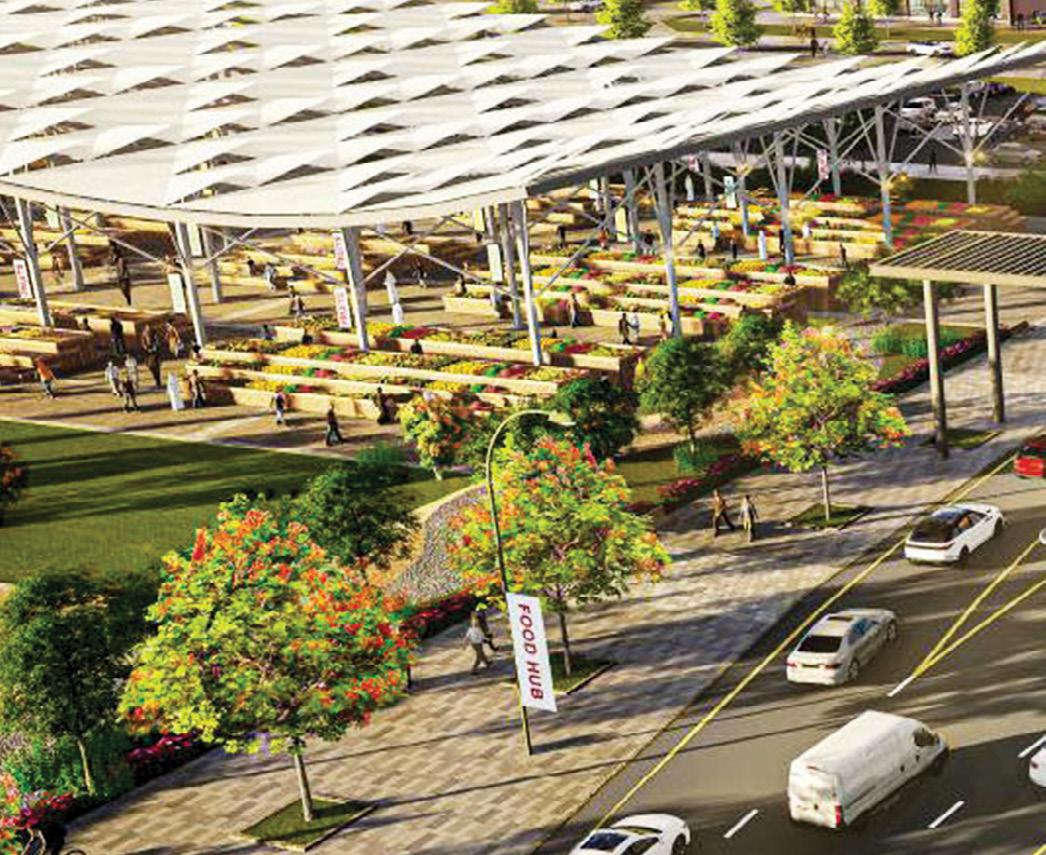
Looking at the global supply chains from a macro perspective, how do you see the logistics industry evolving to accommodate the post-pandemic dynamics, especially considering the trend towards near-shoring or on-shoring of strategic supplies?
Reflecting on the past three years, it is quite clear that the global supply chain industry had to begin pivoting away from the prevailing ‘just-intime’ logistics model due to its heavy reliance on production capacity in a limited number of jurisdictions and its inherent vulnerability to ‘black swan’ events such as the pandemic or subsequent geo-political issues.

With this context in mind, I firmly believe that the future of logistics lies in the integration of services and diversification of sourcing through a combination of far-shore, near-shore and onshore production. We have noted that customers are increasingly seeking out service providers that o er comprehensive solutions spanning production, sourcing, shipping, and final mile delivery – all within a single hub ecosystem. AD Ports Group is well-positioned in this environment as our cross-cluster structure, along with global expansion, enables us to integrate all our trade and logistics services across our Ports, Maritime, Digital, Economic & Free Zones, and Logistics Clusters within a single value o ering.
The development of the Abu Dhabi Food Hub, and by extension KLP21, serves the macro shi t towards more near-shore and on-shore production by allowing local, regional and international manufacturers to set up their operations in KEZAD, thereby allowing them to take advantage of a very favourable business environment, low energy costs, productive and cost competitive labour, and extremely well-developed local, regional and international logistics networks. In doing so, Abu Dhabi is helping to diversify global trade – a trend that will ultimately lead to more sustainable and reliable economic growth.
Tell us about KLP21’s progress since it was announced late last year.
Since the unveiling of KLP21 in Q3 2022, I am pleased to say that the complex has been fully completed and that it became operational earlier this year. AD Ports Logistics (ADPL), the logistic services arm of AD Ports Group’s Logistics Cluster, began operating one of the complex’s state-of-the-art 20,000 square-metre warehouses, which incorporates six multi-temperature chambers capable of accommodating 45,000 pallets at
By bringing Noatum into our group family, we will expand our presence across 26 new countries, 16 new port terminals, and 143 international offices – a truly remarkable development that will provide us with high growth potential and capacity to scale”
storage temperatures between -26°C to 25°C. The warehouse is equipped with an e cient racking which, coupled with the facility’s size, is capable of accommodating food and beverage shipments of varying sizes.
One of the facility’s key selling features is its ability to serve a combined local, regional and global marketplace of more than 4.5 billion consumers. This key feature is enabled by its strategic location at a midway point between Abu Dhabi and Dubai and its multimodal connectivity, which includes access to two major international airports at Abu Dhabi International Airport and Dubai International, world-class ports such as Khalifa Port, Zayed Port and Jebel Ali Port; E311 Cargo Corridor, and Etihad Rail’s recently developed rail link. Furthermore, the complex is backed by our advanced fleet of multi-temperature transport vehicles, operated by our freight-forwarding arm MICCO Logistics, which means that we are capable of providing fully-integrated and digitally-connected end-to-end cold chain services to our clients.
Speaking of clients, KLP21 recently welcomed one of the largest food companies in the world, with a market share in over 100 countries and a leading presence in the GCC region. As the client specialises in large-scale production and wholesale of frozen and chilled animal protein products, they have chosen ADPL as a logistics provider and KLP21 as their regional hub due to our scalable storage capacity, high stock turnover, and agile supply chains capable of serving their clients across the GCC.
As part of our agreement, we are providing a number of services, including warehousing, transportation, and customs clearance services. The agreement is a significant opportunity for the team as it allows us to serve a major global player and showcase our capabilities as a trusted partner for the international food industry seeking to grow and expand its local, regional and international presence.
ONE OF KLP21’S KEY FEATURES IS ITS ABILITY TO SERVE A COMBINED LOCAL, REGIONAL AND GLOBAL MARKETPLACE OF MORE THAN 4.5 BILLION CONSUMERS
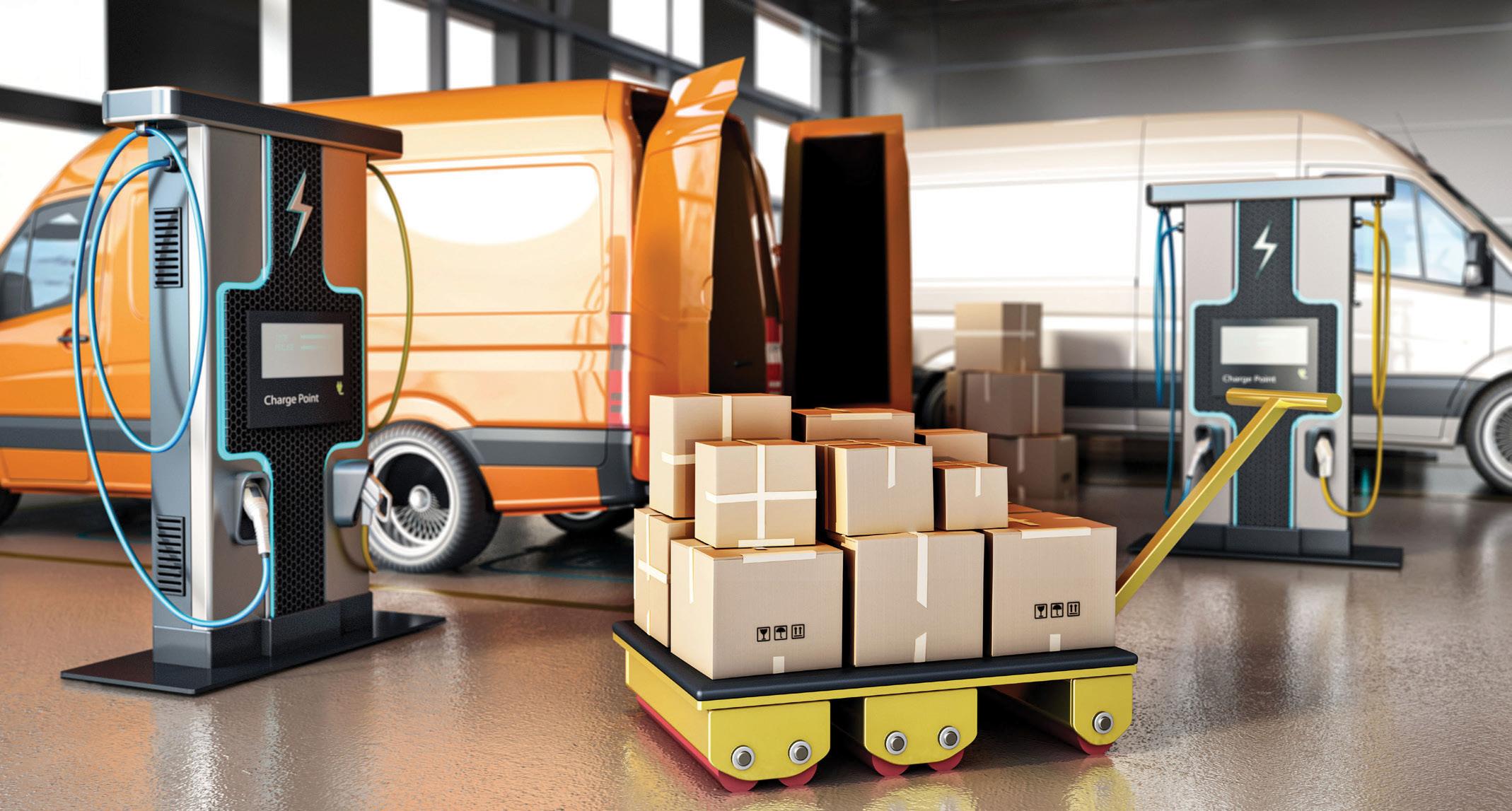
The global climate emergency has prompted organisations and companies to take e ective measures for sustainability. A major force of change, the United Nations is calling for countries to adhere to net-zero greenhouse gas (GHG) emissions by 2050. This has led to governments setting targets for reducing emissions by 2030 and reaching net zero goals by 2050.
In the GCC region, sustainability in the logistics sector will be crucial as logistics-related activities intensify. A substantial portion of these activities stem from developments and progress in the non-oil sector. Non-oil sector productivity in the region have also raised exports considerably. The support of trade agreements and international cooperation will further strengthen import and export activities.
Re-exports are also predicted to heighten, attributable to GCC’s geographical placement on the trans-continental trade route. This makes the region ideal for redistribution of goods and services. Leveraging this advantage, countries in the GCC region are developing their logistics hubs for facilitating the movement of domestic as well as transit goods.
While the GCC region has made significant improvement in infrastructure development, the logistics services market is highly fragmented, resulting in ine ciency and high costs in the transportation and distribution of goods.
As the GCC region embarks on improved economic and international trade relations, it is expected to standardise and align its sustainability goals with trading partners. Specifically, focus will be on emissions reduction across different nodes in the logistics value chain, which are expected to influence environmental performance and support trade and investment growth between 2023 and 2030.


Globally, major contributors of emissions include energy, industrial process, agriculture and waste. About 75 to 80 per cent of total emissions arise from electricity, transportation, manufacturing and industrial processes. Under the 2015 Paris Agreement, the annual global temperature increment must be limited to under 1.5°C. To achieve this, global GHG emissions need to meet net-zero targets by 2050.
National sustainability goals: To curb these emissions, sustainability initiatives such as the






THE ANNUAL GLOBAL TEMPERATURE INCREMENT MUST STAY UNDER 1.5°C. TO ACHIEVE THIS, GLOBAL GHG EMISSIONS NEED TO MEET NET-ZERO TARGETS BY 2050

Saudi Green Initiative, UAE Energy Strategy 2050 and Qatar National Vision 2030 are expected to prioritise development of carbon free industrial and logistics activities through renewable energy resources. The UAE has committed to the netzero target year of 2050, while Saudi Arabia and Kuwait have committed for 2060. As a result, countries in the GCC region are expected to prioritise emission reduction through various green initiatives.
Emissions in freight transportation: Globally, transportation accounts for 23 per cent of the energy-related CO2 emissions. Current estimations reveal this number to reach 40 per cent by 2030 and 60 per cent by 2050 under the business-as-usual scenario. Estimates suggest that transportation accounted for more than 15 per cent of GHG emissions while aviation and shipping accounted for 8 per cent of GHG emissions in the GCC region. As 2030 approaches, countries are likely to push towards more policy initiatives to improve sustainability.
Net zero emission goals are expected to compel supply chain participants to take measures in lowering their GHG emissions. As a result, alternate transportation fuel, low-emission maritime vessels and fuel efficiency are expected to gain more interest in the GCC region. To comply with international emission norms and align with global supply chains, transportation and logistics infrastructure development in the GCC region will focus on modernising industrial parks, economic zones and freight infrastructure to comply with national targets.
Sustainable smart warehouses: Companies in the GCC are modernising their warehouses by automating business processes and adopting robotics. This involves experimenting with the use of autonomous vehicles and drones for efficient and faster deliveries. To make warehouses more efficient and cut down logistics costs, businesses are also digitalising their supply chain management. In addition, the kingdom is exploring renewable sources of power, which is projected to make warehouses more sustainable. Sustainable smart warehouses are expected to shape the future of green logistics in the Middle East as companies struggle to remain competitive.
As part of long-term development goals, GCC
countries have prioritised economic diversification and also made environmental sustainability an integral part of their industrial development plans. Due to an increasing awareness of sustainability across the globe, companies with business models that prioritise sustainability are more likely to gain an international customer base. Green packaging, renewable energy and smart warehouses are gaining more and more interest. Compliance with global ESG requirements is gaining more interest and it will drive logistics firms to offer environment-friendly services. Following sustainable practices will place companies at a competitive advantage which is expected improve their brand image.
Aside from appealing to customers, the companies must also comply with environmental regulations to help them reach national net-zero targets. As a result, logistics service providers are expected to accelerate investments for sustainable supply chain practices. Though it comes at a higher price, its long-term benefits and returns assure a step towards success in the future.
Rapid advances in digitalisation is leading to an increased demand for innovative supply chain solutions in the region. There is no unique pathway to make the transition towards sustainability, innovation in logistics services will play a major role.
Logistics for circular economy: The shift from linear to closed loop supply chain practices will increase focus on sustainable supply chain solutions. Recycling of waste such as packaging materials, pallets and containers are likely to be given priority in controlling emissions. Thirdparty services boosting the circular economy will drive efficiency and reduce carbon footprint across logistics processes. Clean disposal of materials and extraction of valuable materials from wastage can potentially further reduce carbon footprint. With high wastage rates, the region will observe growth in resource recovery. This is projected to generate the need for efficient reverse logistics solutions.
Fuel efficient technologies: A significant part of transport emissions are due to freight movement through road transportation. Therefore, technologies focusing on fuel efficiencies are likely to be given priority by both public and private sectors. Increased adoption of electric fleets and alternative fuels in the urban settings will play a key role in meeting the targets
ABOUT 75– 80 PER CENT OF TOTAL EMISSIONS ARISE FROM ELECTRICITY, TRANSPORTATION, MANUFACTURING AND INDUSTRIAL PROCESSES
Emissions from transportation accounted for 15% of GHG emissions in the GCC region
associated with net-zero logistics. Improvement in fuel efficiency of commercial vehicles, maritime vessels and air cargo carriers will play a key role in decarbonising the freight transportation sector. Investments in research and development related to advancement of fuel efficiency, capture technologies and direct air carbon capture are likely to gain more attention. This arises from the logistics sector lagging behind in terms of aligning with net-zero goals.
Sustainability and smart warehouses: Holistic perspectives of energy and resource consumption will be taken into account for calculating emissions from different types of warehouses. These include electricity, transport fuels, heating oil and packaging materials required for warehouse operations. Modern warehouses are becoming automated with more use of stationary and mobile robotics. More and more companies are likely to adopt the use of autonomous vehicles and drones for efficient and faster picking, sorting and packaging activities.
Last-mile delivery models: Logistics service providers are expected to focus on innovations in the last-mile solutions to meet the growing demand for e-commerce logistics. Address accuracy, route optimisation, inefficient packaging and returns management are some of the critical factors that determine the success rate of last mile deliveries.
Intelligent delivery management platforms, fuelefficient and environmental-friendly vehicles, and delivery automation, are some of the areas expected to limit growth in emissions from lastmile delivery services.
Sustainability and supply chain resiliency are expected to reshape the global business environment. This can serve as an opportunity for GCC members as they can gain customer trust and improve trade opportunities by incorporating green practices in their supply chain.
As trade is projected to increase in the region, service providers need to focus and prioritise concrete actions to overcome the current sustainability challenges. To ensure supply remains consistent, service providers in the GCC need to work towards redesigning logistics solutions and assess longer-term implications by quantifying the effect on corporate ESG goals in short and medium terms.
In addition, service providers can use sustainable supply chain solutions as a tool to build capabilities and improve competitiveness by aligning their service offerings to meet international standards and customer expectations. Through these initiatives, the GCC would establish good trade relations with developed countries and lead the pathway to sustainability for developing countries.








Last-mile deliveries, a vital component of the emerging e-commerce market in the Middle East, face several challenges in meeting consumer demands while ensuring e cient logistics operations.

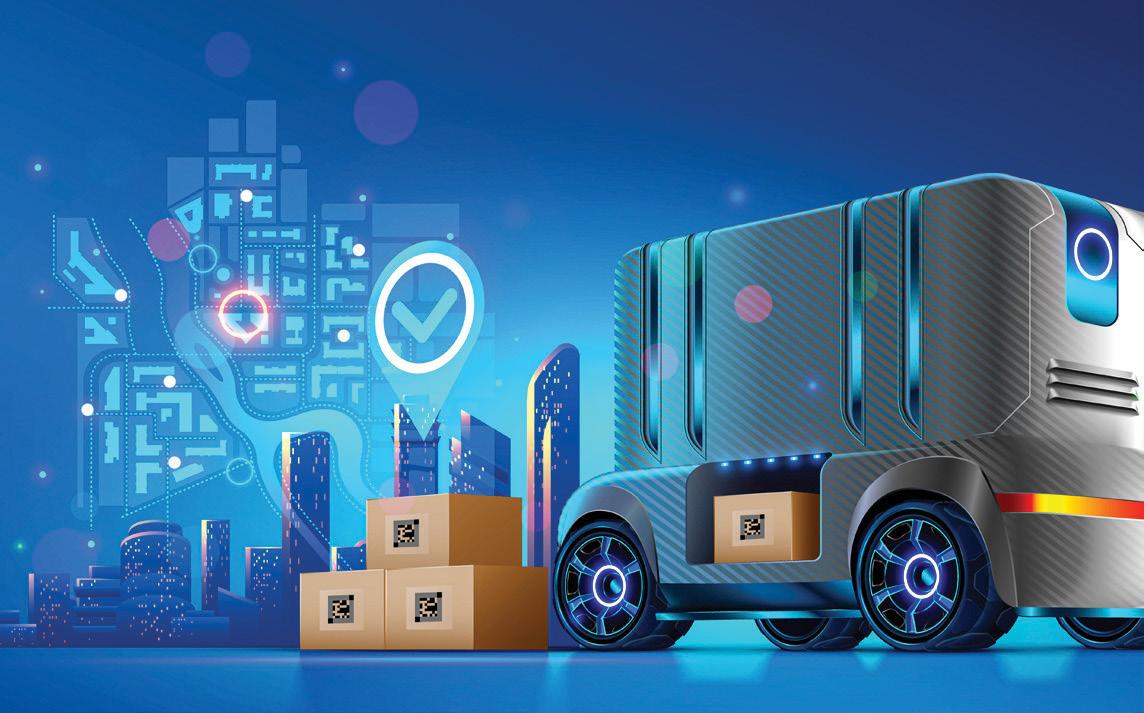
Here are some of the critical last-mile challenges that modern technologies are helping resolve.
Congestion in urban areas poses a significant hurdle for last-mile delivery operations. According to a report by the World Economic Forum, tra c congestion in some cities can cause delivery times to increase by up to 30 per cent. This results in delayed deliveries, increased costs, and dissatisfied customers. Companies are turning to sustainable alternatives such as electric vehicles (EVs) and bicycles to tackle this issue. Electric vehicles offer multiple advantages, including reduced air pollution and lower operational costs. Additionally, cargo and electric bicycles provide agile and e cient solutions for navigating congested areas.
Environmental sustainability has become a pressing concern for the last-mile delivery market. According to the International Transport Forum, urban freight transport is responsible for 30 per cent of total CO2 emissions from road transport in cities. This highlights the urgent need for greener practices in last-mile delivery operations. The adoption of EVs plays a pivotal role in mitigating environmental impact. Electric vans’ total
cost of ownership can be up to 40 per cent lower than diesel vans. Companies such as Amazon have pledged to deploy 100,000 electric delivery vehicles by 2030. Digitising last-mile operations not only helps businesses reduce environmental impact, it also helps businesses significantly reduce operational costs by ensuring lesser miles travelled, greater delivery productivity and significantly lowering dependencies on paper.
Ine cient routing, multiple delivery attempts and missed time windows increase expenses and customer dissatisfaction. Companies are leveraging artificial intelligence (AI) and machine learning to enhance operational e ciency. According to a MIT study, implementing route optimisation algorithms in last-mile delivery reduced travel distances by 10-40 per cent. By analysing realtime data on tra c patterns, delivery locations, and other factors, these algorithms generate optimised routes for delivery drivers, improving overall e ciency and reducing operational costs.
Collaboration among stakeholders is essential to address the scale and complexity of the lastmile delivery market. Shared networks and resources can significantly enhance e ciency and sustainability. Shared delivery hubs, located in urban areas, allow multiple retailers to consolidate their packages, reducing the number of individual delivery trips. Additionally, partnerships with municipalities and local authorities are crucial in enabling smoother last-mile operations. Dedicated delivery lanes and parking spaces can expedite deliveries, reducing congestion and improving overall e ciency.
The last-mile delivery market faces challenges, ranging from growing carbon emissions to increasing delivery costs. However, using so tware-as-a-service-based last-mile delivery platforms, the industry is making strides towards sustainability and e-mobility. Companies are transforming the last-mile delivery landscape by adopting electric vehicles, leveraging advanced route optimisation technologies, and fostering stakeholder collaboration. These transformative solutions address environmental concerns, enhance operational e ciency, reduce costs, and improve customer satisfaction. As the industry continues to evolve, the path to sustainability holds great promise for a greener and more e cient last-mile delivery ecosystem.
HOW THE REGION’S LAST-MILE DELIVERIES CAN BE SUSTAINABLE, COST-EFFICIENT AND CUSTOMER CENTRICPic: Getty Images

Today, we are more conscious than ever of the vital importance and the vulnerabilities of global supply chains and their economic, social and environmental impacts. As processes, practices and financial models transform, and the world addresses the next major global challenge – climate change – there is an opportunity to embed sustainability into every link of the chain. Enterprises are re-thinking their supply chains to balance the needs of society, planet and profit. There’s a role for digital technologies which can help reduce losses, trace product origins, and control quality.
We are fortunate to be sitting at the maritime and aviation crossroads of the world and a global logistics hub. The UAE is among the top 12 countries in the World Bank’s Logistics Performance Index 2023, which measures the logistics capabilities of countries including ‘track and trace’ technologies as one of the indicators that make a location attractive to source goods from.
This is important. According to the OECD (the Organisation for Economic Co-operation and Development) around 90 per cent of traded goods globally are carried by ocean shipping (which also represents 2.9 per cent of total greenhouse emissions). As demand for global freight increases, maritime trade volumes are set
to triple by 2050, highlighting the need for more e cient and sustainable maritime transport – and all other modes, of course.
For supply chains, digitalisation can accelerate response times, reduce carbon emissions and change the economics of production. Enterprises are now digitally controlling and managing sustainability metrics such as energy, fuel, carbon emissions and water usage.
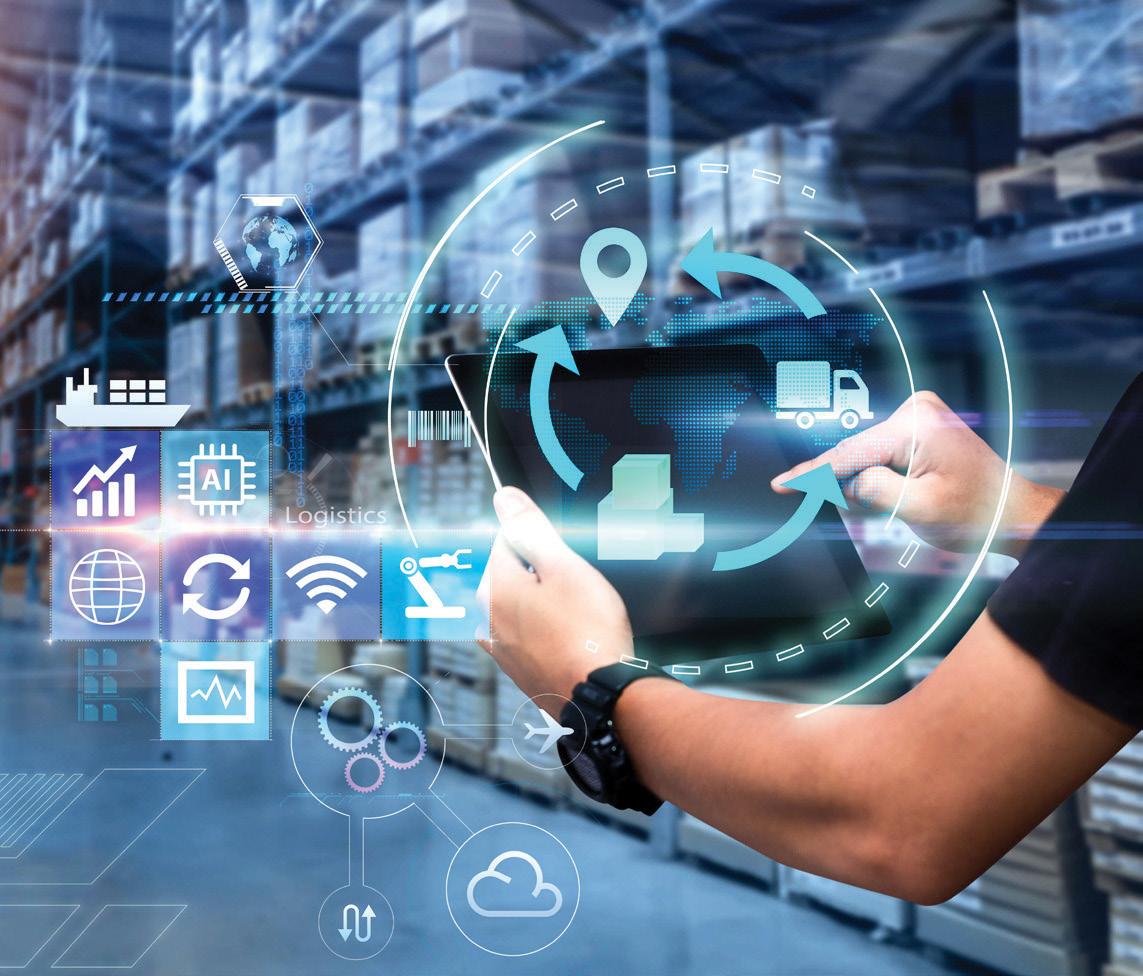
Gartner’s 2023 top supply chain technology trends include actionable artificial intelligence (AI), smart operations, cyber resilient supply chains and supply chain integration services. Speed, agility and e ciency are all central to supply chain optimisation, and automation plays a crucial role not only in individual companies and modalities but across entire eco-systems.
Building resilience and sustainability into supply chains through digitalisation and real-time data insights is a priority for transformation strategies and essential to the survival of many companies.
I would argue that hyperautomation (combining robotic process automation with other technologies such as AI, machine learning, chatbots, IoT and blockchain) is needed to accelerate high-volume business processes along the supply chain and deliver the real-time intelligence and orchestrate the entire supply chain ecosystem for long-term sustainability. Hyperautomation can help address challenges and mitigate risks and ine ciencies in the supply chain.

Hyperautomation refers not only to the tasks and processes that can be automated but also to the level of automation – automation is vital to empowering both employees and supply-chain partners with data insights.
Artificial intelligence-enabled supply chain planning and execution systems can increase the visibility of supply chain systems, enabling businesses to act and make decisions using realtime information.
However, it is important to remember that processes are not always simple, routine, repetitive and stable.




Hyperautomation is already being adopted in daily supply chain operations around the world, and RPA is being used for all kinds of functions. Complex supply chain functions can now be processed more quickly and more easily across ERP, transportation and warehouse management systems. It can help companies save hundreds of sta hours per day on repetitive tasks, and by helping eliminate paperwork, it even brings environmental benefits.

SMART TECHNOLOGIES CAN UNLOCK THE POTENTIAL DATA DIVIDEND IN EVERY LINK IN THE SUPPLY CHAINSAHEM AZZAM, vice president Middle East, Africa and Turkey, Orange Business
IT’S TIME TO REIMAGINE



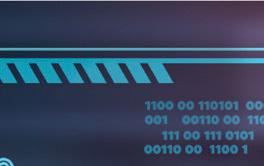



Digitally transforming supply chains can help address a lack of interconnectivity and data inefficiencies, arising where data is misaligned between customer and supplier. Policy and people inefficiencies create blockages and siloes in an organisation and companies o ten have separate systems to manage transportation, warehousing and third-party logistics.
Without effective collaboration, inefficiencies can arise in the handovers between the transport modalities – sea, rail, road and pipeline – and delays may result in penalties. It is not just in global, or regional, logistics that real-time data has become increasingly essential. Without real-time visibility on the whole supply chain, accurate demand forecasting is challenging.
Artificial intelligence and machine learning are continuous learning systems that take data collected from within the supply chain and update automated systems dynamically, with an exponential effect. This reduces the time required to build and deploy new process models so that supply chain process management gets faster and more e cient on an ongoing basis. These marginal gains are precious – seconds saved on individual processes all add up into significant improvement.
Supply chain automation provides transparency, satisfying the growing demand for more ethically- and environmentally friendly products. Consumers are also embracing the circular economy, which designs-out waste and enables recycling.

Smart logistics provide enterprises with real-time data, AI-enabled analytics and digital work instructions for decision making and drive sustainable growth, increasing e ciencies and reducing waste.
Technological enablers will now play important roles in strengthening supply chains through enhanced planning and execution. I expect to see hyperautomation become central to an end-to-end supply chain strategy and deliver the data dividend.

Automation is vital to warehousing and distribution centre operations to meet the growth in volume and speed in the on-demand economy and the need for greater inventory accuracy while filling labour-gaps and supporting the existing workforce.
It’s no surprise that in the last two years, nine in 10 warehouse operators have reported average shipping volume increases of 23 per cent in businessto-business fulfilment, and similar average increases for direct-to-consumer fulfilment.
Shi ts in e-commerce means warehouses and distribution centres are expected to deliver orders faster than ever. In the Warehousing Vision Study Zebra conducted, 82 per cent of retail decision-makers agree they’ve increased their focus on supply-chain operations. All supply chain stakeholders are finding fulfillment and shipping complex.
ROBOTICS AUTOMATION CAN DIGITALISE WORKFLOWS AND IMPROVE HUMAN PRODUCTIVITYPic: Getty Images
OF WAREHOUSING IS TRANSFORMING THE WORLD HOW TECHNOLOGY
Every company and supply chain leader needs to know how long it should take – and does take –to move goods from the first mile to the last mile. No one should be left wondering as to where the goods are, and yet this continues to happen.
Today, supply chain leaders need to move beyond capturing data from sensors to joining the dots between devices, front-line workers, assets, inventory, and workflows. This information needs to be incorporated in a useable way into operational decision-making and actions on the warehouse floor and logistics planning. It’s about incremental changes, reducing seconds and minutes from tasks resulting in time savings of hours and days and optimising specific workflows.
The digitalisation of data is not the finish line; it is just the first step to creating a more resilient, future-ready operation. Digitalisation of workflows is next. Once established, it becomes easier to automate as part of a multi-year, incremental improvement strategy. Automating parts of the business does not need to take years – autonomous mobile robots (AMRs) can be rolled out in hours, and multiple workflows can be automated in days.
I believe that AMRs are one of the fastest ways to drive business process improvements and support workers without complex, resourceintensive modernisation projects. Automated workflows can be constantly refined and scaled over time using the same solution. So, when a company needs additional capacity, it can put more AMRs in the field to support or help onboard new workers.
The instant AMRs start to move materials, bins, carts or pallets; they are returning money straight back into the operation. AMRs are versatile, but they need to be configured to support a specific application and can integrate seamlessly with human-involved workflows to deliver the benefits. Workflows become consistent while processes become steady, and people become more available to keep manufacturing, processing or distribution operations running smoothly, even in surge periods.
Reliable, dynamic AMRs do jobs that can be physically and mentally exhausting for people. With a cloud-based robotics automation platform, people and robots can collaborate and maintain full control over the operation and keep orders moving into the market. AMRs support skilled workers, give them back time to receive, process, produce, pick, pack and ship more orders.
Walking is not a good use of time in manufacturing, distribution, third-party logistics or warehousing operations. So, at the very least, companies should be using a flexible automation solution such as AMRs for every task that would traditionally require people to walk, push, pull or carry items from one aisle, station or line to the next.
The same study highlights the benefits that associates have seen from working with AMRs; including reduced walking/travel time (83 per cent) and reduced errors (73 per cent).
Depending on the use case, we’ve seen robotics automation solutions help warehouse operators increase productivity by 2.5x, double throughput and reclaim 15 per cent of their space. Almost one quarter (23 per cent) of European warehouse operators have already deployed some form of AMR, which is in line with the global trend (27 per cent). Within five years, these numbers are expected to grow to 88 per cent in Europe and 90 per cent globally.
Robotics technology is not at a point where machines can replace people completely. Labour intensive operations, like assembly and warehousing, demonstrate the best model is combining machines with human talent to improve productivity, efficiency and quality. Machines such as AMRs allow people to focus on what they do best: use their dexterity, solve problems and identify opportunities for innovation.
As automation moves into the mainstream, customers are not asking, “How can I automate this task?” but, “How do I automate this process?” The focus then is on software solutions that orchestrate and coordinate a range of digital devices and activities to work together to smooth and speed the process.
Without the help of robots, people aren’t going to be able to keep up with global commerce demands. With robotics automation, supply chain companies will do more than keep up –they’ll strengthen agility and performance.
“AUTONOMOUS MOBILE ROBOTS (AMRS) CAN BE ROLLED OUT IN HOURS, AND MULTIPLE WORKFLOWS CAN BE AUTOMATED IN DAYS”
WE’VE SEEN ROBOTICS AUTOMATION SOLUTIONS HELP WAREHOUSE OPERATORS INCREASE PRODUCTIVITY BY 2.5X

The new Land Rover Defender 130 offers comfort, space and a commanding presence both on and off the road p.66
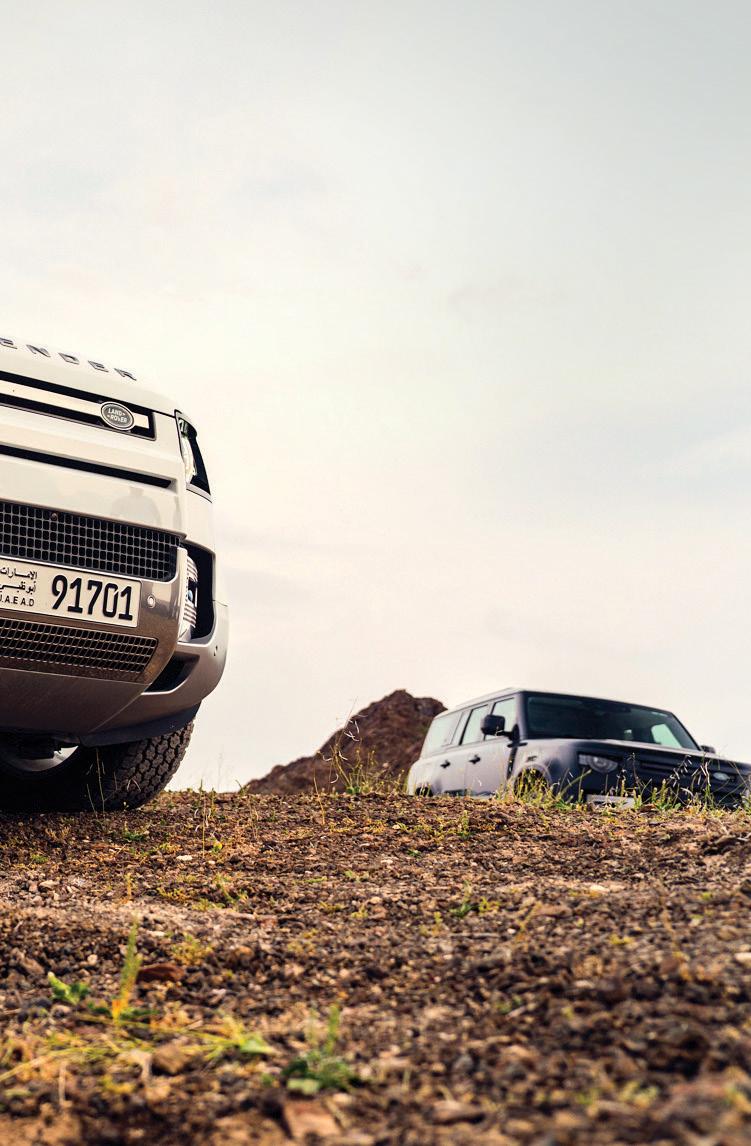
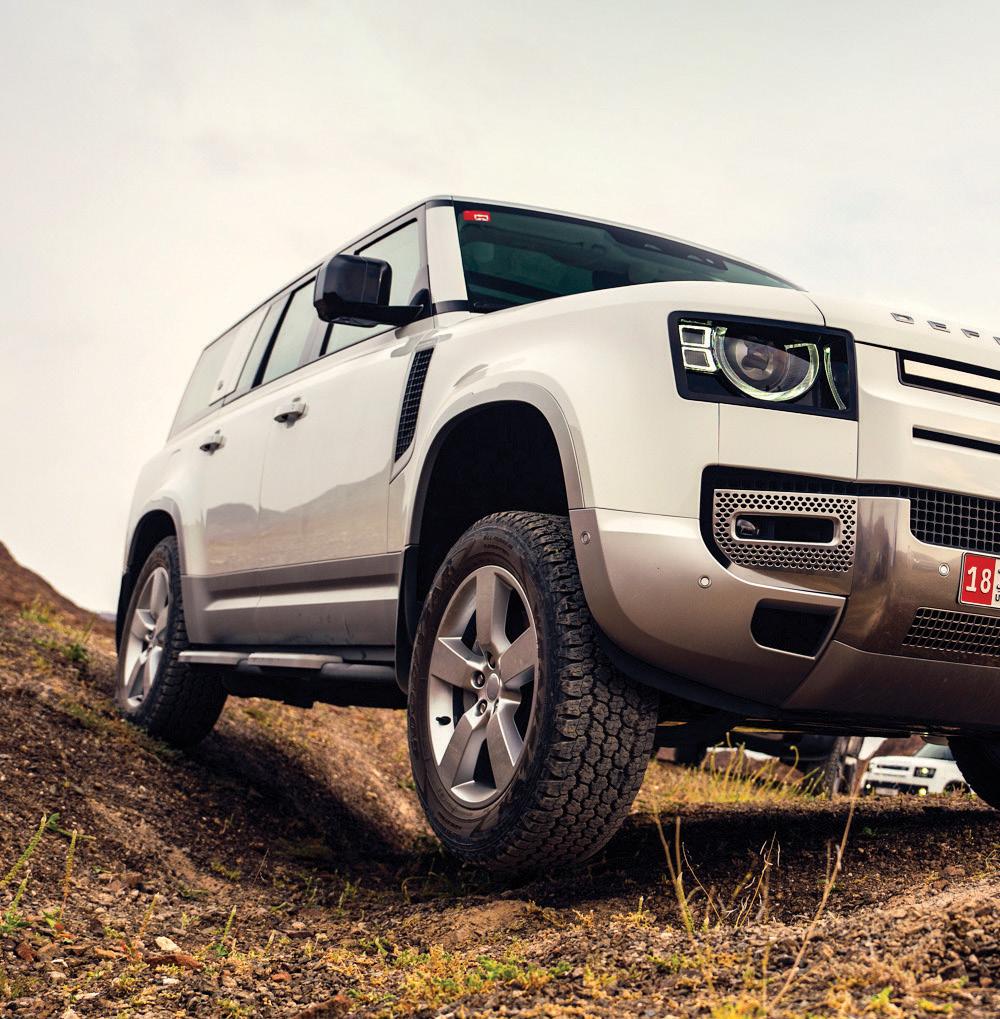
While long-distance trips make up about one-third of all aviation emissions, there’s a way to lower your impact, for example, by forgoing the comfort of premium seats on a transatlantic journey. Business and fi rst class cabins use more space per passenger, giving them a higher share of a fl ight’s emissions.
Read more about it on p.60
O ered in a choice of steel or 18K pink gold, the latestTonda PF Sport Chronograph has a 42mm diameter. The new timepiece is distinguished by a number of subtle details seen in the bezel, dial and strap. The dial is decorated with a hand-guilloché ‘triangular nail’ pattern – a style shared with the Tonda GT collection.




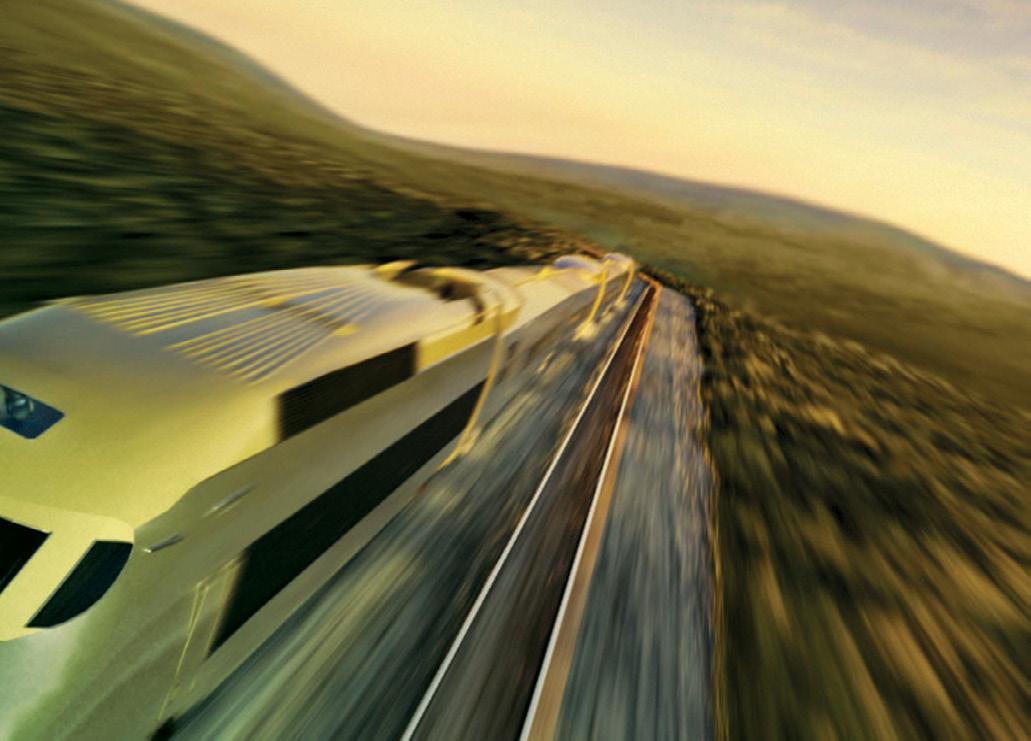




THIS SUMMER
The pandemic is over, beaches beckon and airline bookings are brimming with leisure travellers powering the industry’s rebound from the Covid-19 abyss.
But with the return to flying comes a reminder of its considerable contribution to global warming. Aviation accounts for some 2.1 per cent of CO2 emissions, a share that is set to rise as other industries decarbonise more quickly. Global jet-fuel demand is projected to pass 2019 levels next year, according to BloombergNEF.
For now, there’s no real way to get around the environmental impact. In an ideal world, commercial aircraft would be powered by fossil-free alternatives to the kerosene used in today’s jet engines — but battery power, e-fuels and hydrogen propulsion will take decades, if ever, to reach scale.
Carbon offsets, promoted by airlines as a way for travellers to cleanse climate guilt, have been shown to be largely ineffective. So-called sustainable aviation fuels, touted as a first step to clean up the industry, are
expensive and in minimal supply. Their effectiveness varies with choice of feedstock and other factors.
Which is why climate-change campaigners have a more straightforward approach: people just need to fly less.
“The best option would be not to travel at all,” said Matteo Mirolo, aviation manager at Brussels-based sustainability advocacy group Transport & Environment. “Second best is, of course, take another mode of transportation, which enables you to travel with a much more limited climate impact.”
Mirolo’s group lobbies for government policies that will make less-polluting transport options more competitive. Europe is ahead of other regions in some ways – it is expanding rail networks, and big businesses have largely kept to pledges to fly less.
Governments have taken limited steps – France has banned a handful of domestic flights to promote trains, and the Dutch
state wants to limit flights from its Amsterdam hub, for example. But for now, it’s up to leisure travelers to find alternatives.
Here are some ideas for travellers to lower their carbon footprint this summer.
In Europe, a growing high-speed rail network presents a real alternative to flying between many major cities, offering competitive travel times with much lower carbon-emissions impact. Spain, France, Germany and Austria are among the countries investing to expand services. Links across borders are still a snag, as government-owned systems are optimised for domestic travel.
Resourceful travellers can tap their inner Marco Polo to find a host of multicountry options. The Rome2Rio site has a useful tool.
For a simple plan, there’s the pioneer of international high-speed rail, Eurostar, which connected London with Paris,
AN EXCEPTION IS NORWAY, AN EARLY ADOPTER OF BATTERY-POWERED CARS. CHARGING STATIONS ARE EVERYWHERE, GIVING E-TRAVELERS PEACE OF MIND
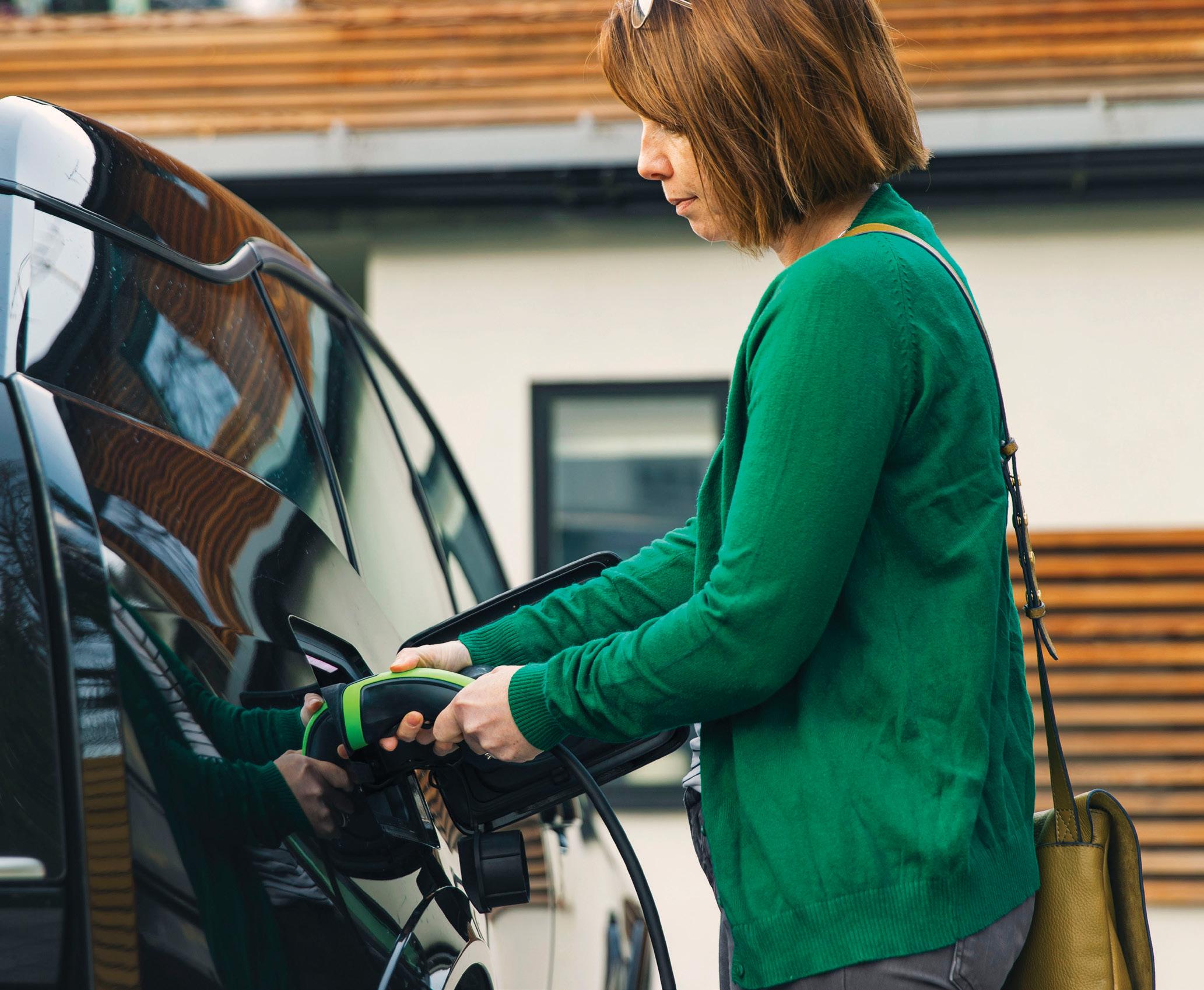
Brussels and Lille in 1994, adding Amsterdam in 2020.
Paris makes a good starting point for a longer trip as well. There’s an extensive high-speed French network, with trains to Bordeaux, Marseille and Strasbourg, and access to Zurich, Milan, Barcelona, and Frankfurt. A fast link with Berlin is in the works.
The potential for rail travel is limited by the networks themselves – another reason planes and cars won’t be replaced soon. Train travel is more complicated, requiring flexibility and some creativity in vacation planning.
23% PLANES
77% TRAINS
BETWEEN LONDON AND PARIS, EUROSTAR HAS STEADILY DISPLACED AIRLINES
The hassles tend to multiply over longer distances and across borders. One approach is to combine faster trains with more-scenic routes. A one-week itinerary could take in France, Switzerland and Italy, for example, or traverse Hungary, Slovakia, Vienna and Lake Bled in Slovenia.
Rail operators have also added a slew of overnight trains, which can save on hotels and minimise the inconvenience of longer-distance journeys. Austria’s Nightjet has recently overhauled rolling stock that includes sleeper cabins with showers. For example, a night train departing Munich at 8:09 p.m. arrives in La Spezia, gateway to Italy’s Cinque Terre, at 11:10am the following day. The trip’s carbon impact is about one-fourth of the more typical approach: flying to Genoa, then renting a car, according to calculations from the Ecopassenger.org website.
There are luxurious options like the Venice-Simplon Orient Express, with destinations as far as Prague, Budapest and Istanbul, or the Golden Eagle Danube Express, a hotel train whose itineraries range from the castles of Transylvania to Budapest. In Switzerland, the Glacier Express is among the lines traversing the panoramic bridges, tunnels and gorges of the Alps and whisks travellers to upscale resorts like St. Moritz, so you can leave the private jet at home.
A simpler approach is to stay within a given country.
Spain now boasts the most extensive highspeed rail network of any country except China. In the fourth quarter, the BarcelonaMadrid link carried 35 per cent more riders than a year earlier, while the number from Madrid to Valencia doubled. Tra c on
both routes was 40 per cent or more above pre-pandemic levels, according to government figures.
Indeed, where competitive alternatives to flying exist, travellers are willing to use them. Between London and Paris, Eurostar has steadily displaced airlines, with 77 per cent of 2022 passengers choosing trains over planes, according to Eurotunnel operator Getlink. (The figures exclude those travelling in cars, which can cross the English Channel by ferry or on railcars through the Channel Tunnel.)
Last summer, 57 per cent of passengers between London and Edinburgh chose rail over air travel, up from 35 per cent prepandemic, according to Lumo, which began serving the 4 1/2-hour route in 2021.
There’s also the classic road trip, reimagined for a new generation of electric automobiles. Range anxiety is still a concern, with charging networks sparse in many countries. An exception is Norway, an early adopter of battery-powered cars.
While driving an ID.4 generates no CO2, a conventionally powered Ford Kuga SUV with a 1.5 -litre engine would produce about 255 kilos of carbon emissions on the same route
Charging stations are everywhere, giving e-travellers peace of mind.
For a family trip, a good starting point is Oslo. Pick up an all-electric Volkswagen ID.4 from a car-rental outlet and embark on a 1,050-mile loop that crosses the Trollstigen, a zig-zagging mountain pass with great views, and the country’s scenic southern coast.
While driving an ID.4 generates no CO2, a conventionally powered Ford Kuga SUV with a 1.5 -litre engine would produce about 255 kilos of carbon emissions on the same route.
Sometimes there’s no other way to get there than flying. While long-distance trips make up about one-third of all aviation emissions, there’s a way to lower your impact, for example, by forgoing the comfort of premium seats on a transatlantic journey. Business and first class cabins use more space per passenger, giving them a higher share of a flight’s emissions.
One person flying an economy round trip between London and New York on a Boeing 787-9 produces about as much carbon dioxide as 70 trees can absorb in a year, based on calculations from advisory firm Encon and an online tool built by German non-profit Atmosfair. Still, that’s less than half of the pollution caused by a first-class trip. Each passenger’s emissions on those flights nearly match the annual carbon dioxide output of an average human in France. Meanwhile, private jets are 10 times more polluting than a commercial flight.
“For a family trip, a good starting point is Oslo. Pick up an all-electric Volkswagen ID.4 from a car-rental outlet and embark on a 1,050-mile loop that crosses the Trollstigen, a zig-zagging mountain pass with great views, and the country’s scenic southern coast”
One person flying an economy round trip between London and New York on a Boeing 787-9 produces about as much carbon dioxide as 70 trees can absorb in a year


 BY DIVSHA BHAT
BY DIVSHA BHAT





Get ready to capture epic moments like a pro with the Hero11 Black. This GoPro gadget automatically sends highlight videos straight to your phone. With its larger image sensor, you will experience higher quality and wider shots. Share your vertical masterpieces on social media in seconds.
The HyperSmooth 5.0 technology is packed with AutoBoost and Horizon Lock, guaranteeing your shots are super smooth. Night Effects allow you to get creative even a ter the sun goes down, while the 10-bit colour breathes life into all your videos. The Hero11 Black comes with all the essentials you need such as a carrying case, battery, mounts and more. Don’t forget to grab a microSD card to complete the package. Price: Dhs1,479


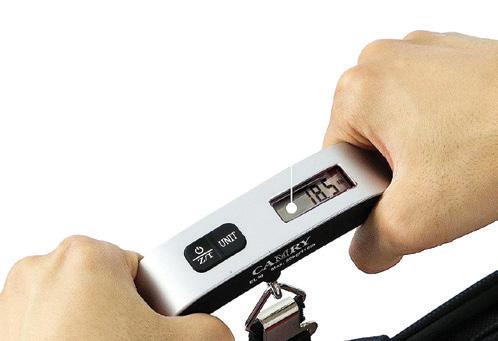
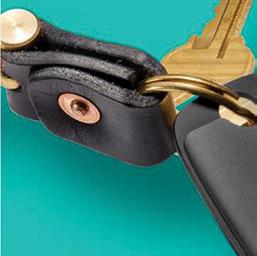
The Camry luggage scale is a ni ty little gadget that comes in a bunch of cool colours. It is perfect for those who love to travel without worrying about overweight baggage fees. This portable scale is super easy to use, with a backlit display that shows your luggage weight in big, bold numbers. It can handle up to 50 kilograms, so you can weigh even your heaviest suitcases. But wait, there’s more. This handy device also tells you the temperature, keeping you in the know wherever you go. It’s built tough with a sturdy clasp and a strong nylon strap, so it’ll last you for many adventures. Price: Dhs23





Say goodbye to losing things and hello to stress-free tracking. Tile Pro is an ultimate tracking companion you would want. With its innovative features, you will never lose your belongings. The device’s sleek design fits perfectly on your key ring, bags or luggage. You just need to download the app and when your Tile is nearby, ring it with a simple tap on your phone. Meanwhile, if you are far away, the app will show you where your Tile was spotted on a handy map. It is compatible with both iOS and Android devices and seamlessly works with Amazon Alexa, Google Assistant and Siri. With its water-resistant build, longlasting battery and impressive Bluetooth range, Tile has got your back. Price: Dhs104









Introducing the Kindle Paperwhite 16GB. It is a cool reading companion that’s packed with great features. First o , it has a 6.8–inch display with thinner borders, so you can immerse yourself in an ebook. The adjustable warm light is a game-changer, allowing you to customise the screen shade for maximum reading comfort.


With its impressive battery life, you can forget about constantly charging it – it lasts up to 10 weeks. Plus, it’s waterproof, so you can enjoy your favourite books anywhere, from the beach to the bathtub. And don’t forget, you have access to over one million ebooks, including a great selection of Arabic titles. If you opt for the Signature Edition, you will get wireless charging and 32GB storage. Price: Dhs629 (for the 16GB model)







The Anker 737 Power Bank (GaNPrime PowerCore 24K) is a total powerhouse when it comes to portable charging. It’s got all the features such as Power Delivery 3.1 and bi-directional technology, which means it powers up lightning-fast, giving you a whopping 140W of charge to devices.

With a massive 24,000mAh capacity and a handy digital display, you’ll always know how much power you’ve got le t. The manufacturers even throw in a USB-C to USB-C cable as well as a travel pouch to sweeten the deal. Price: Dhs423




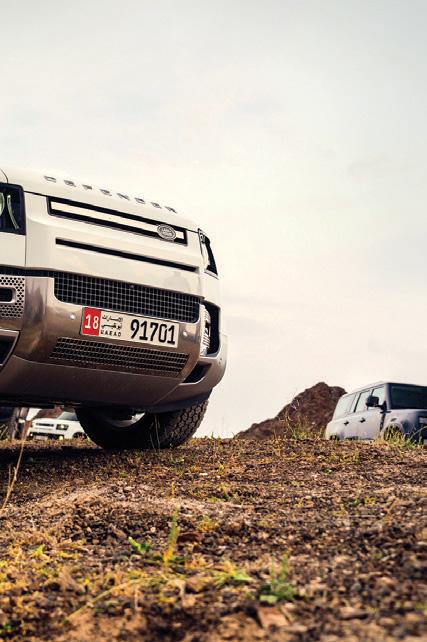
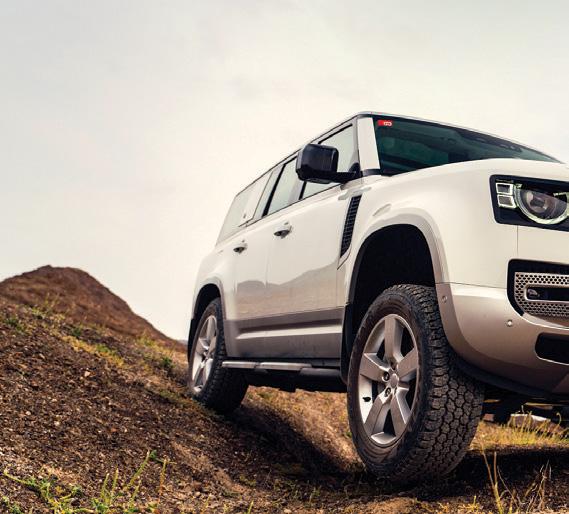






When Land Rover relaunched the Defender in 2020, it was expected to polarise loyalists into two segments: one that loved it for its performance and the other that didn’t because of its retro design. However, the naysayers were proved wrong: the Land Rover Defender was deemed a ‘sales’ success, with buyers worldwide queuing up to purchase the dependable o -roader. The Defender was initially launched in two sizes, the 90 (two-door version) and the 110 (four door version), but this year, the vehicle is making waves again — as an eight-seater in a new variant, the Defender 130.
The 130 is all about space. To create more of it, Land Rover elongated the 110 by 33.782cm from the rear, placing a third row bench seat in this extended cargo area. While the third bench seat is uncomfortable or useless in most vehicles, it is very functional in the Defender 130. You can haul your entire crew along in one car. The second row bench seat accommodates three people, with the rear bench o ering space for three, but in reality, it fits two people comfortably. Foot room is at a premium, but compensating that is enough shoulder room and headroom for the two passengers seated in the rear. Land Rover also throws in a sunroof, USB-C ports and seat heaters, making the third row bench seat usable. However, there is a trade-o for this extra space. The 130 derivative seems out of balance, especially when you view it from the side.
The 90 and the 110 are already cult classics because of their iconic retro-modern look, and I think it is a matter of time before you will see the 130 being adopted as the primary vehicle of choice for large families or just transporting people around considering its tech features and o -road capability.
You can get the Defender in two engine choices from JLR’s Ingenium range of engines.
P300: A 296bhp, 2.0 litre four-cylinder petrol engine
P400: A 395bhp, 3.0-litre six-cylinder turbo petrol mild-hybrid engine
We drove the o -roader with the P400 engine. From the moment I hit the pedal,
the car put on an impressive performance: the engine pulls the car along e ortlessly through city and highway driving. The entire drive was comfortable, composed and smooth. The standard air suspension ensures you never feel a thing from the road surface. The steering is wellweighted and provides decent feedback to the driver, given the car’s dimensions. It has excellent on-road manners. The car does 0-100km/h in 6.6 seconds and is mated to an eight-speed ZF gearbox that does a brilliant job of keeping the vehicle in the right gear.
Considering I was driving a Defender, I also took it o -road to test its mettle. I deflated the tires, chose sand mode and took on the dunes. As it is an eight-seater and quite big, it impressed me with its o -roading capabilities. The vehicle took
everything in its stride – from the dunes and ruts to gravel and minor rock crawling to check its articulation.

Interiors are where the Defender surprises everyone. It may look sparse and utilitarian, but its quality is unmistakable. It has been designed to ensure you can go anywhere, get the car dirty and then clean it to make it feel brand new.
The Defender 130 comes with great tech such as brake by wire and two transfer cases for o -roading, safety features, driving aids, sophisticated suspension and multiple driving modes for di erent terrains. But the icing on the cake is Land Rover’s new Pivi-Pro infotainment system that makes all the features of the car easily useable and accessible. It also lets you download overthe-air updates via 4G/5G connectivity, ensuring your vehicle is always up to date. This Defender is built to take on the present and future.
The Land Rover Defender 130 is a worthy car capable of tackling most situations and challenges. The extra space, technology and modern power trains set the standards high.
With prices starting at Dhs317,000, you can spec the Defender with multiple trims and options. Even lease options are available from the o cial dealer in the UAE, which starts at Dhs6,999 per month, making the vehicle accessible to most large families.
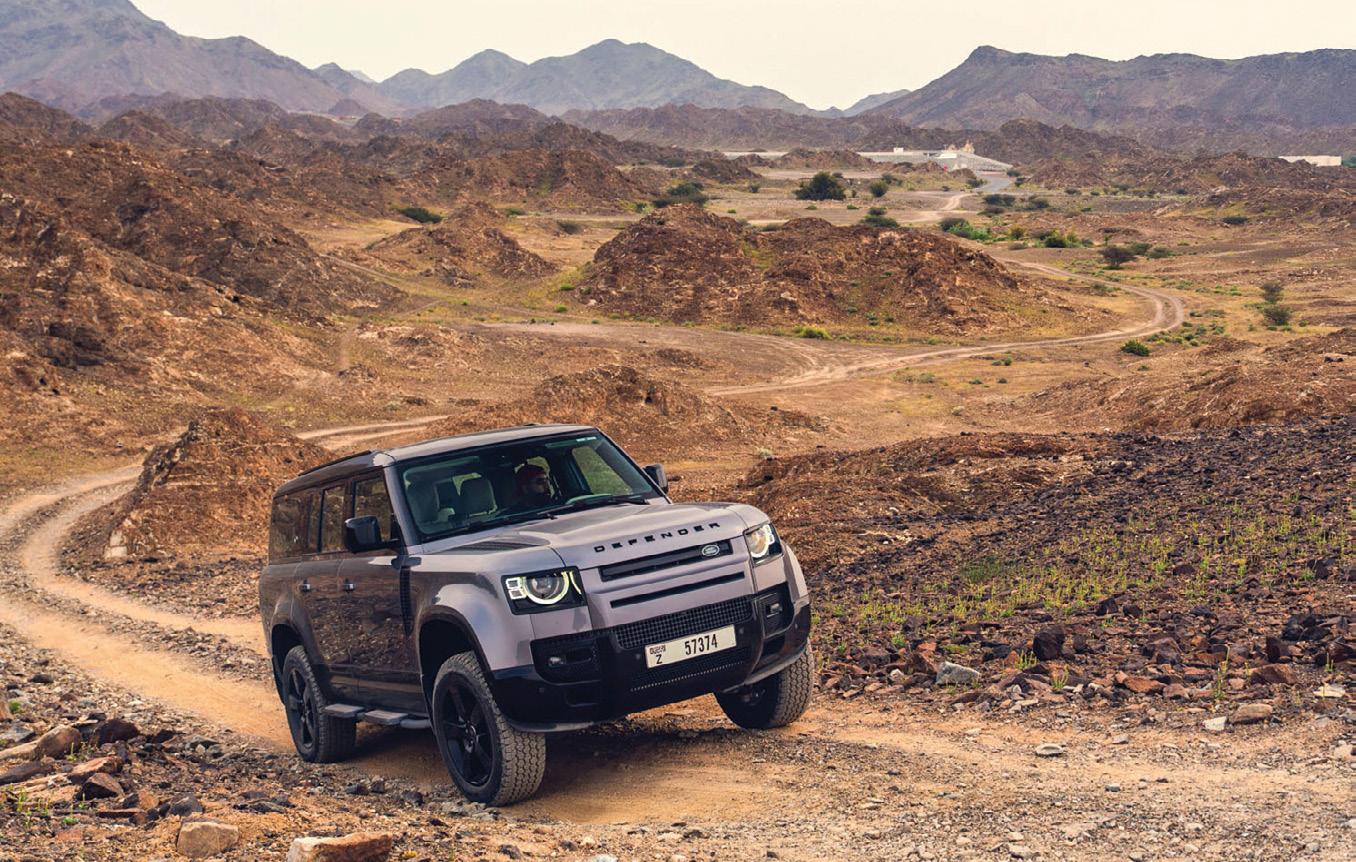

“From the get-go, the vehicle is impressive. The P400 engine pulls the car along e ortlessly through city and highway driving. The entire drive is comfortable, composed and smooth”




“What we are presently witnessing across MENA region is a rapid prototyping of a new, and very sustainable VC ecosystem, backed by enviably solid sovereign wealth funds”
Jane Khedair, executive director of the Institute of Entrepreneurship and Private Capital at London Business SchoolWe showcase the inspiring journeys of a medtech that is focused on finding humane solutions, a fintech that caters to SMEs and employees, and a last-mile manufacturer that is creating affordable and sustainable products using 3D printing p.69
What inspired you to start your company?
Several years ago, a friend of mine learned that he had prostate cancer. A ter his diagnosis, he dropped out of sight, avoiding social gatherings and other outings. When I spoke to him, I learned that he was also su ering from urinary incontinence as a result of his condition. He told me he preferred to stay at home, as he was too conscious to be out in public wearing adult diapers. It was also painful and uncomfortable for him to use specialised catheters.

This made me realise the frustration and helplessness that millions of people
su ering from this issue go through every day. I wanted to help my friend, but there was no solution in the market. I stayed in touch with him; closely understanding his struggles and needs.
Focused on finding a humane solution to his problem, I designed our first product for the marketplace, and this was how ProvenMed was born.

What are some of the challenges you faced when starting o ?
Building a medtech startup in the Middle East is not easy. I faced rejections from many people, who always questioned why big names had not already developed such a solution. I also struggled with the lack of a research and development (R&D) ecosystem for this industry, and had to source everything from multiple partners abroad. This resulted in long lead times and high costs. Additionally, investors were di cult to come by, but I persisted because my friend was extremely happy with the concept, and that was all that mattered to move forward.
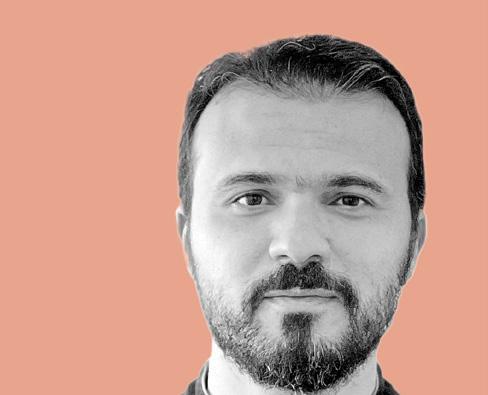
Tell us about your o ering, its USP and business model.
We o er a wearable, non-invasive kit called ActivGo that helps people and
seniors resume their active lifestyle, and regain their confidence and dignity. Unlike adult diapers or specialised catheters used for the condition, ActivGo is designed to give “life” back to those who su er from the problem. This is the first product of its kind to feature an integrated washing system that keeps users clean and prevents urinary tract infections (UTIs), which cost governments and insurance companies billions of dollars annually.
Adult diapers are three times more expensive than our solution and the catheters are 10 time more expensive than our product. Our business model is simple: we sell to medical device distributors, who then sell to nursing homes, hospitals, online stores and pharmacy chains.

Give us an overview of your funding and how you plan to utilise it.
We are currently raising $4m in preSeries A funding, with commitments already onboard. The funds will be used to acquire talent, boost R&D and expand our market reach. We plan to launch two new products: Comfii for women, a hybrid solution for stress incontinence that is cost-e ective, comfortable, and prevents infections; and Predikt, a smart patch connected to deep learning and AI-enabled sensors that monitor bladder health and communicate realtime abnormalities to patients, families, and doctors through an app to prevent kidney failure, dehydration and strokes.
What are some of the expansion plans in your pipeline?
We are currently selling in seven markets and have recently entered six more, including Saudi Arabia. Our goal is to activate these markets and expand further into Europe and North America. Our solutions have improved the lives of tens of thousands of people, and we aim to o er them to millions more.
“WE OFFER A WEARABLE, NON-INVASIVE KIT CALLED ACTIVGO THAT HELPS PEOPLE AND SENIORS WITH URINARY INCONTINENCE RESUME THEIR ACTIVE LIFESTYLE, AND REGAIN THEIR CONFIDENCE AND DIGNITY”
How do you see the growth of fintech in the Middle East region?
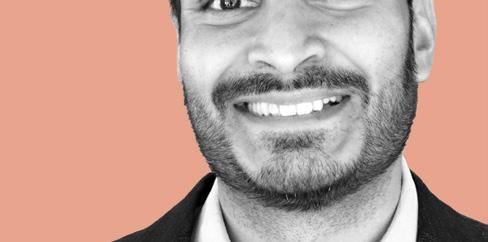
The Middle East region has witnessed a significant increase in digital adoption across various sectors, including finance. The region has witnessed a surge in e-commerce activities, with a growing preference for digital payments over cash.
Fintech companies capitalise on this trend by o ering secure and convenient payment solutions, including mobile wallets, digital payment platforms and crossborder remittances.
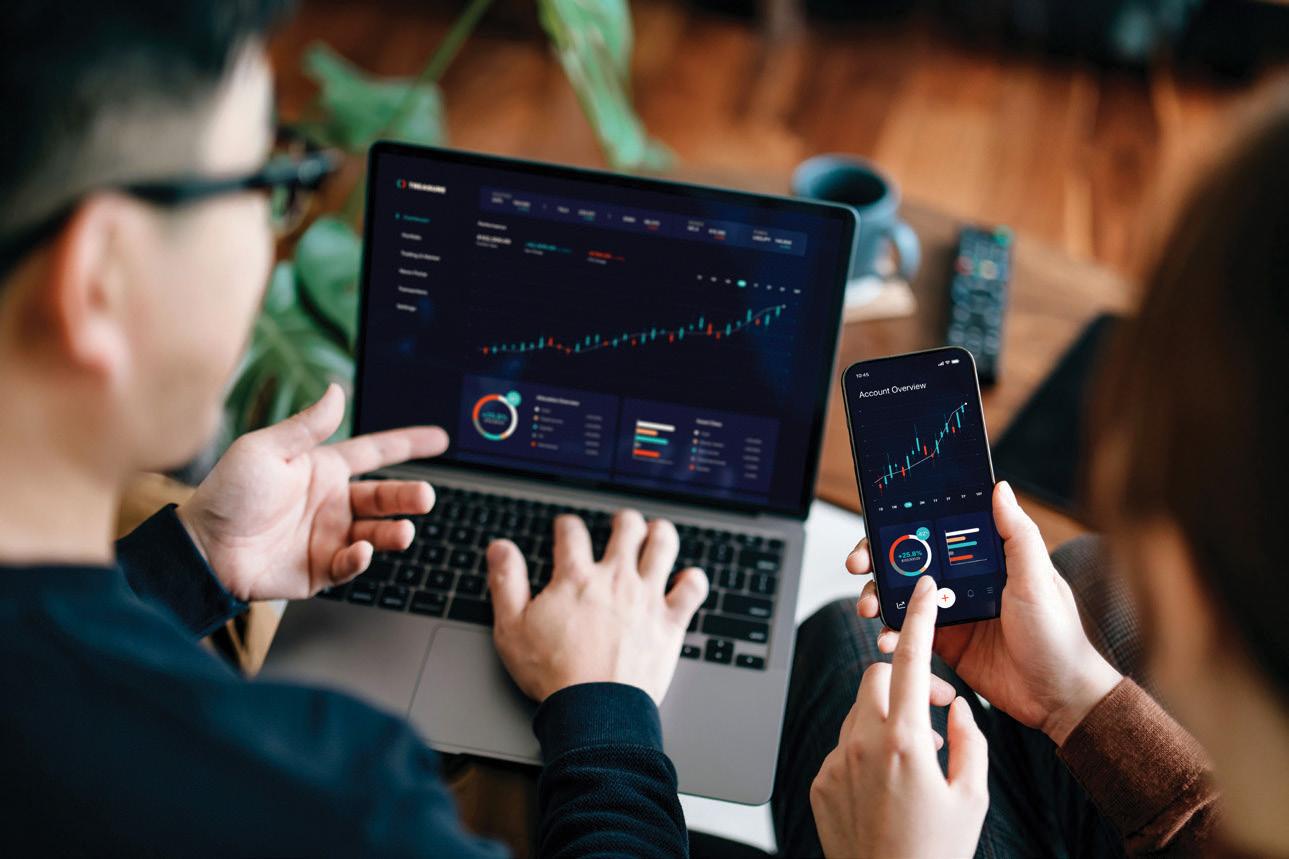
Several cities in the Middle East, such as Dubai, Abu Dhabi and Riyadh, have emerged as fintech hubs, attracting startups, investors and incubators. These hubs provide access to capital, mentorship, networking opportunities, and a supportive ecosystem, fostering the growth of fintech ventures in the region.
What inspired you to start this business?
Financial inclusion has always been a core driver for us. We believe lack of access to
credit for SMEs and individuals can really impact countries negatively, including Pakistan, which is our base.
Starting with just employees and expanding towards businesses, we expanded our offering creating an embedded finance platform to empower businesses and employees both with greater financial control and flexibility, allowing them to meet their immediate financial needs without resorting to costly alternatives.
What are some of the challenges you faced when starting o ?


When starting o , we encountered several challenges that are common to many startups. One of the initial hurdles was creating awareness about the concepts of our o erings and its benefits among both employees and employers. As a new player in the industry,

establishing trust and credibility was crucial. Convincing employers to partner with us and gaining the trust of employees to entrust us with their financial information and transactions required persistent e orts.
We had to thoroughly understand the legal requirements and work closely with advisors to ensure our operations aligned with the regulatory framework. This involved obtaining necessary licences, addressing data protection regulations and staying updated with evolving regulations. All this while developing a robust technological infrastructure to handle a large volume of transactions securely and e ciently was a significant challenge.
We had to invest in scalable systems, implement strong security measures and continuously improve our platform’s performance to ensure a seamless user experience.
We o er four financial wellness products, AbhiSalary (earned wage access), AbhiPayroll (payroll solutions), AbhiFactoring (factoring solutions) and AbhiPay (instant merchant payments).
Our USP is that we settle everything from salary to payments instantly. We bridge the gaps between you and your earned income. AbhiSalary, an
“We have recently expanded in the UAE as our first international market. To support our expansion plans, we are actively seeking strategic partnerships with local banks, financial institutions and employers in the MENA region”
earned wage access solution allows workers to access their earned wages anytime they need them, without waiting for payday. We charge a flat fee from the users only when they transact so essentially it becomes a free-of-cost benefit for companies to have.
AbhiPayroll and AbhiFactoring are instant credit solutions for businesses with low or no access to formal credit, looking to solve their cash flow crunches. Similar to AbhiPay which is a payment gateway that settles payments instantly. As cash keeps on moving from one hand to another in time, every person gets financially empowered. We have successfully signed over 450 companies and onboarding more every week.
What are some of the expansion plans you have in your pipeline?
We have recently expanded in the UAE as our first international market. To support our expansion plans, we are actively seeking strategic partnerships with local banks, financial institutions and employers in the MENA region.
Collaborating with established players in these markets will allow us to leverage their expertise, local networks and resources, enabling smoother entry and faster growth.
We are continuously working on enhancing our platform to provide a seamless user experience and additional features that cater to the specific needs and preferences of the region. This may include incorporating local payment methods and language localisation.
We are excited about the potential opportunities in this market and are committed to making embedded finance more accessible and beneficial for businesses and employees across different countries.
How has Hub71 helped your business?
Hub71 has been instrumental in supporting our growth and expansion in the UAE. It has provided us with access to funding, mentorship, networking, and market opportunities. It has also helped us navigate the regulatory landscape and connect with potential partners and customers.
What inspired you to start this business?
I spent the first 10 years of my career working in the oil and gas (O&G) industry, specialising in analysing and predicting supply chain dynamics. I was always fascinated by the relationship between localised demand and globalised supply, and particularly how unevenly balanced these o ten were. This interest culminated into a business idea when I led a large project in Saudi Arabia quantifying supply chain threats to a major O&G company’s project portfolio. I saw firsthand how the lack of local production capacity created friction and bottlenecks. I decided to do something about it and found 3D printing and additive manufacturing as an amazing tool to dynamically localise supply chains.
What are some of the challenges you faced when starting o ?
When we started, we were early
adopters of the technology in the region. We were so early that we had to convince the Dubai Economic Department that 3D printing was di erent to paper printing and that it needed a separate business licence. We were also the first company to commercially deploy metal 3D printing technology, so we had to work a lot to educate potential customers on how it would benefit their businesses.
Tell us about your o ering and business model.

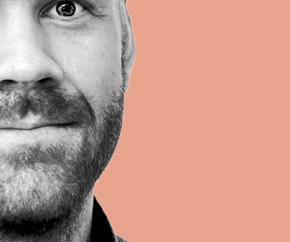


Sinterex is a last-mile manufacturing business. Our mission is simple; we make it where you need it. This mission contrasts radically with the current status quo of the manufacturing industry. Today, 72 per cent of global manufacturing capacity is located in just 10 countries.
Outside of these 10 countries, physical products and parts must be shipped (freight), stored (inventory) and distributed (delivery). We are building a distributed network of microfactories which use technologies such as 3D printing and robotics to produce products and parts on-demand at the point and at the time of need. Not only can we deliver products and parts cheaper and faster, we are also much greener.
Give us an overview of your funding and how you plan to utilise it.
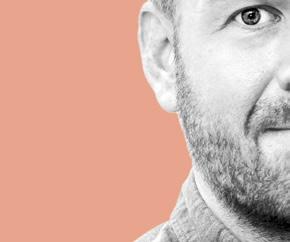
A ter receiving amazing support from two UAE-based angel investors, we are now working on our first institutional funding round. The round will be used to develop version 2.0 of our technology platform. We will build out two new microfactories. Also we will build out our sales and marketing team.
72%
How has the Mohammed Bin Rashid Innovation Fund and accelerator helped you with your business?
The fund has been a huge boost to our business. Firstly, we were able to get support from local mentors and experts to help refine our business o ering and focus. Secondly, the demo day enabled us to present to a room full of potential investors.
PERCENTAGE OF GLOBAL MANUFACTURING CAPACITY LOCATED IN JUST 10 COUNTRIES
Economic uncertainty puts enormous pressure on cybersecurity startups already struggling to break into a crowded market. Meanwhile, as cyberattacks grow more prevalent, the need for innovative solutions from startups is greater than ever. These conditions pose challenges for nascent companies and their potential customers. So, how can these up-and-coming businesses navigate the storm?
Tough economic times force nearly all organisations to tighten budgets and do more with less, and cybersecurity isn‘t

immune to these pressures. However, with pressure comes opportunity – the opportunity to partner with strategic investors, which can build value that will serve as the foundation for your startup‘s future success.
A strategic investor, usually a larger company in the same industry, will choose a partnership because of their interest in that business. Beyond capital, they provide guidance on how the startup can grow and evolve in the cybersecurity market.
This guidance comes from subject matter experts who have been through their own business challenges and downturns in the security space, and can share advice based


on their experiences in unfavourable market conditions.
Strategic investors may also provide go-to-market enablement and/or validate a security startup‘s capabilities at a time when customers are generally more riskaverse. Cybersecurity startups with lowfriction deployment models can capitalise on the real estate of strategic investors to expand their sales pipeline, as direct sales opportunities become sparser in a tough economic climate.

The capital and guidance of a strategic investor can make a substantial di erence in growing a cybersecurity startup. However, it‘s imperative you choose the right strategic investor that aligns with your company’s values and goals. Where does









your business need help? Which strategic investors have the resources and expertise to provide it? What vision do you have for your technology and how it will help solve customers’ problems in today’s evolving threat landscape?
Education is the first step in this process. Strategic investors have a wealth of public information available that can help startups develop their pitch. You should evaluate the materials provided across investor relations pages, security product briefs, conference presentations, partnership and marketplace pages, and security industry analyst coverage. These resources can help ascertain whether the investor will be a good fit.

To help evaluate candidates, ask yourself the following questions:
Is the investor a cybersecurity market leader?
Do they have the customer base, mindshare within the ideal buyer persona, and technology to warrant investment in a deep partnership?
Where is this strategic investor going?
Does my startup’s product complement theirs, or is it likely to be competitive in the near term?
Who else are they working with? Are they strategically aligned with my company’s competitors in the security space?
Do they have any experience working or partnering with other cybersecurity companies?
Does the investor have a gap in their security platform that my company’s product is uniquely positioned to help them solve?

How is their platform built? Do they have the right architecture to enable seamless integration?
Does my company have shared customers that could validate the impact of an integration in the near future?
Who has this company invested in previously? Is there a healthy cadence of partnerships or are they more “one-o ” in nature? Is there market evidence indicating value that goes beyond a press release
Partnering with a strategic investor is different from working with a venture capital firm or angel investor. It’s important you not only find the right strategic investor but the right technology partner for your cybersecurity business.
With the information you’ve collected and your answers to the above questions, you’re well-prepared for a conversation with a potential strategic investor to review the technical aspects of your partnership.
Michael Sentonas, president at CrowdStrike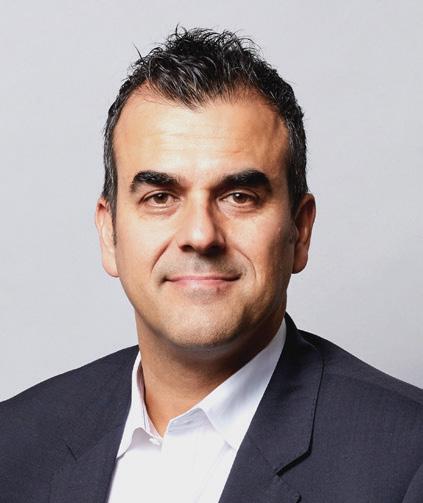
During this time, you can discuss integration hypotheses and seek feedback. Consider asking these questions:
How long does an integration typically take to build and go live?
How can we announce the partnership and maximise market impact?
What resources do you have in place to help accelerate go-to-market?
If their feedback is positive and there is a clear strategic fit, most strategic investors can provide non-production access to their platform with prepopulated data and documentation to scope potential integration anchor points. From here, you can evolve the partnership pitch and ask to be connected with the company’s product management team to get buy-in from the correct stakeholders.
As part of this process, you may consider providing incentives to drive goto-market prioritisation. Determine the typical revenue share structure within your partnership agreements, and see if there’s an opportunity to provide a more competitive revenue share based on your gross margin structure and the number of potential customers through the strategic investor.
The value of your strategic partnership will depend on e orts from both your company and the investor. Bi-directional e ort fuels long-term stability.
You should work with your partner to create six-to-12-month, integration and go-to-market plans, and establish mutually beneficial goals at the outset of the investment.
Prioritise your relationship, meet regularly, and monitor your progress toward these goals.
Economic uncertainty is tough for cybersecurity startups, but you don‘t have to weather the storm alone. Strategic investors are invaluable for helping these startups succeed and provide much-needed technology to organisations defending against cyberattacks.
“The value of your strategic partnership will depend on e orts from both your company and the investor. Bi-directional e ort fuels long-term stability. You should work with your partner to create six-to12-month, integration and go-to-market plans, and establish mutually benefi cial goals at the outset of the investment”A STRATEGIC INVESTOR, USUALLY A LARGER COMPANY IN THE SAME INDUSTRY, WILL CHOOSE A PARTNERSHIP BECAUSE OF THEIR INTEREST IN THAT BUSINESS
It was recently reported that leading US technology venture capitalists (VCs) such as Andreessen Horowitz, Tiger Global and IVP have been flying out teams of executives to Saudi Arabia, the UAE and Qatar.
Eight thousand miles might be considered a long way to travel for any business trip with virtual meetings now being accepted as the norm in these circumstances, but one may argue that there’s no substitute for in-person interaction. A confluence of the effects of the crisis in Ukraine, entrenched inflation and rising energy costs means that downside risks dominate the outlook producing tighter financial conditions.
As such traditional North American and European backers are having to contend with a severe economic downturn that has forced them to retreat from private investments.

Venture capitalists are sitting on a record $300bn of “dry powder” we have recently learned. This is money raised that has not yet been deployed. But many are struggling to find lucrative investments in startups and will be unable to raise a new venture fund. Cash that VCs put into startups has fallen more than 50 per cent over the past 12 months, according to a report by data provider Crunchbase in April. Meanwhile, in the MENA region, cash-rich countries continue to seek to diversify their economies, away from petro-based businesses into technology-led enterprises.
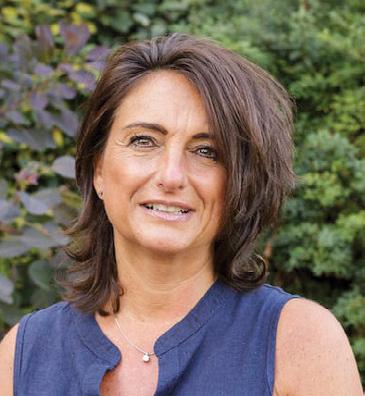
It seems that the present tough economic
environment, in some ways resonant of the fuel crisis and stagflation of the early 1970s afflicting many Western economies, has magnified the lustre and economic appeal of the MENA region, identified as the “most liquid place on the planet right now”, according to the head of a $1bn venture fund.
Certainly, such recent events as the failure of the Silicon Valley Bank, together with a myriad of economic concerns plaguing Wall Street and San Francisco, means that ready access to funding is very alluring. The abundance of family money in the MENA region, and growing government financial and other forms of support for startups, combined with the region’s need to drive economic diversification, has put the region in the spotlight.
The area is also hungry for opportunities in the form of new goods and services and for growing businesses across many different sectors. The region’s reform programmes and diversification initiatives further enhance the broader economic environment in which new businesses can thrive. In short, what we are presently witnessing across MENA region is a rapid prototyping of a new, and very sustainable VC ecosystem, backed by enviably solid sovereign wealth funds. Beyond the appeal of the region’s rock-solid economic foundations lies a culture of innovation underpinned by a young population that is digitally aware and connected.
I have been hugely encouraged by what I have witnessed within our own alumni community in the MENA region. The inaugural London Business School (LBS) MENA startup competition held at the end of last year provided an additional spur to the support and resources that LBS already provides regional startups.
Early-stage incubators are at the heart of the region’s economy, with the Department of Economic Development in Dubai stating that startups now make up 50 per cent of the total companies registered in the emirate and employ half its workforce.
My response therefore to the news that big name VCs from the US are making the region their target destination to raise capital is that these companies should be encouraged to consider such initiatives as the start of a long-term relationship with the region. Think of the MENA region in terms of the work of an incubator: partner with the region, support the budding ecosystems and individual startups to take confident strides ahead, and help them develop their talents. Part of me protests that this approach is perhaps somewhat overdue. On the other hand, however, it is better late than never.
The abundance of family money, government and financial support for startups complemented by the focus on economic diversification has put the region in the spotlightJane Khedair, executive director of the Institute of Entrepreneurship and Private Capital at London Business School
STARTUPS MAKE UP 50% OF THE TOTAL COMPANIES REGISTERED IN THE EMIRATE, EMPLOYING HALF ITS WORKFORCE, ACCORDING TO DUBAI’S DEPARTMENT OF ECONOMIC DEVELOPMENTIllustration: Getty Images/Bull's Eye
Revolutionary, new out-of-home (OOH) advertising medium, powered by innovative technology.




This unique and globally patented Escalator Step Branding Solution that gives brands an unrivaled opportunity to connect with audiences.




